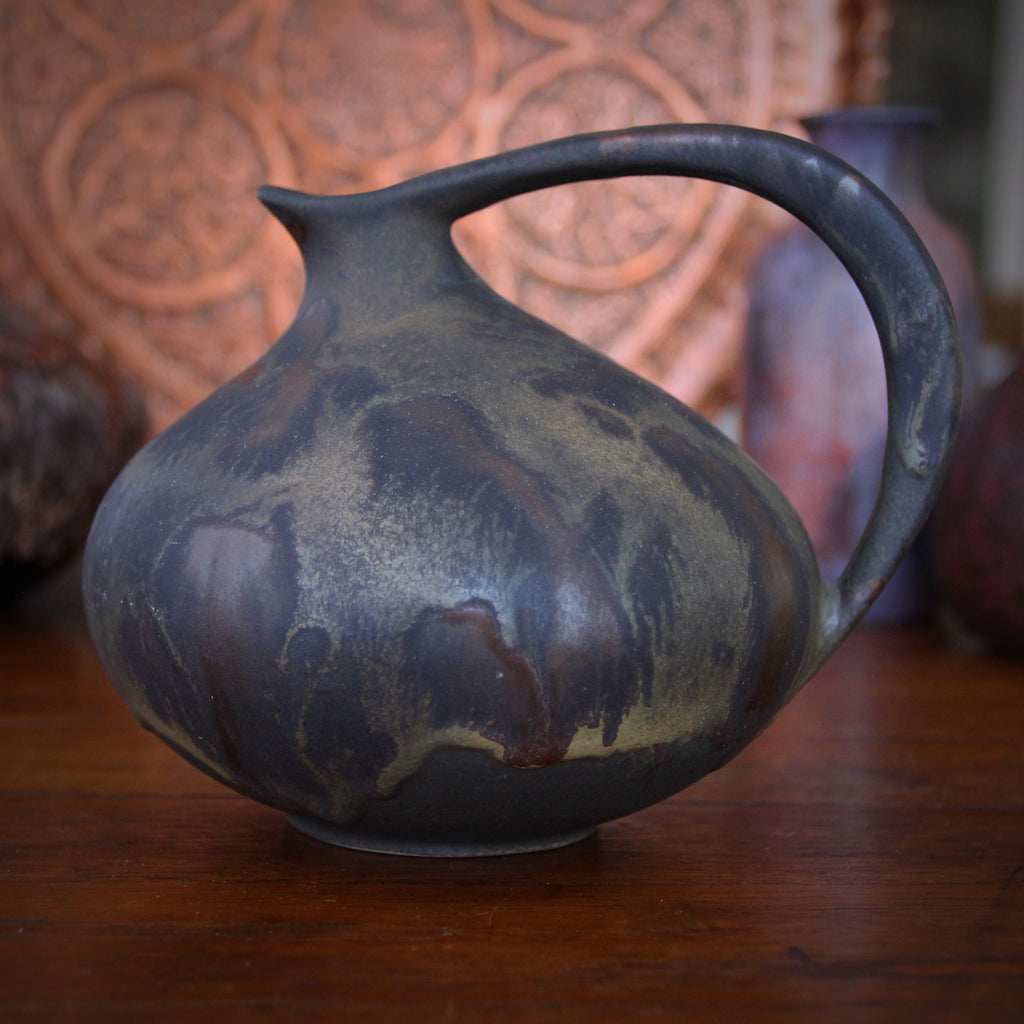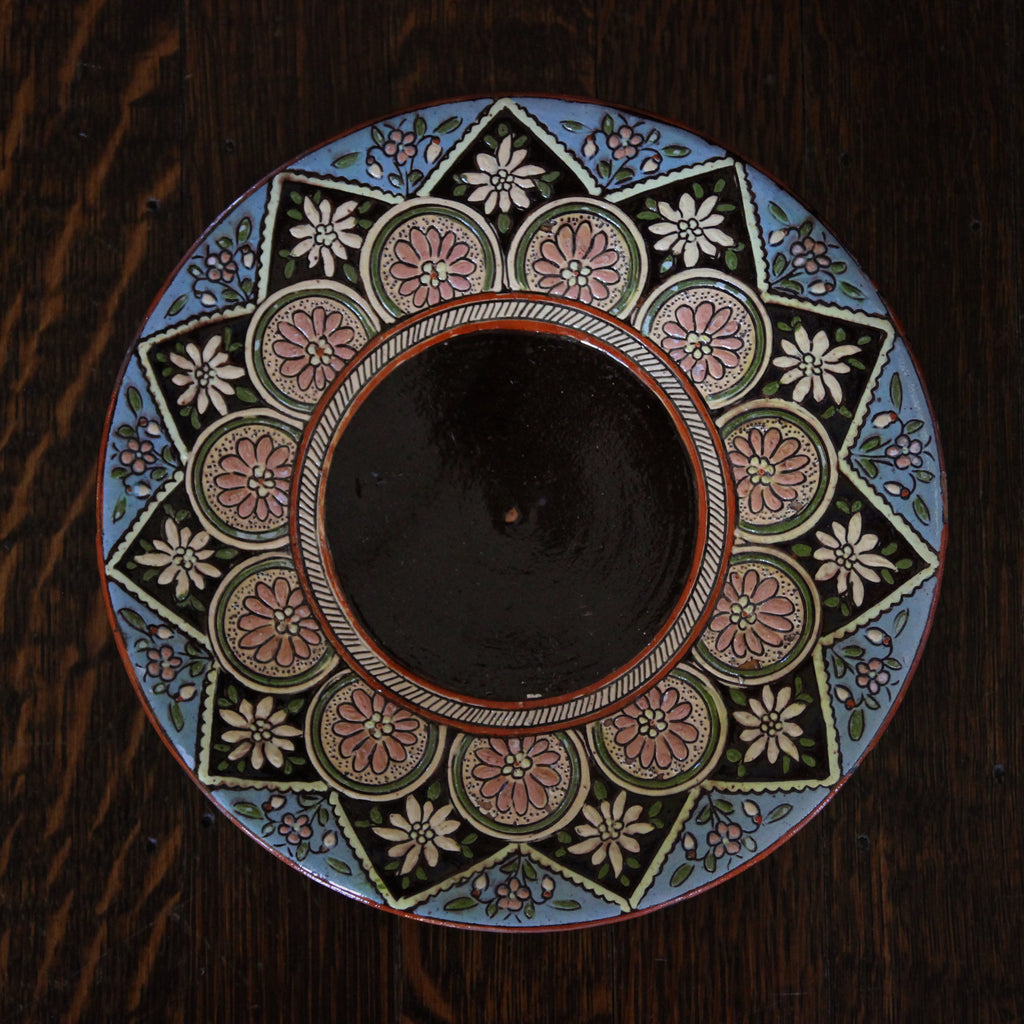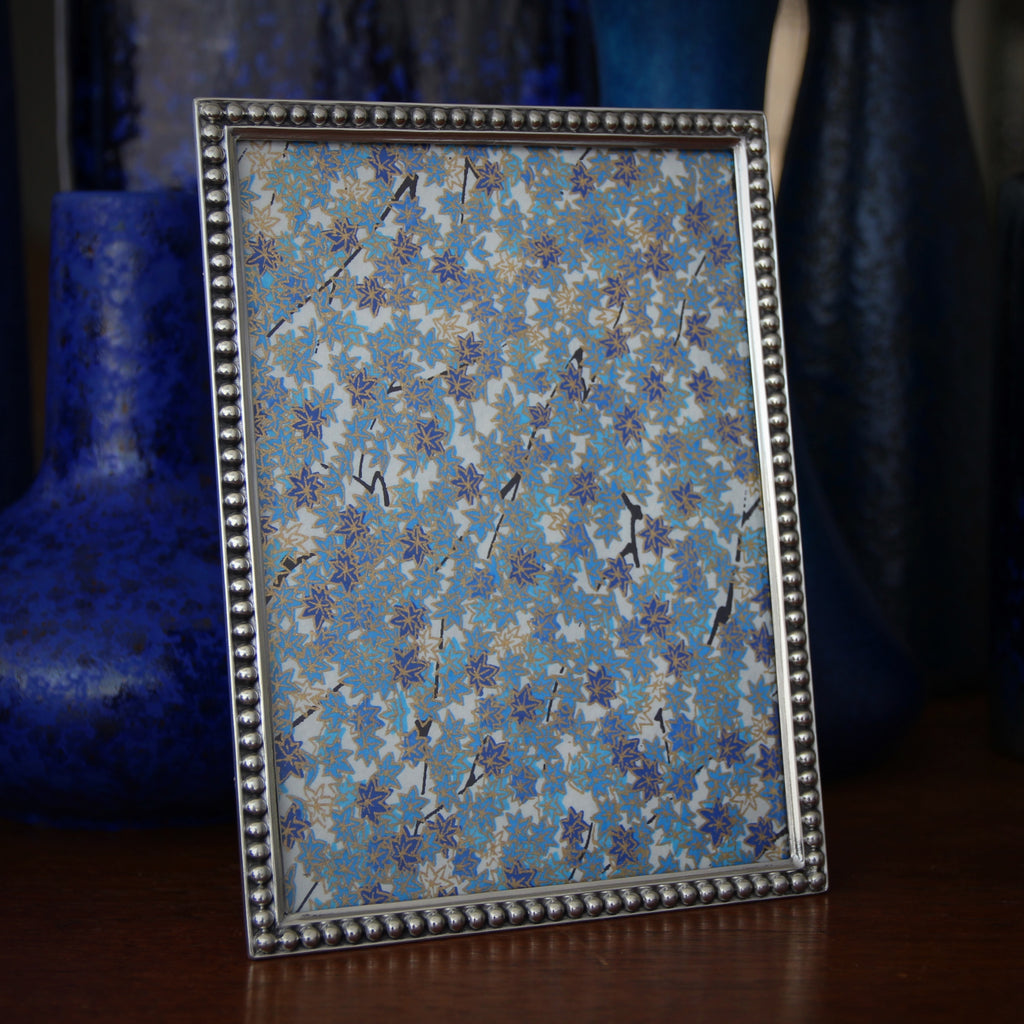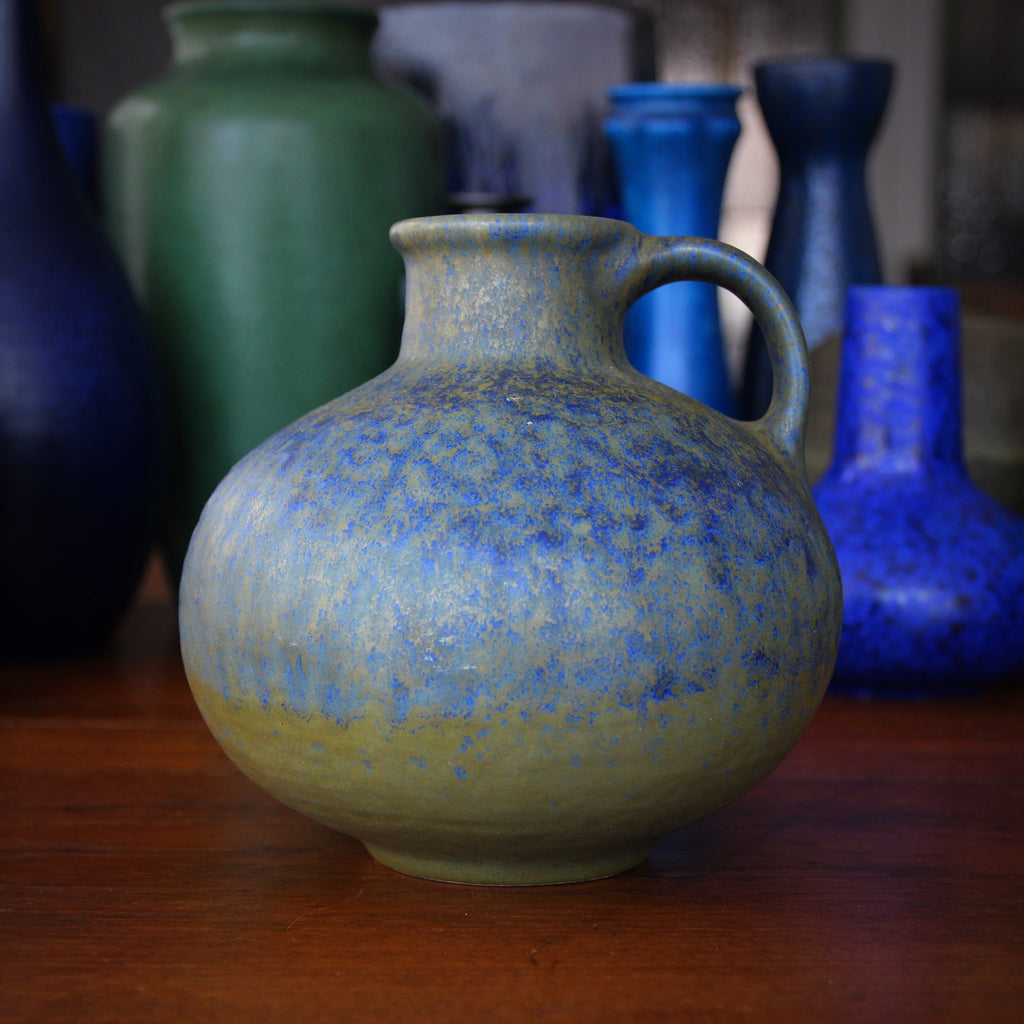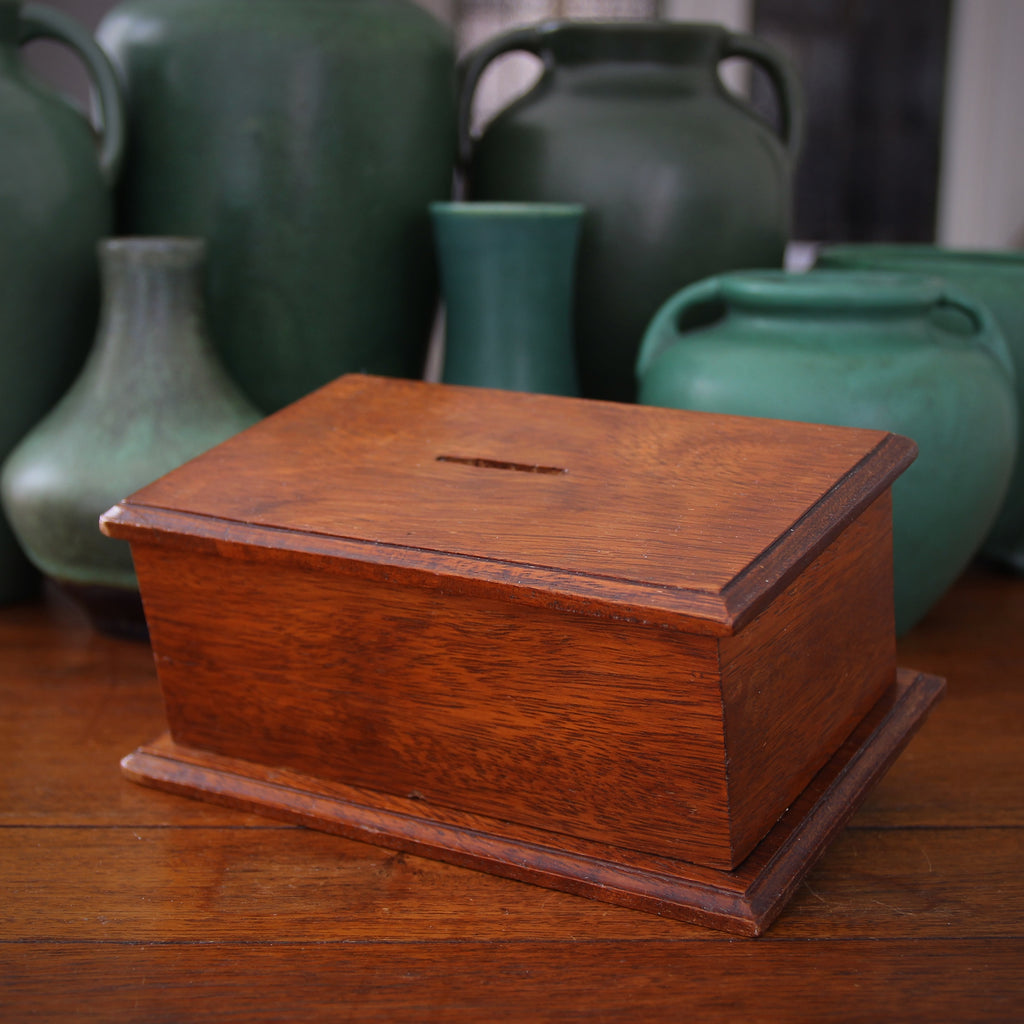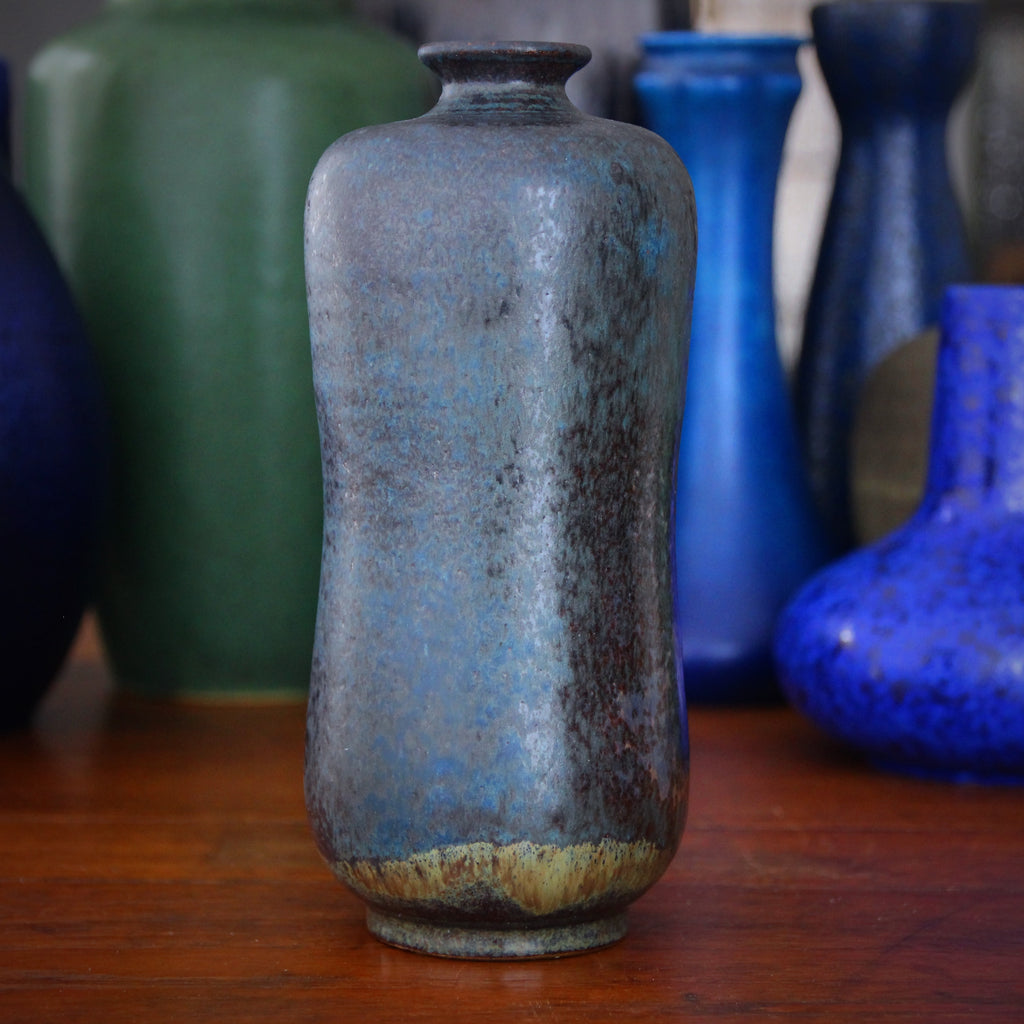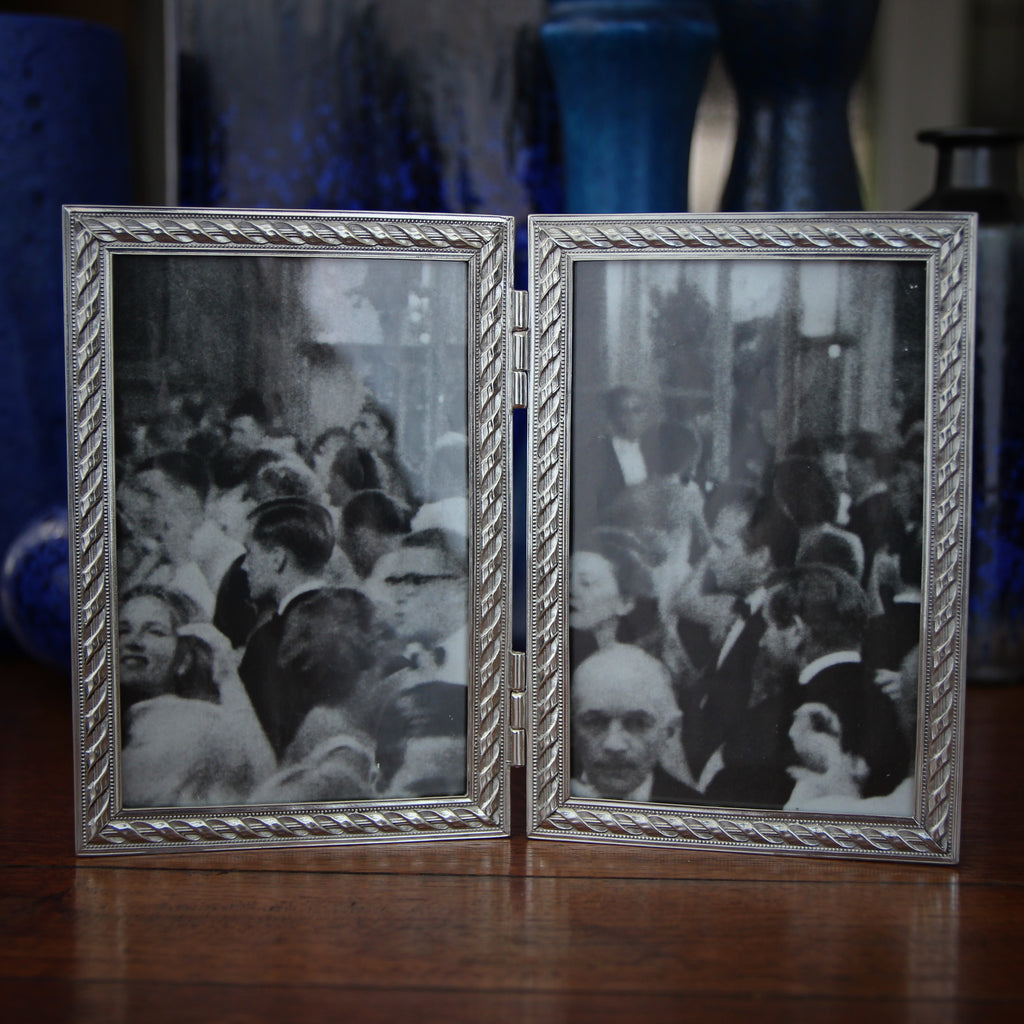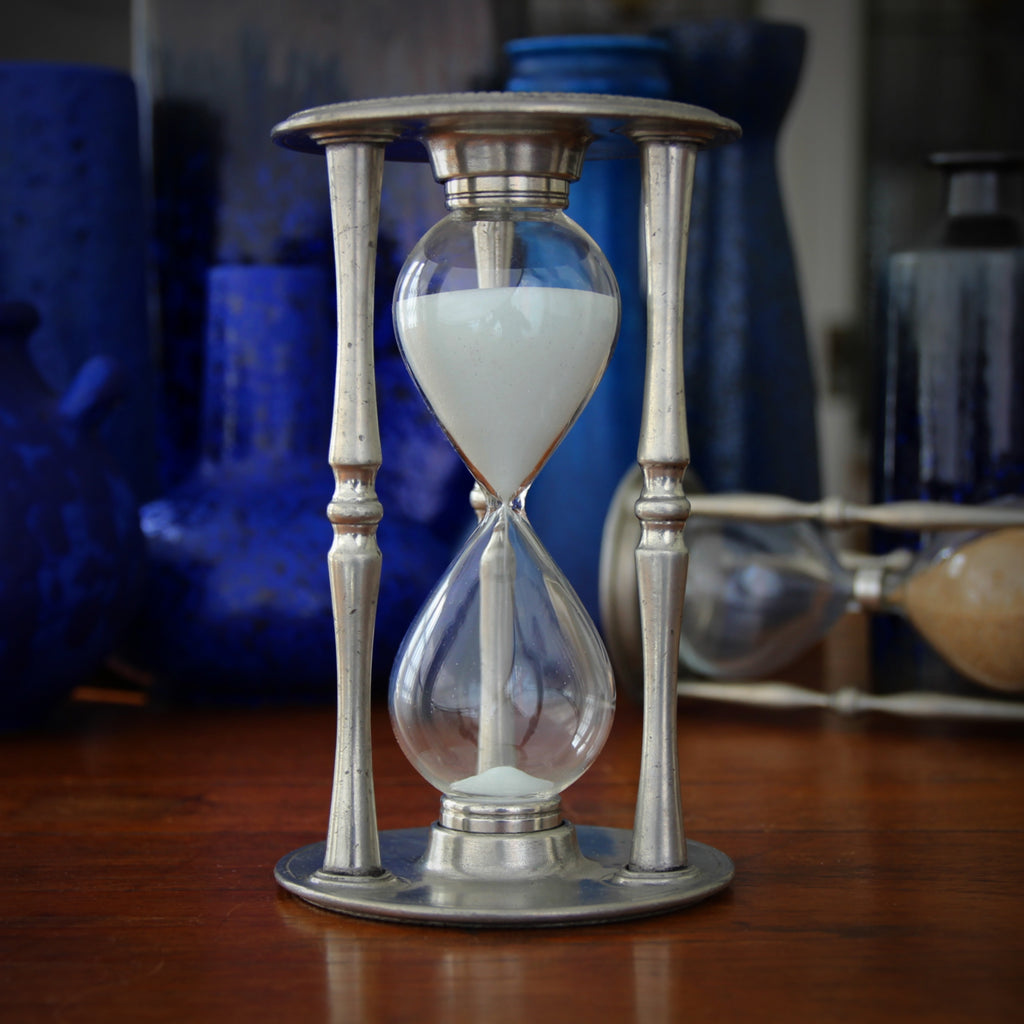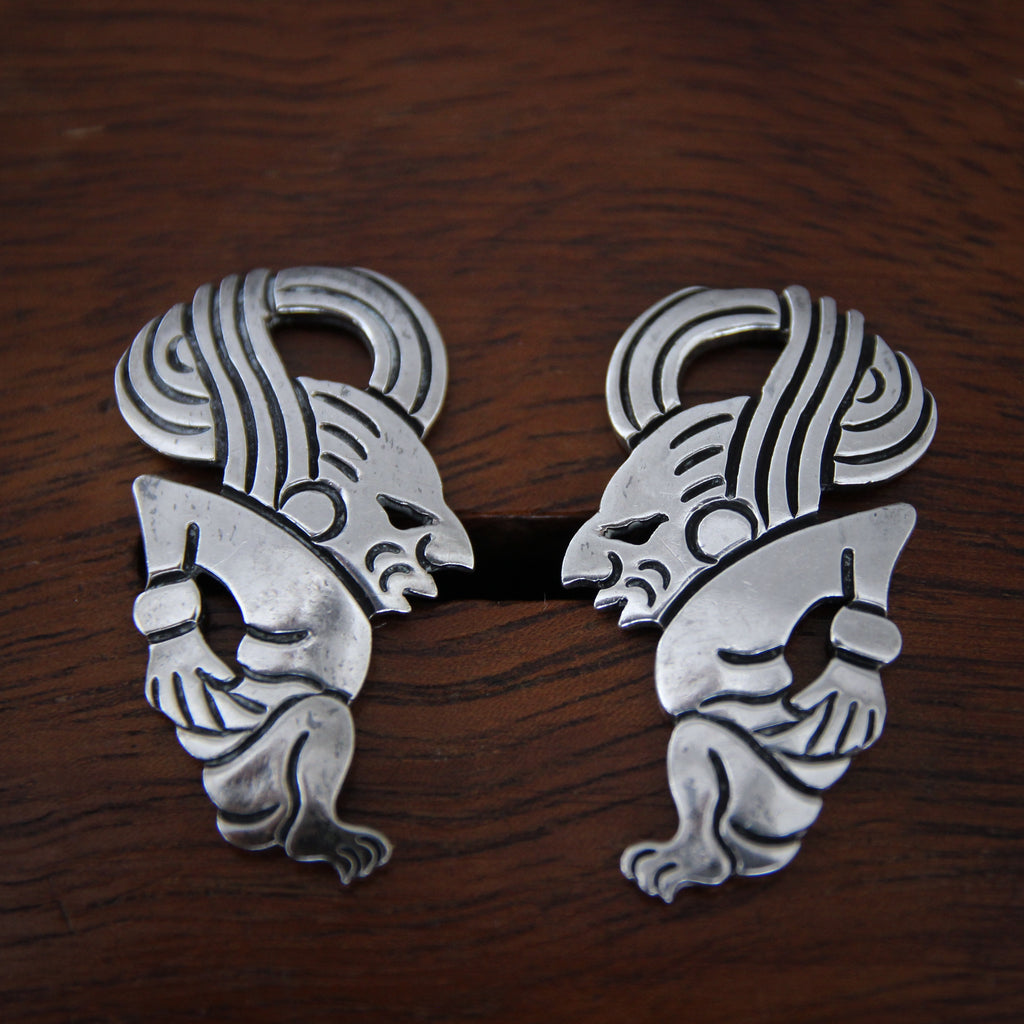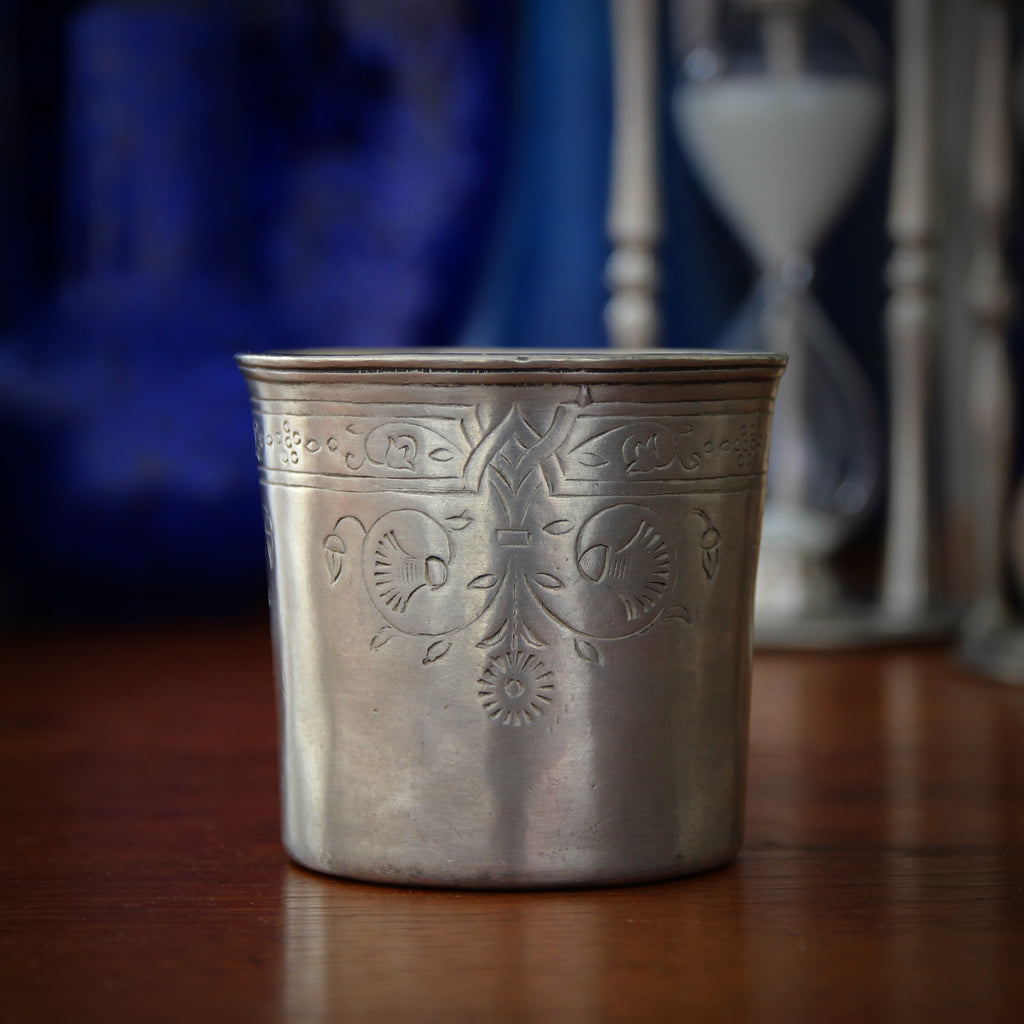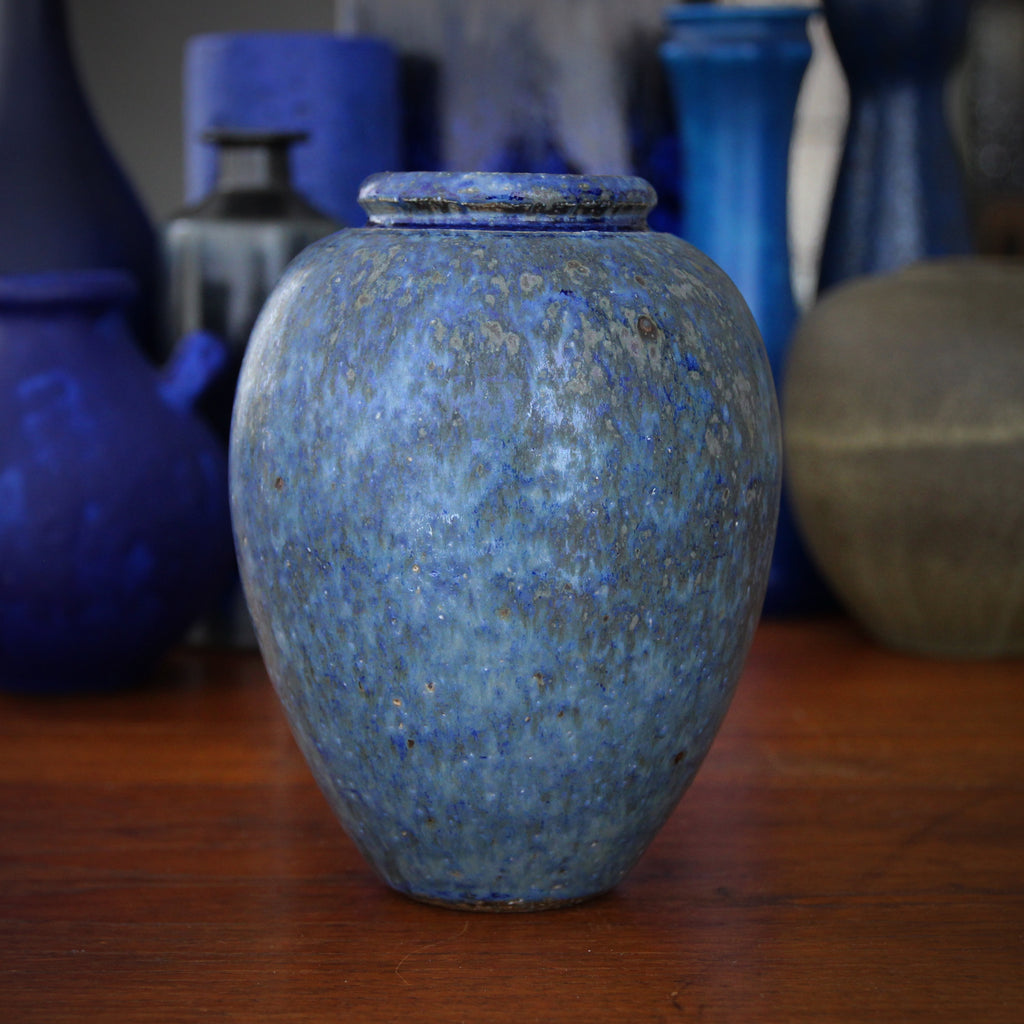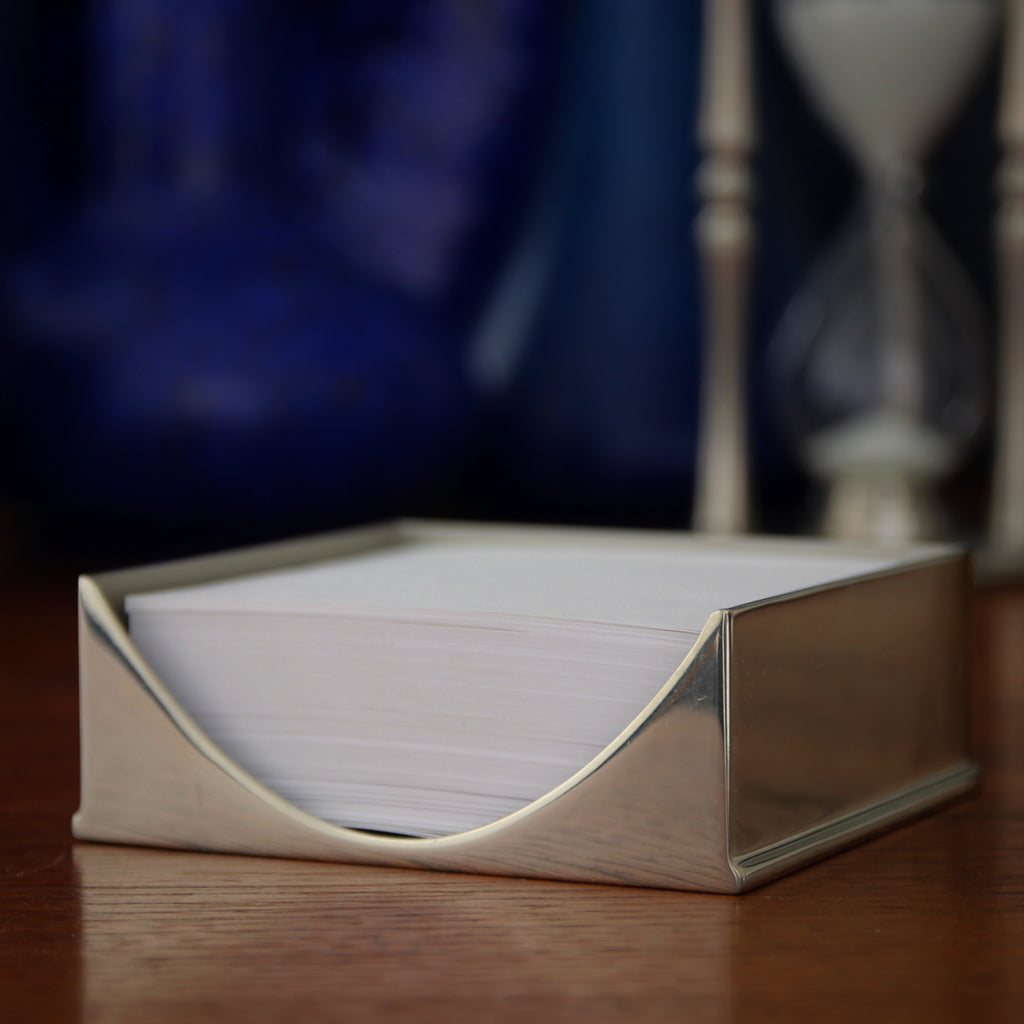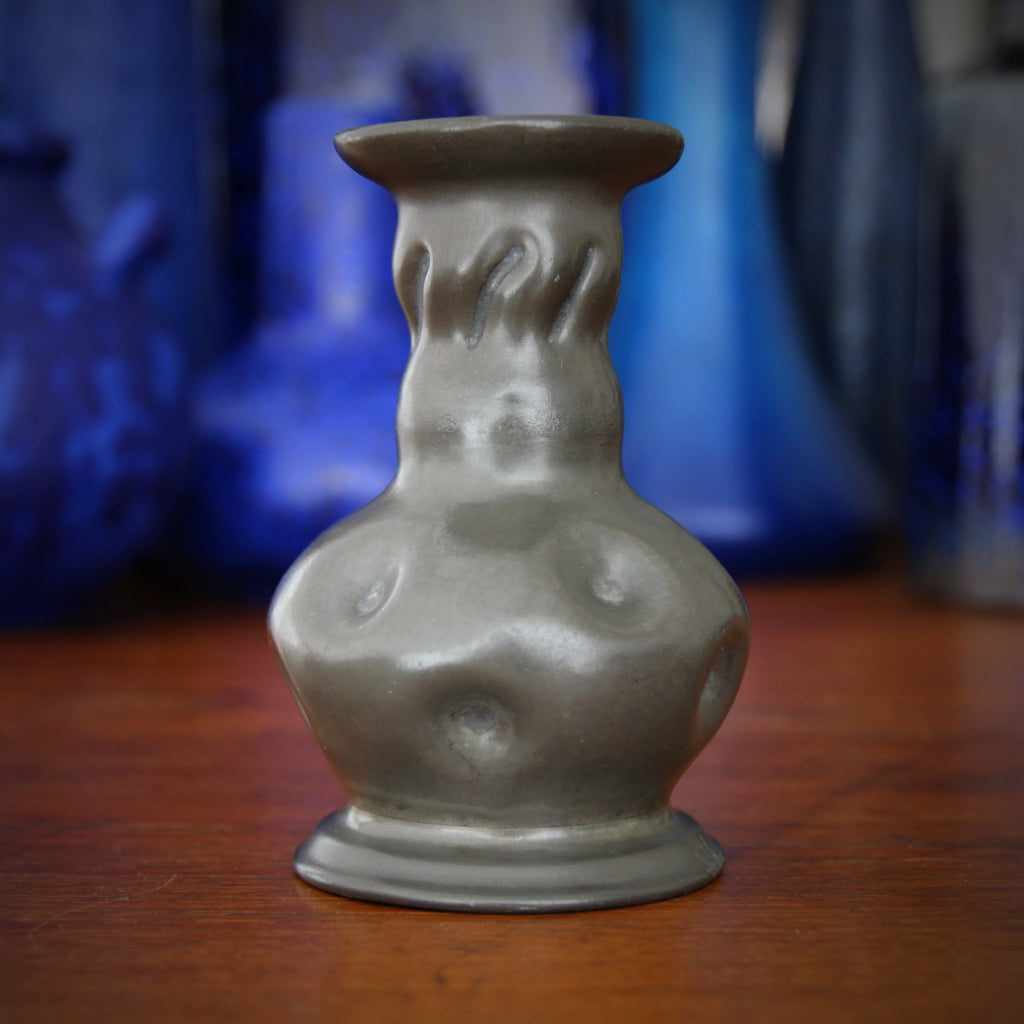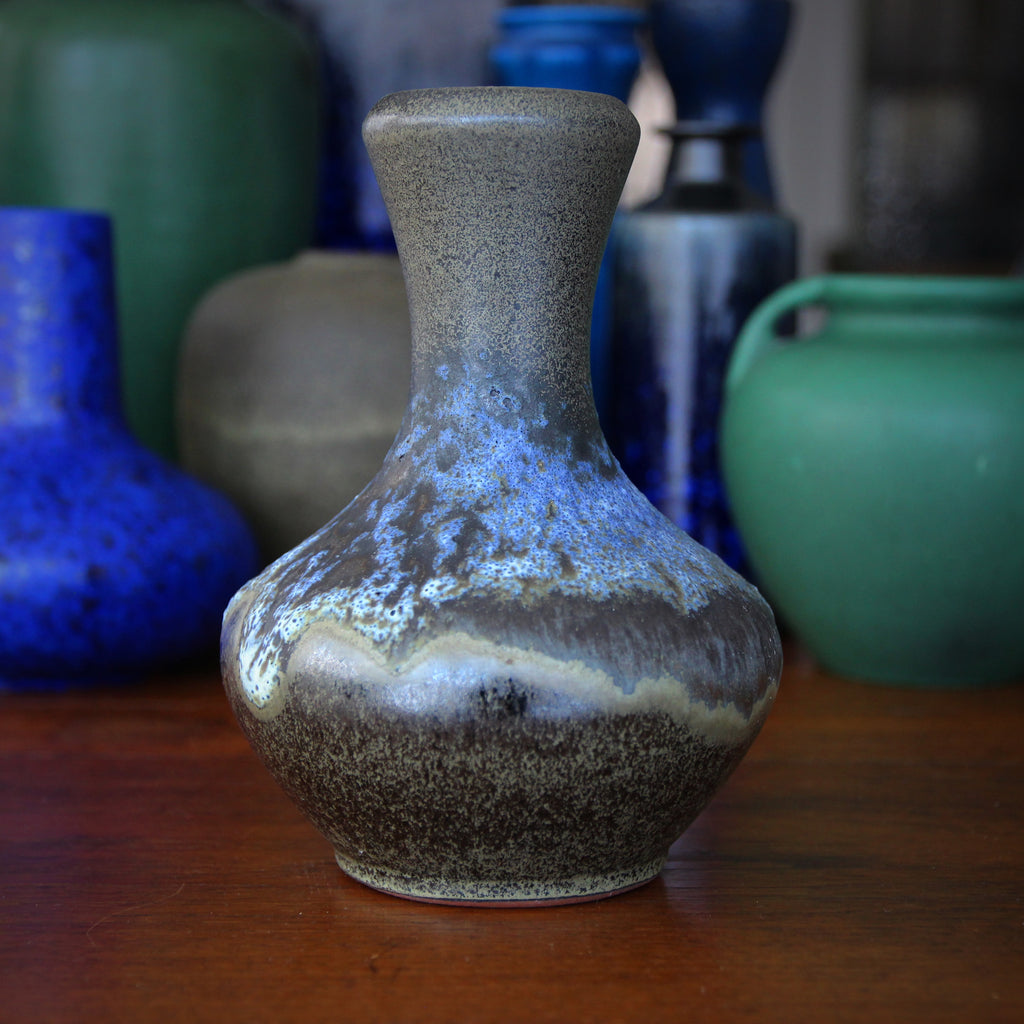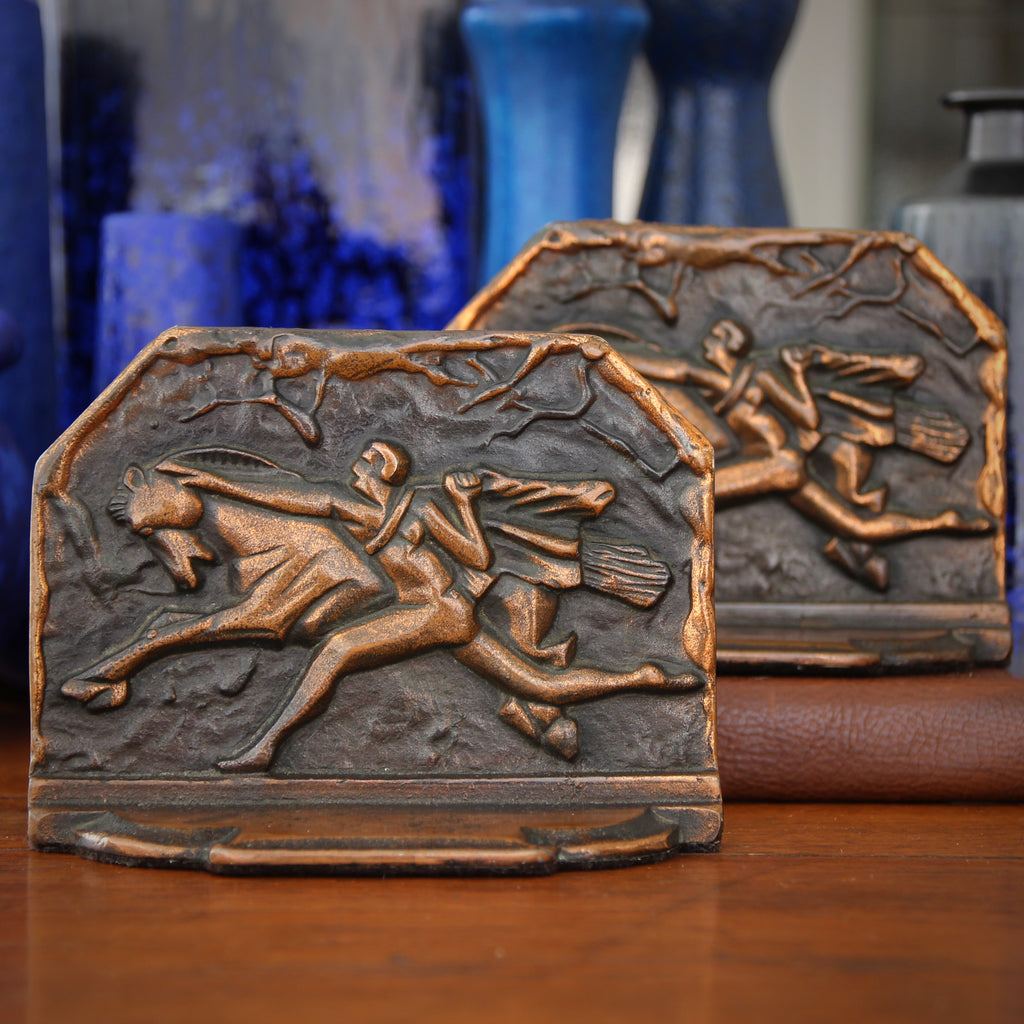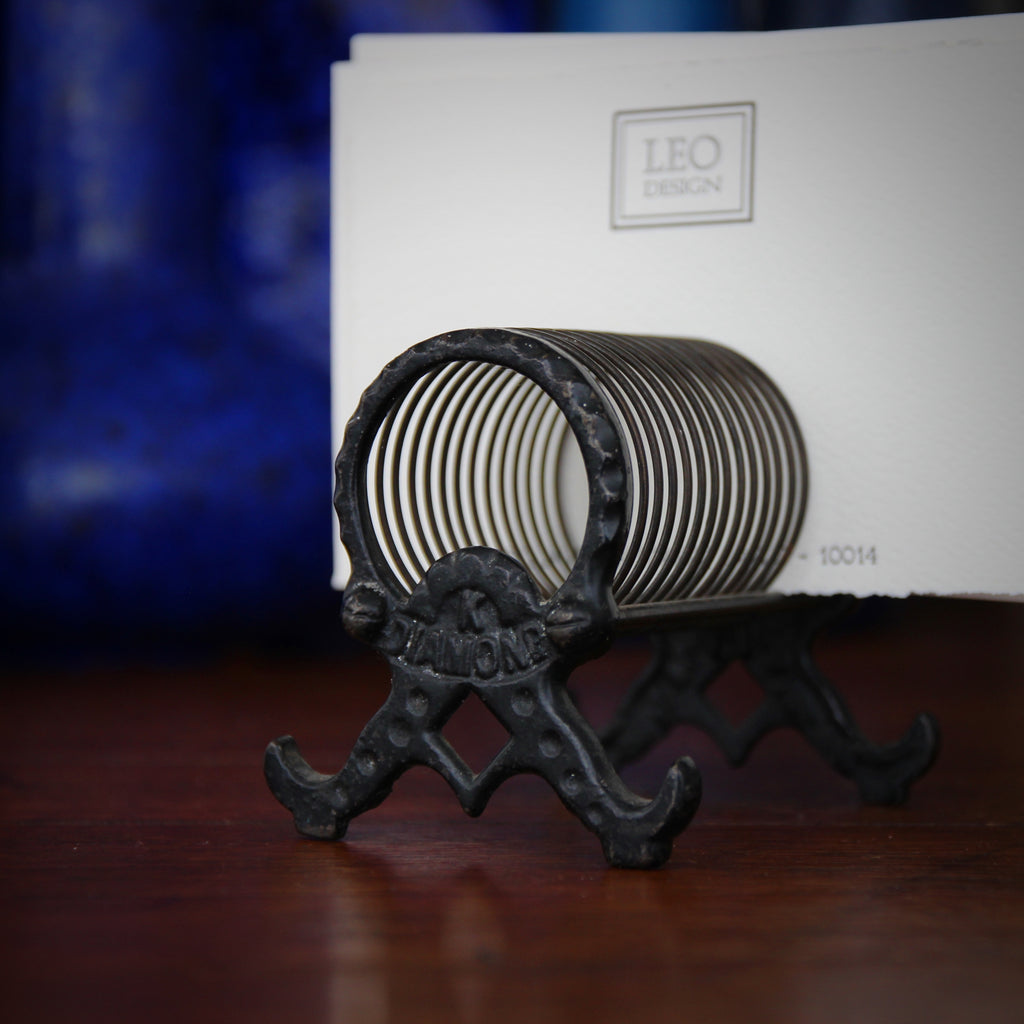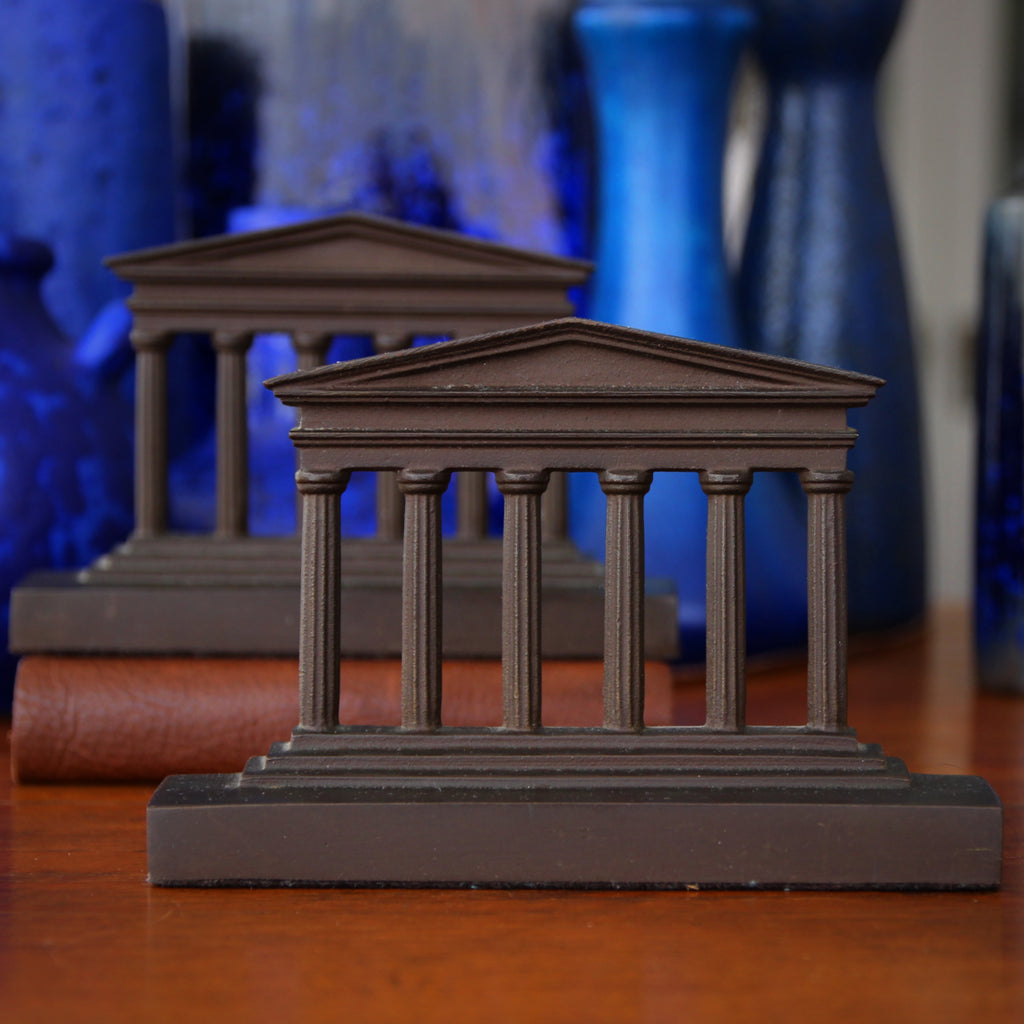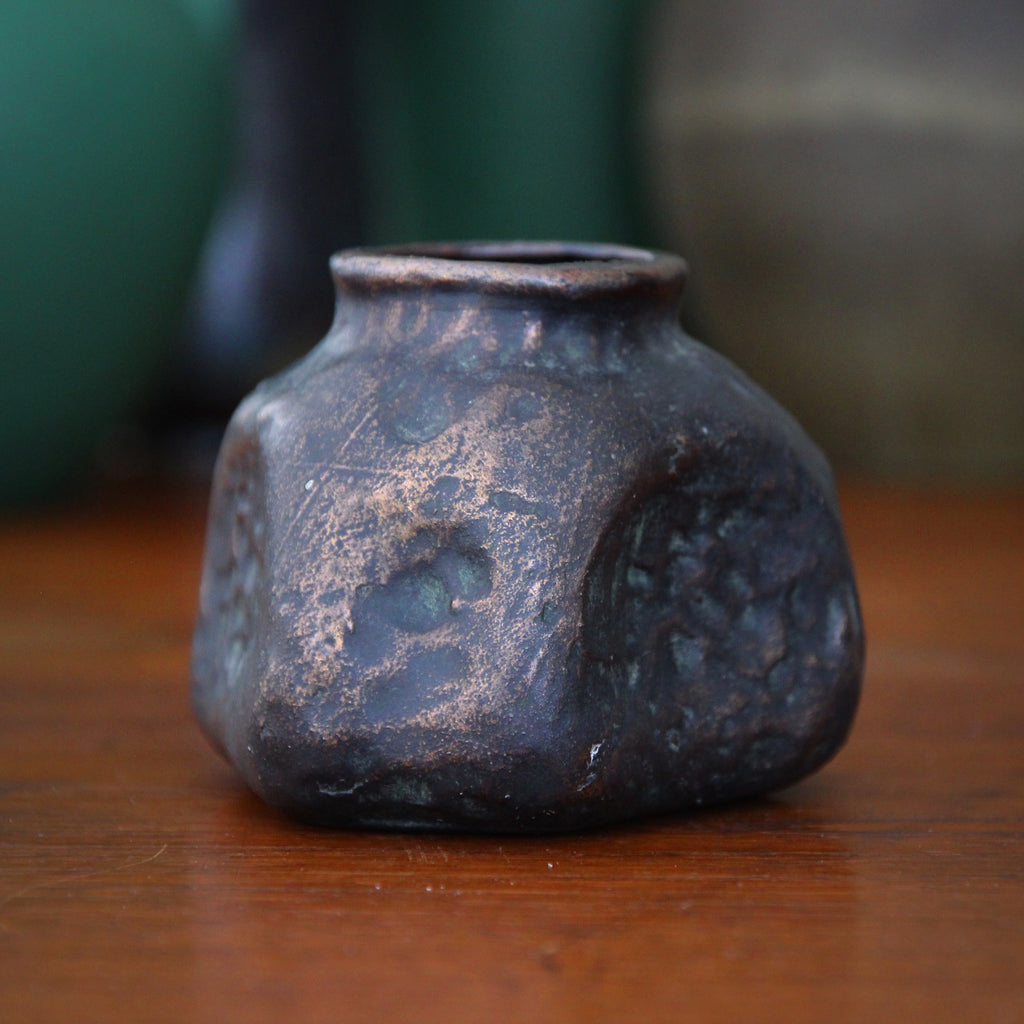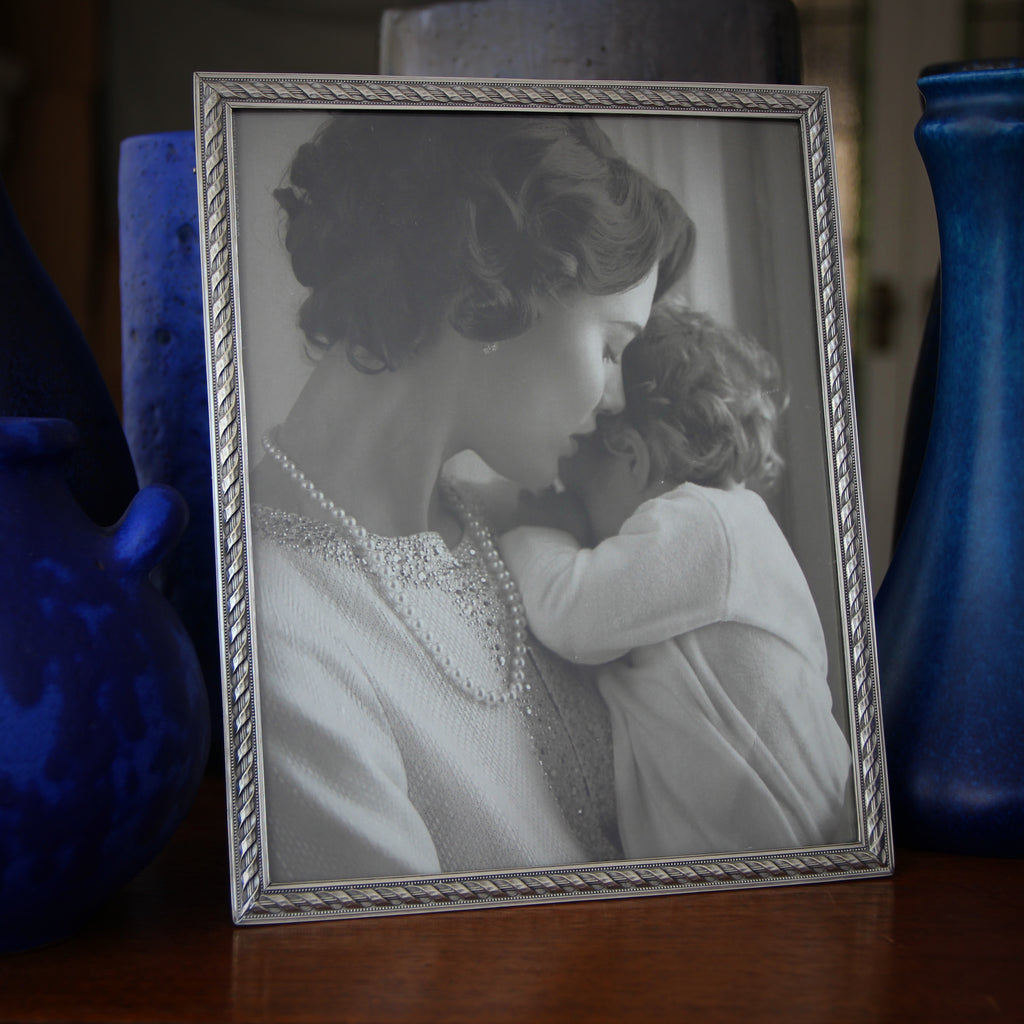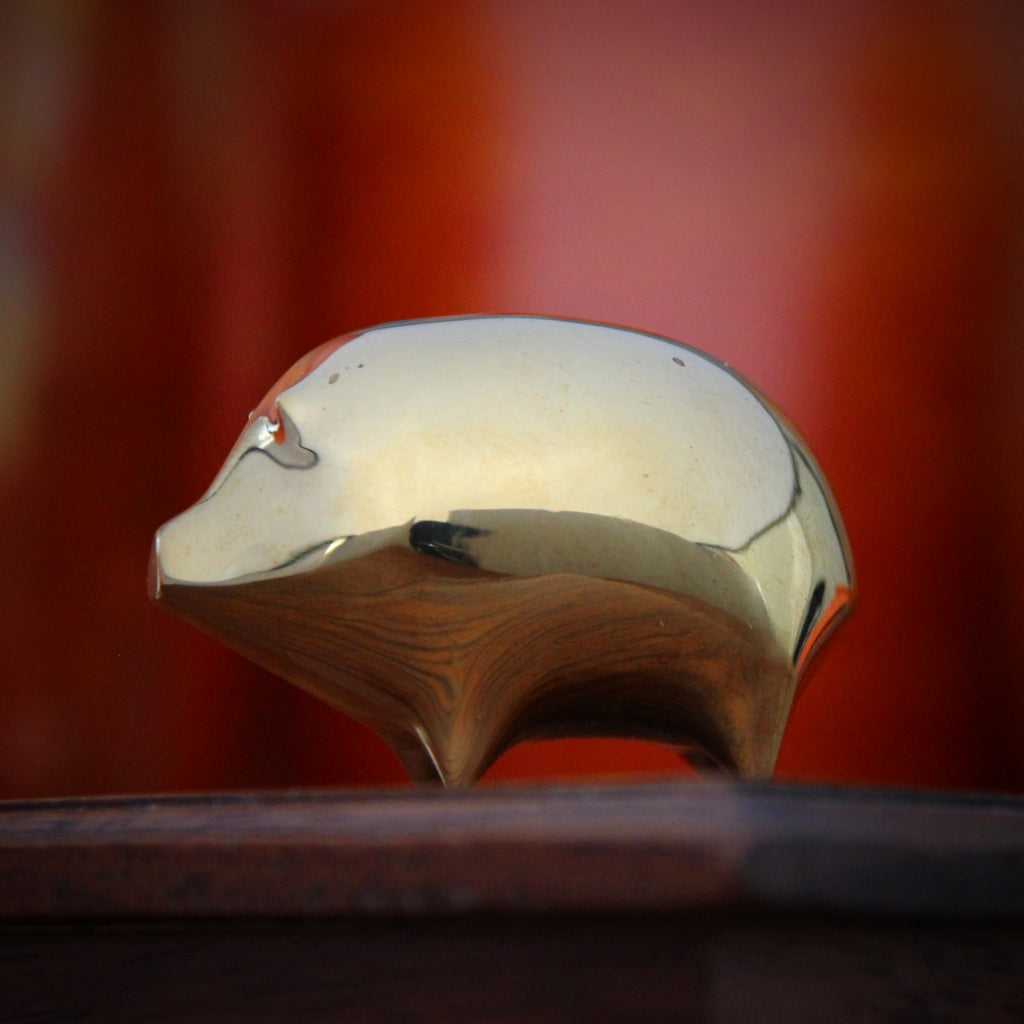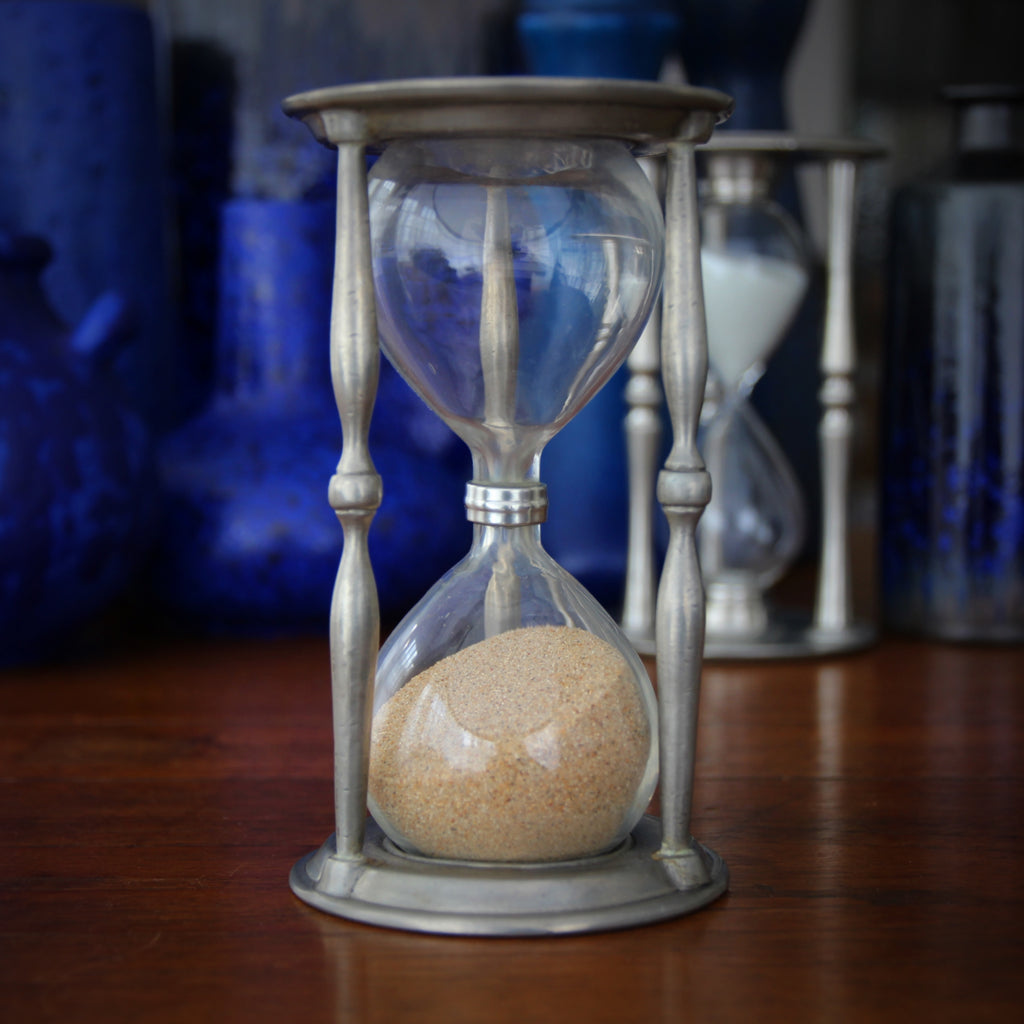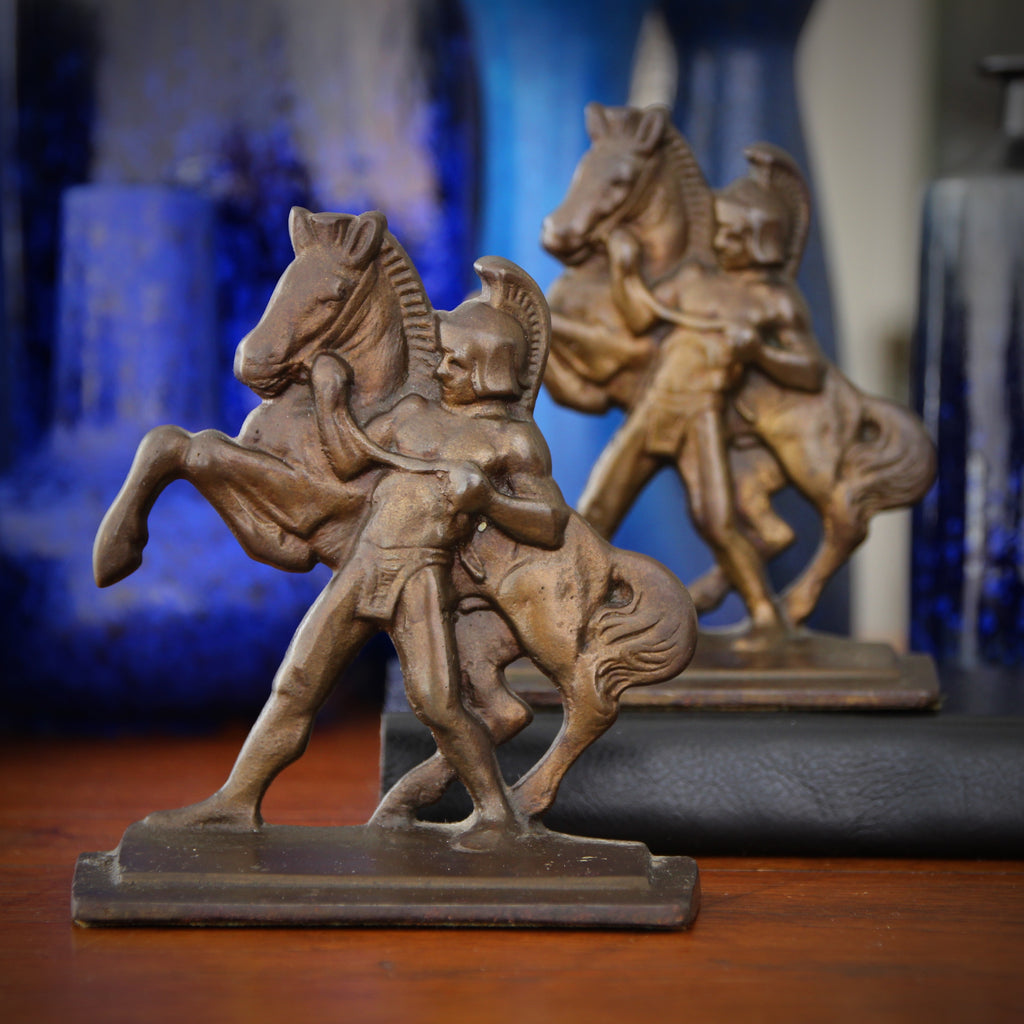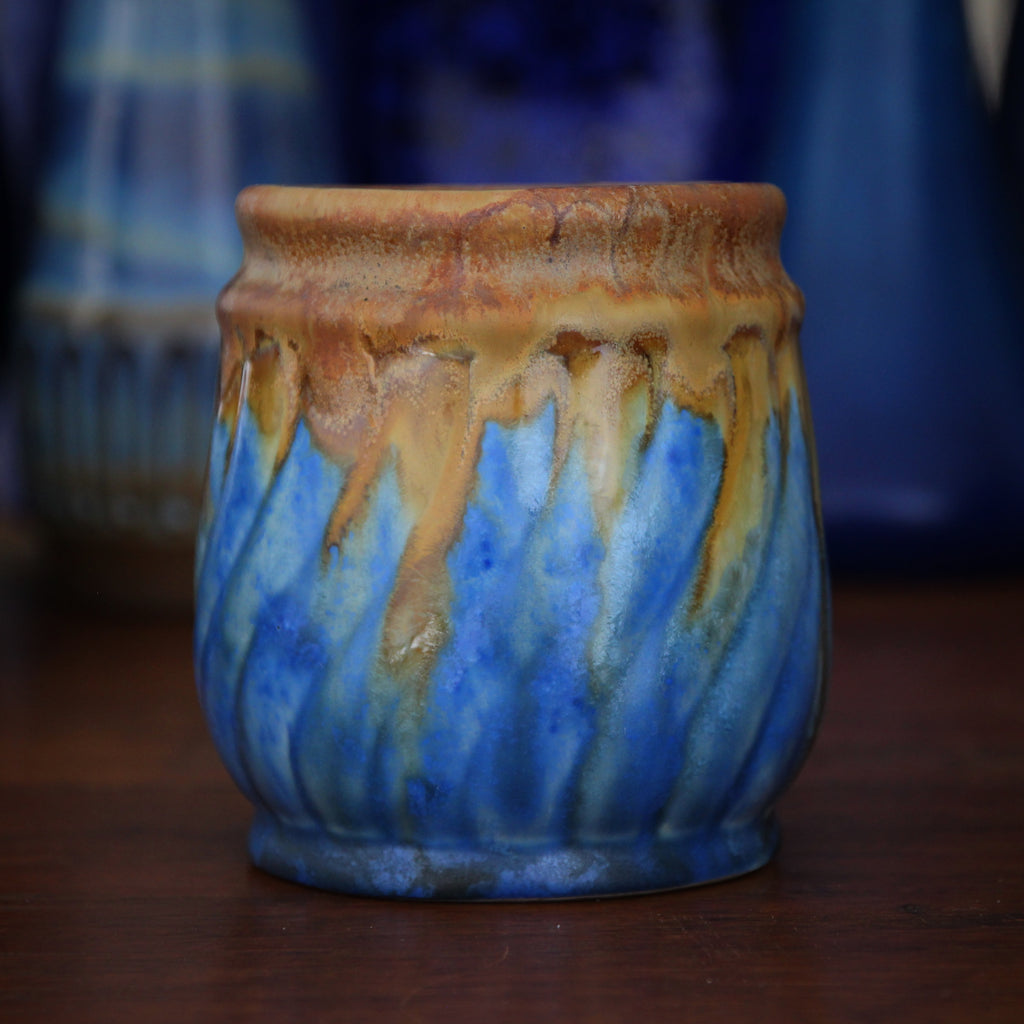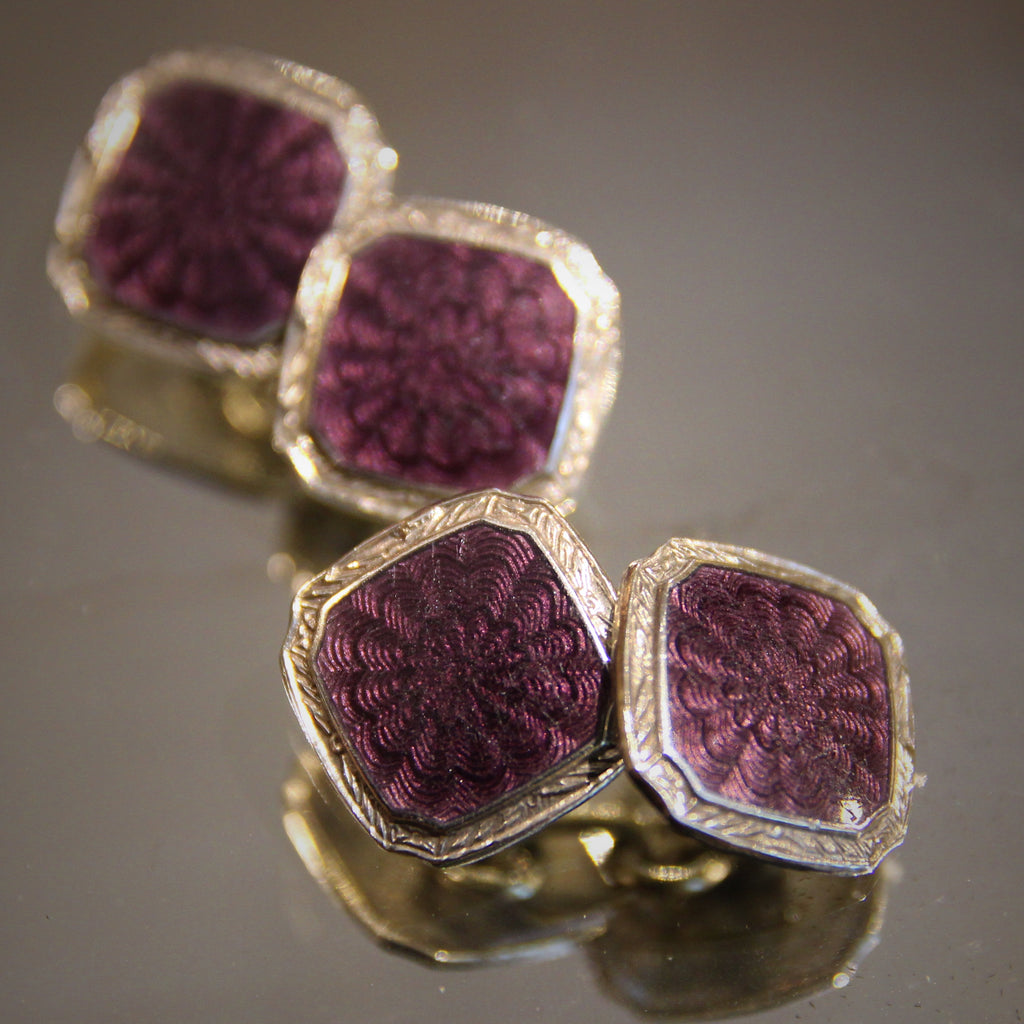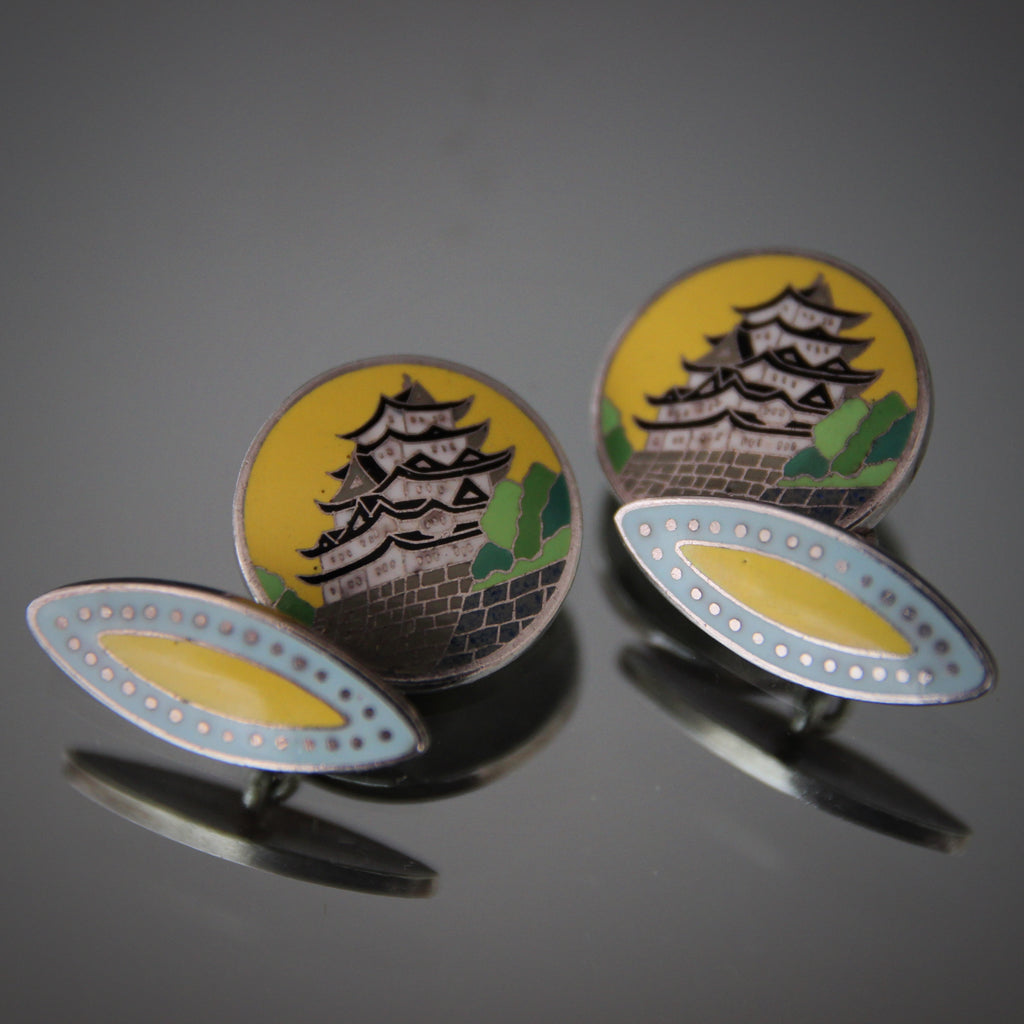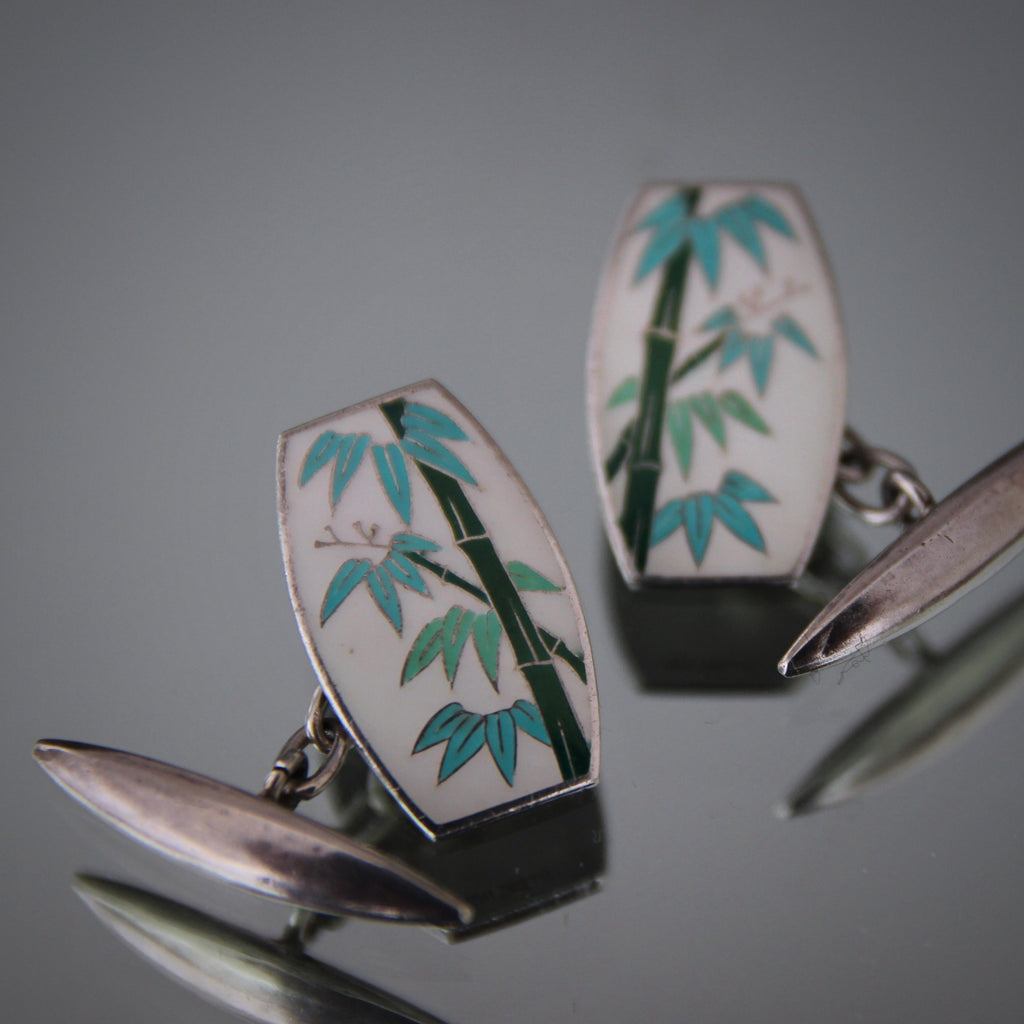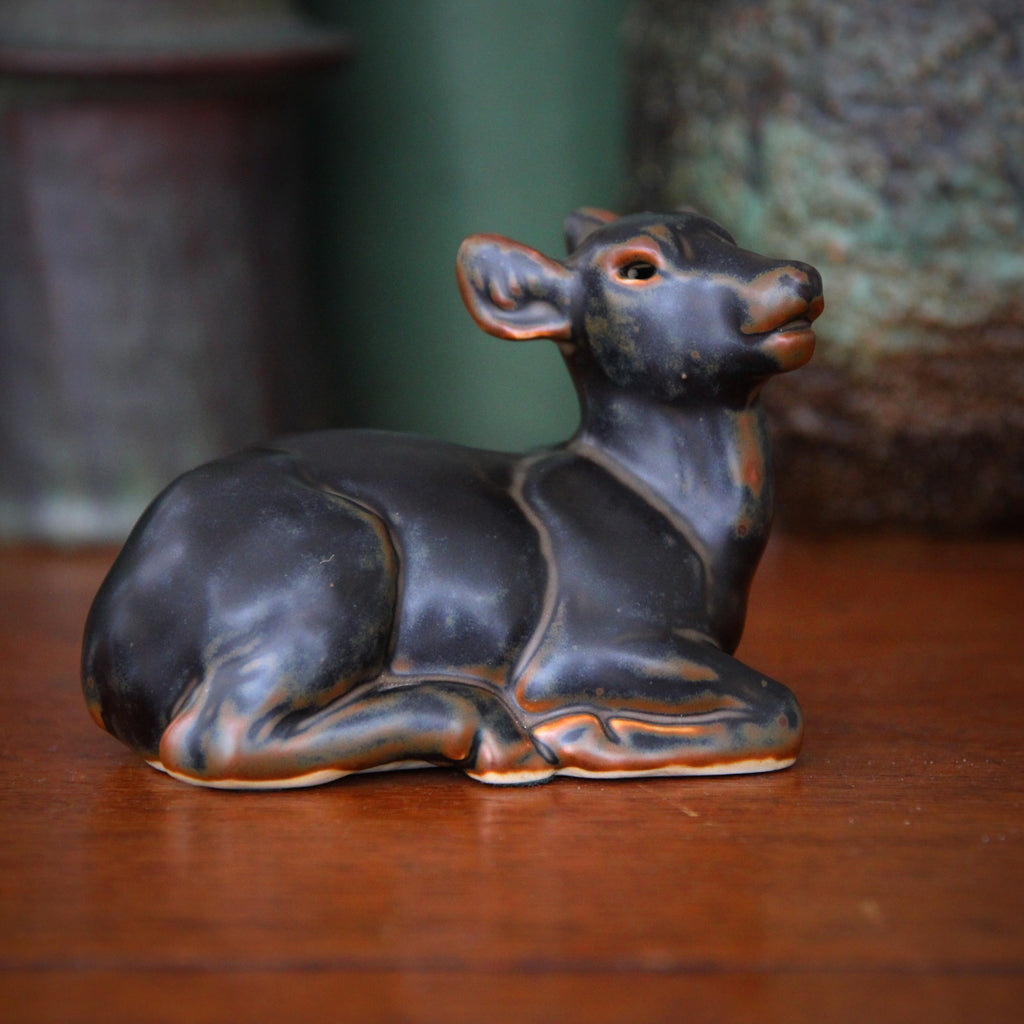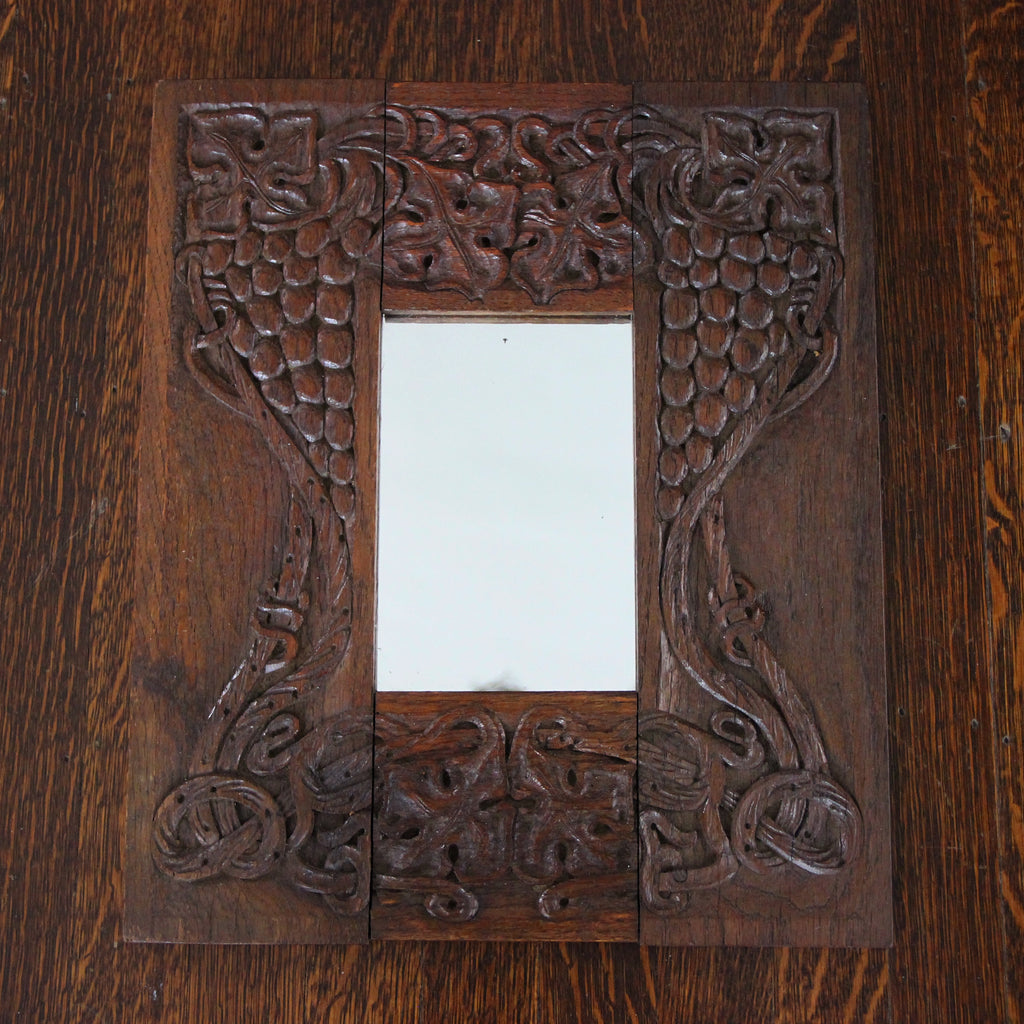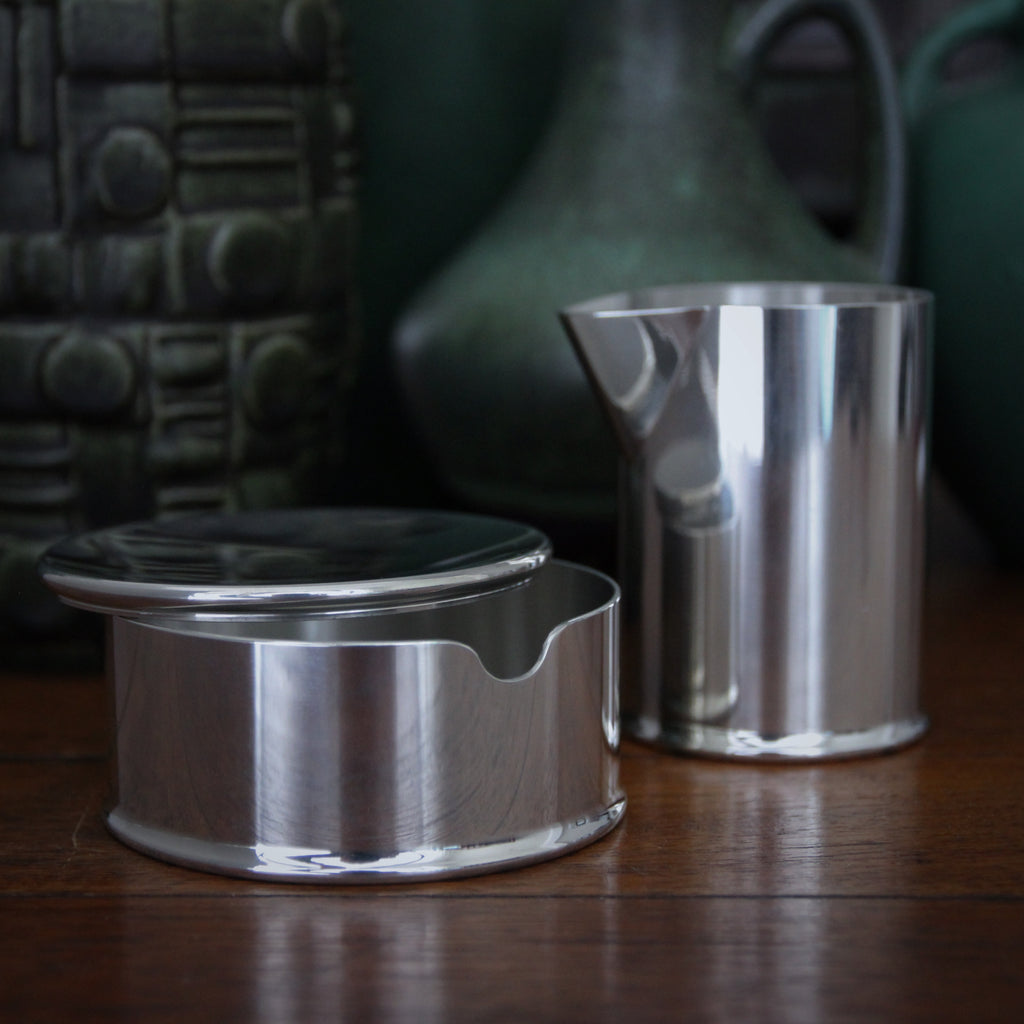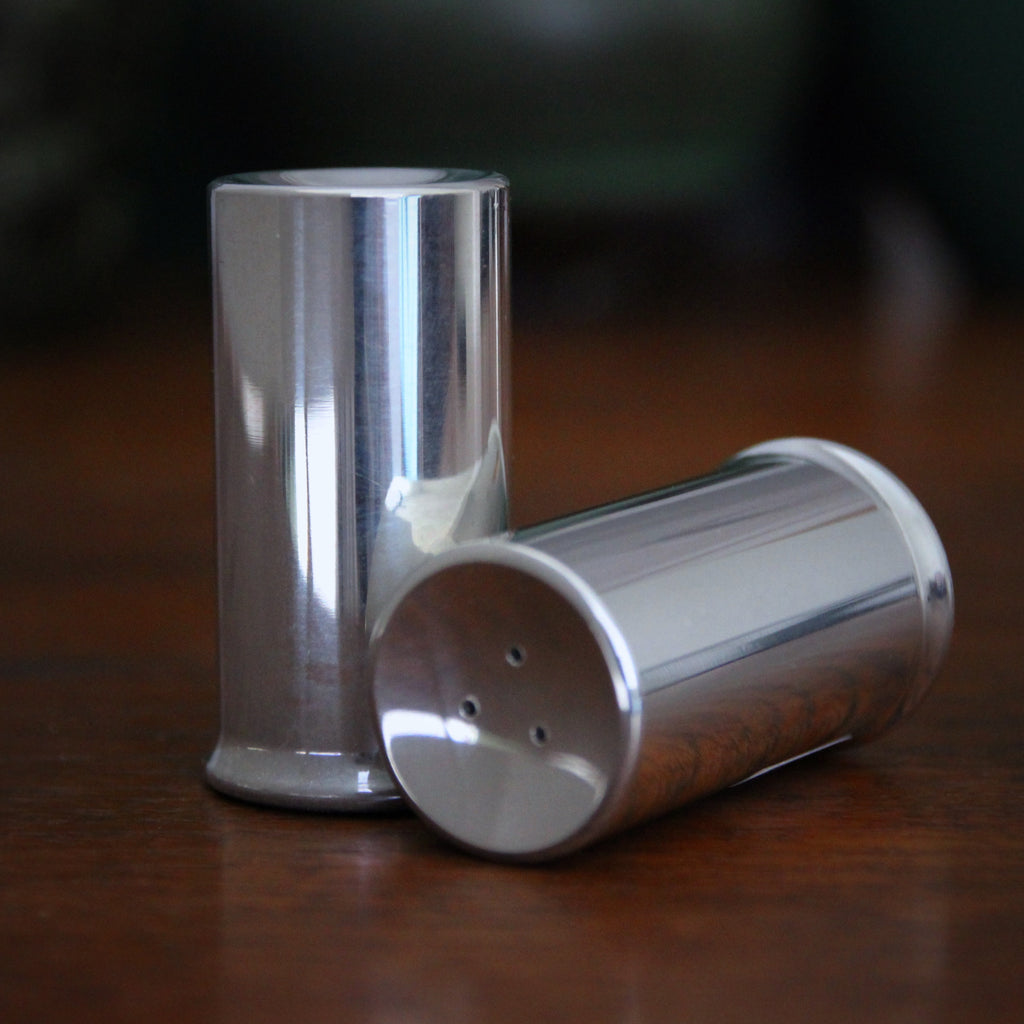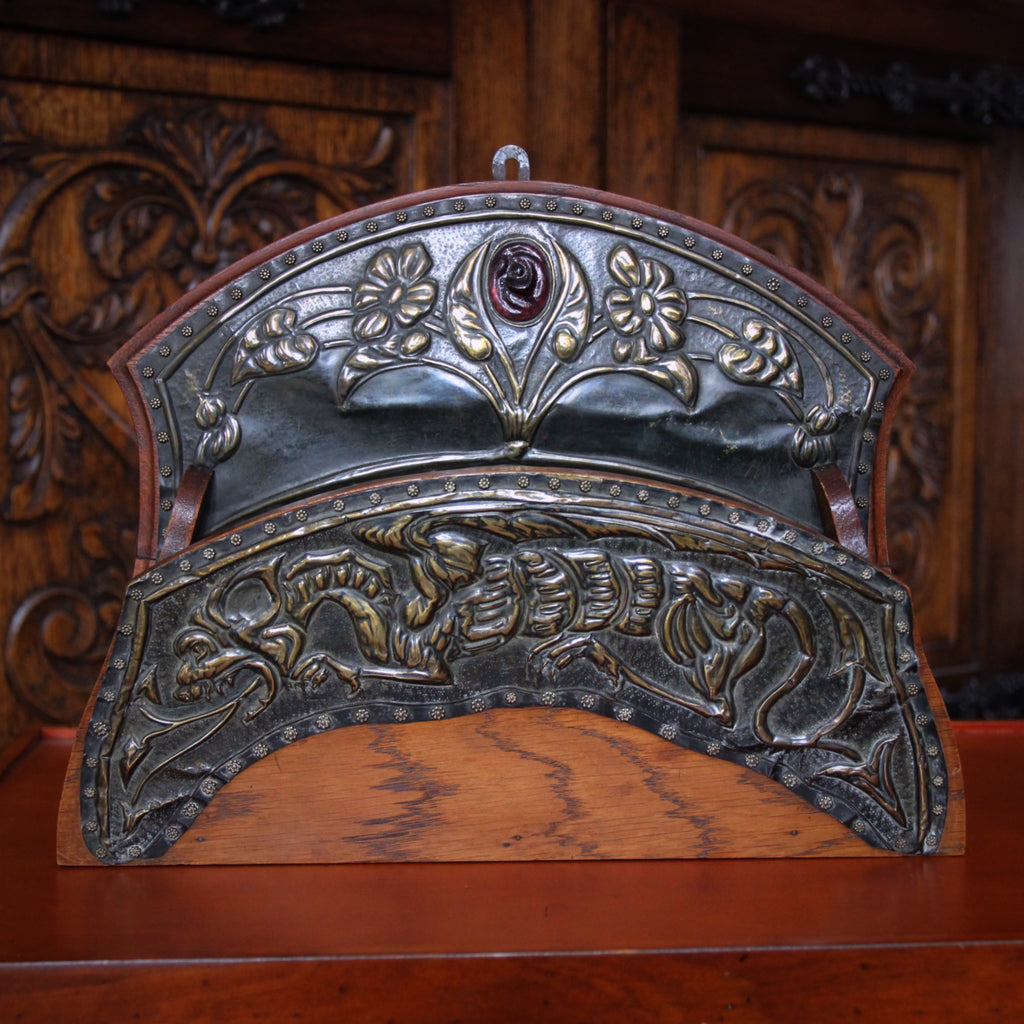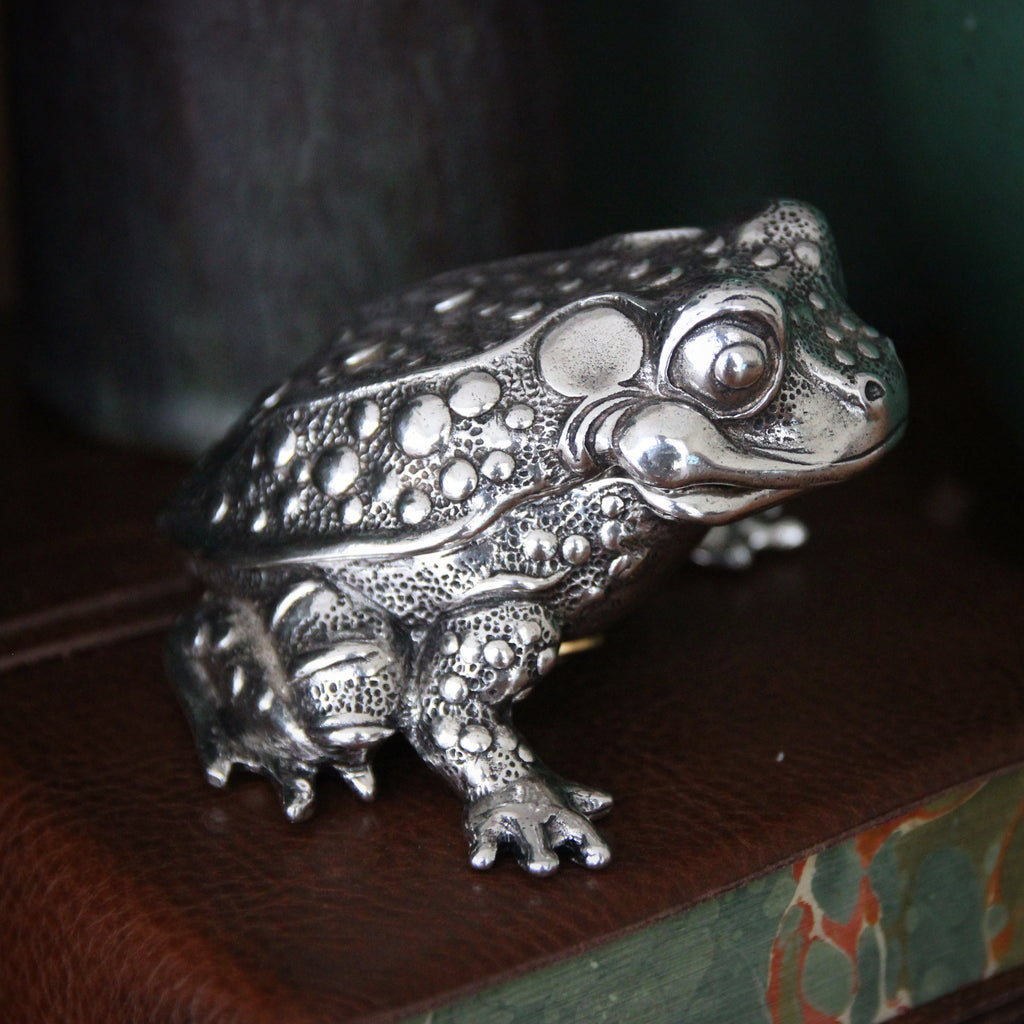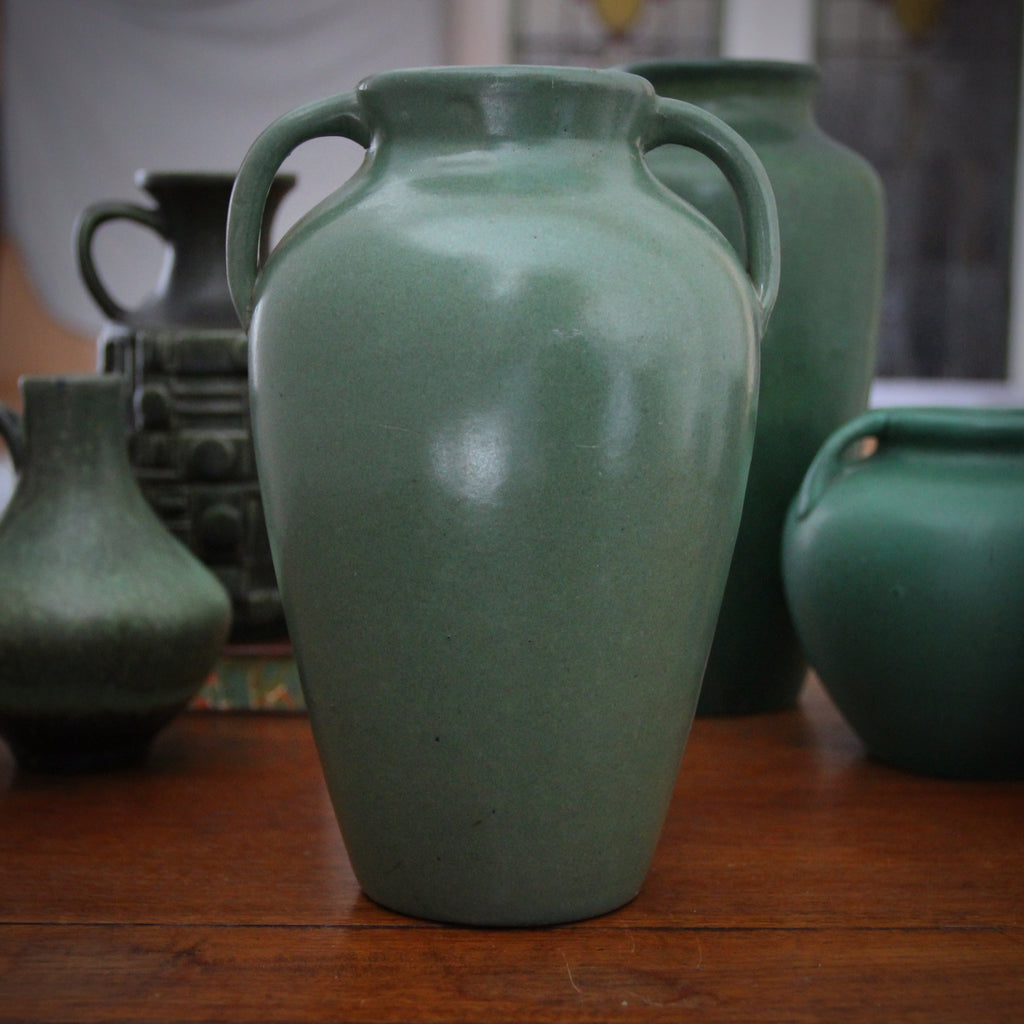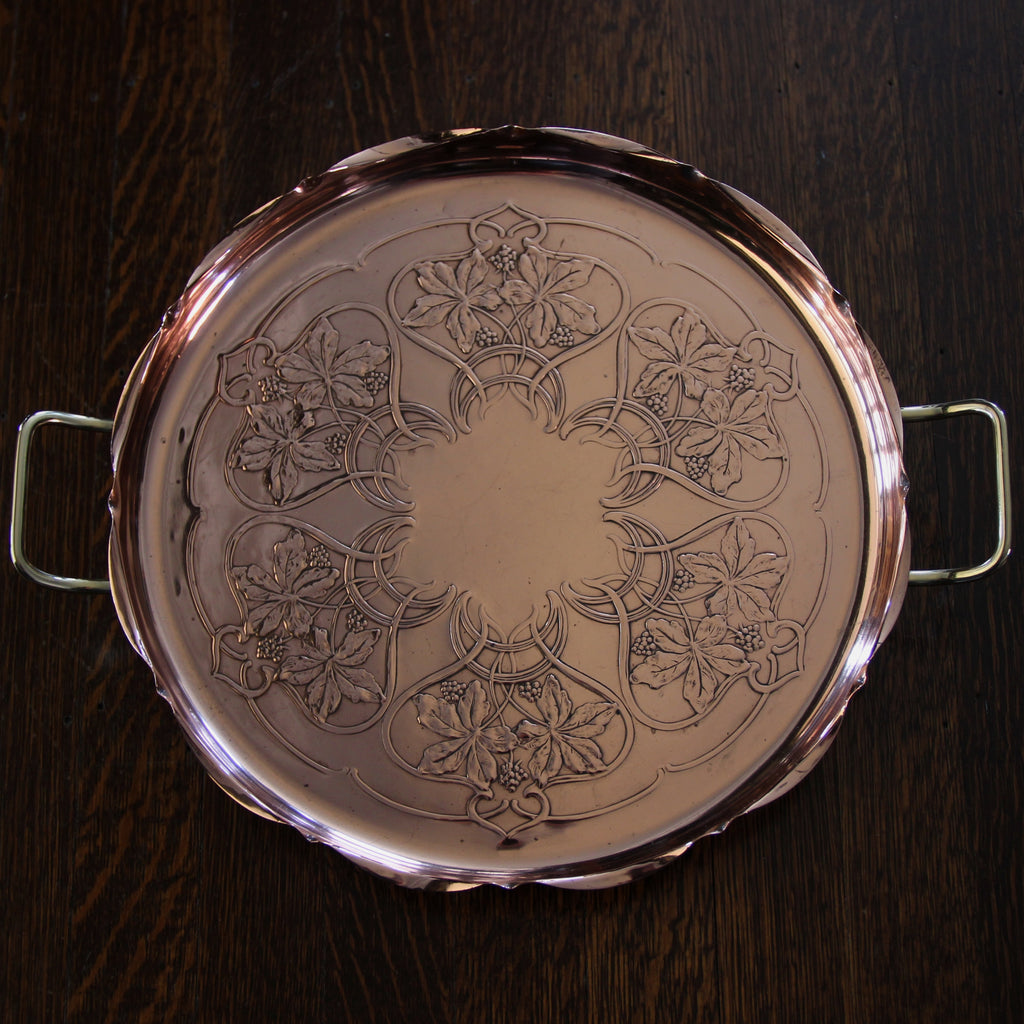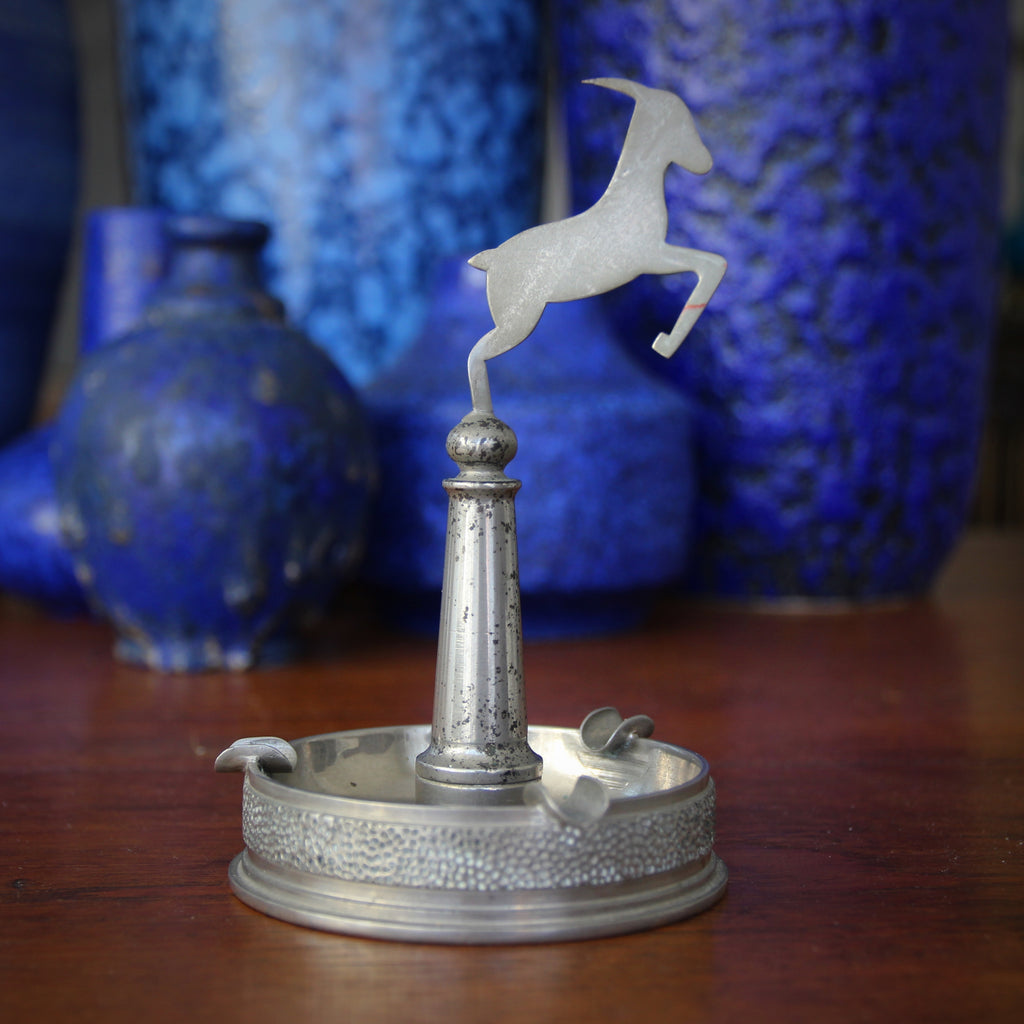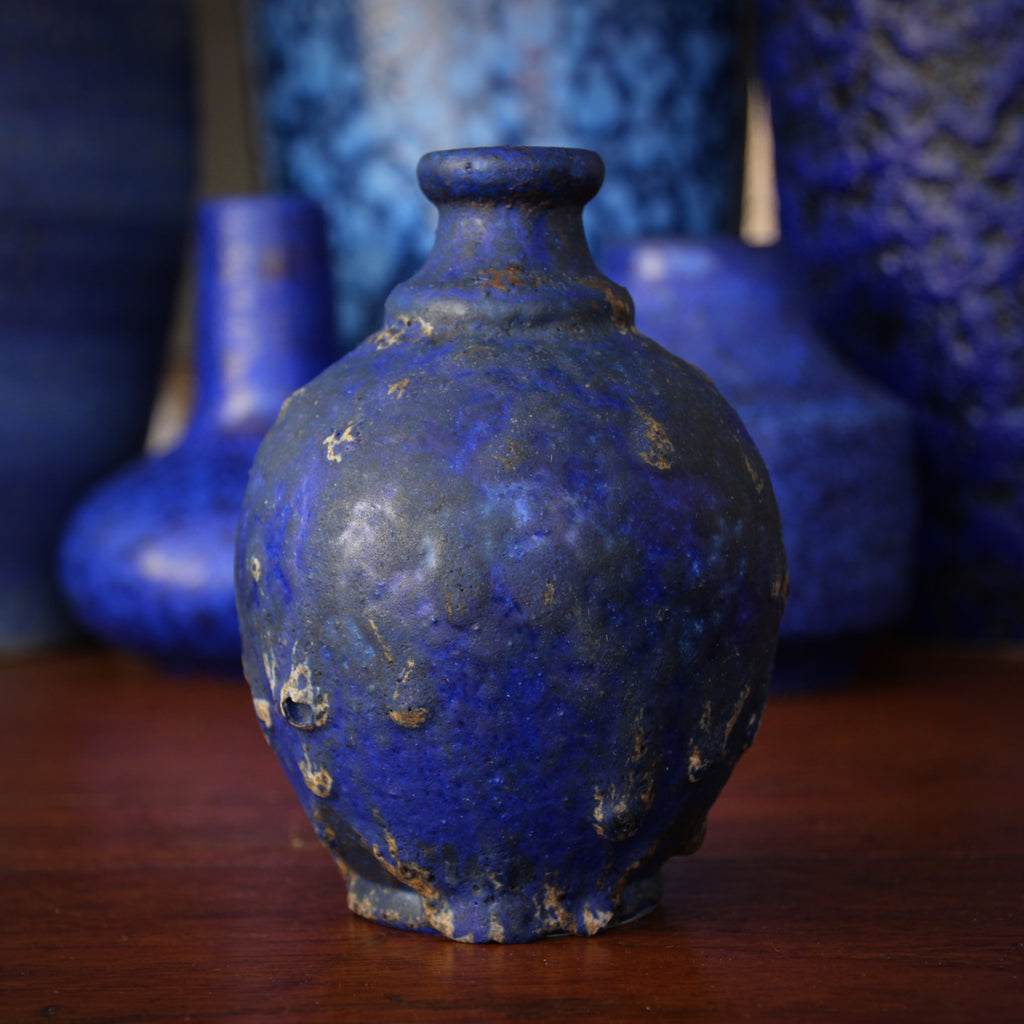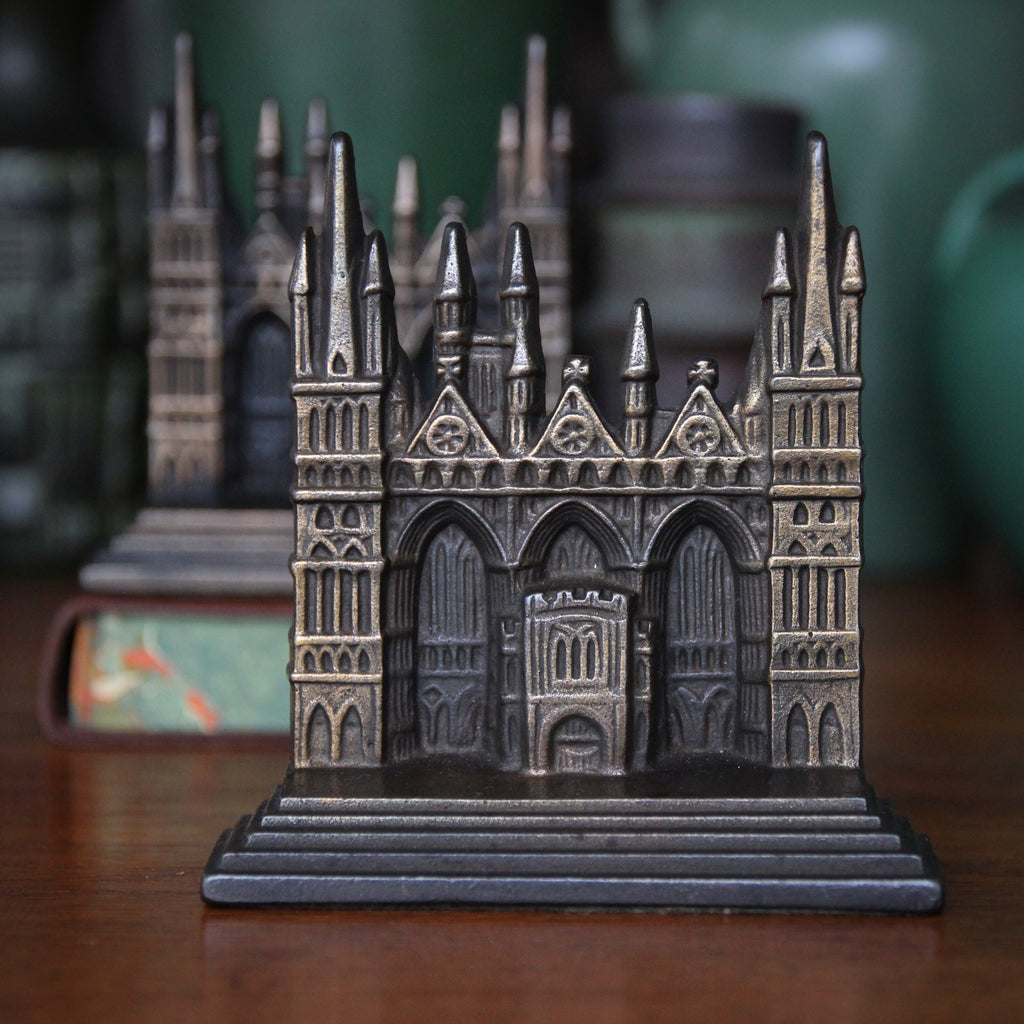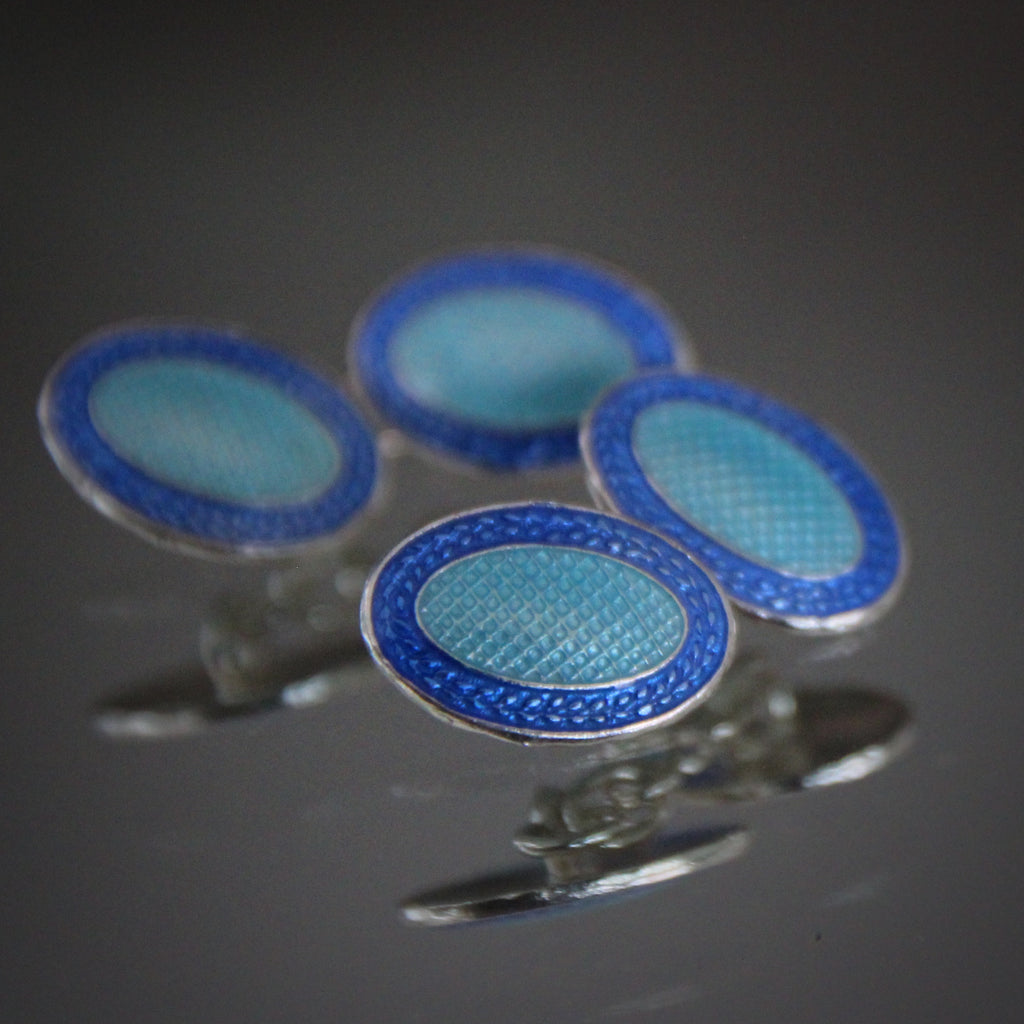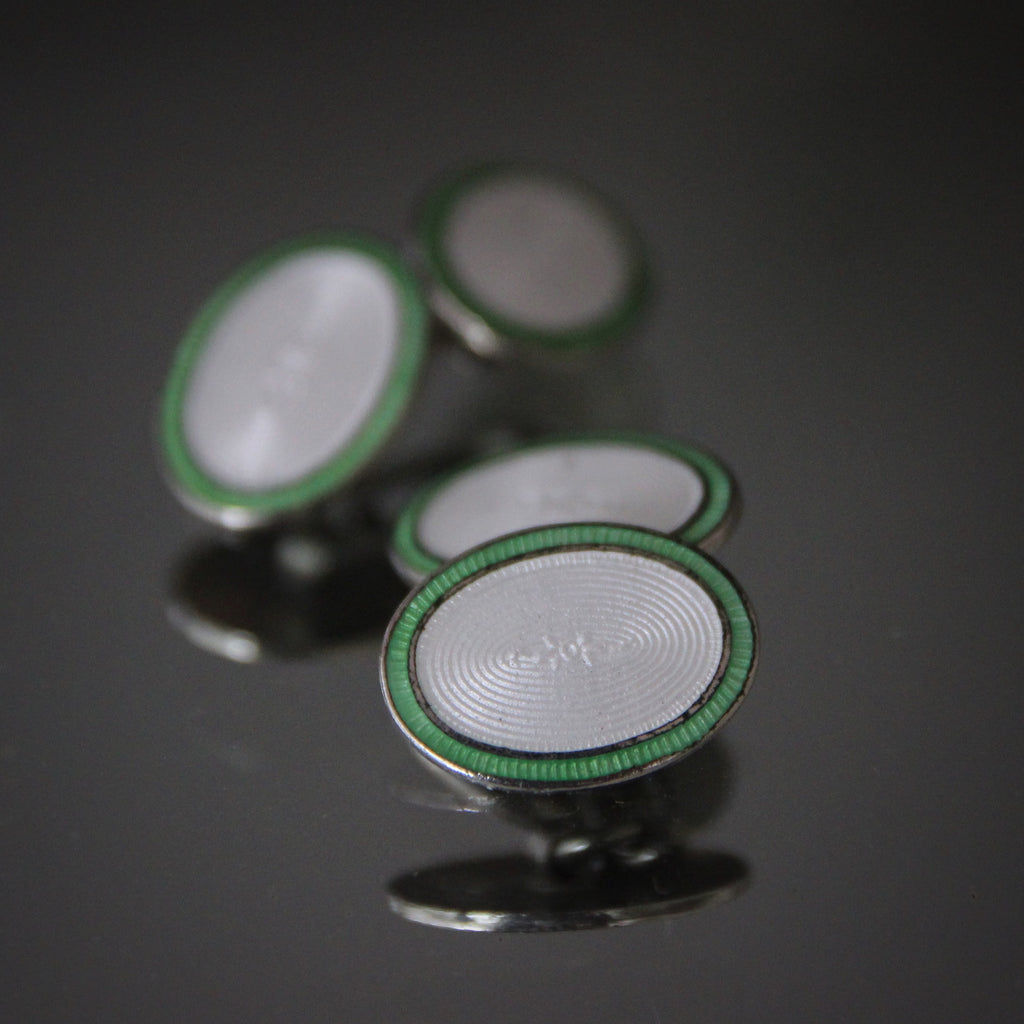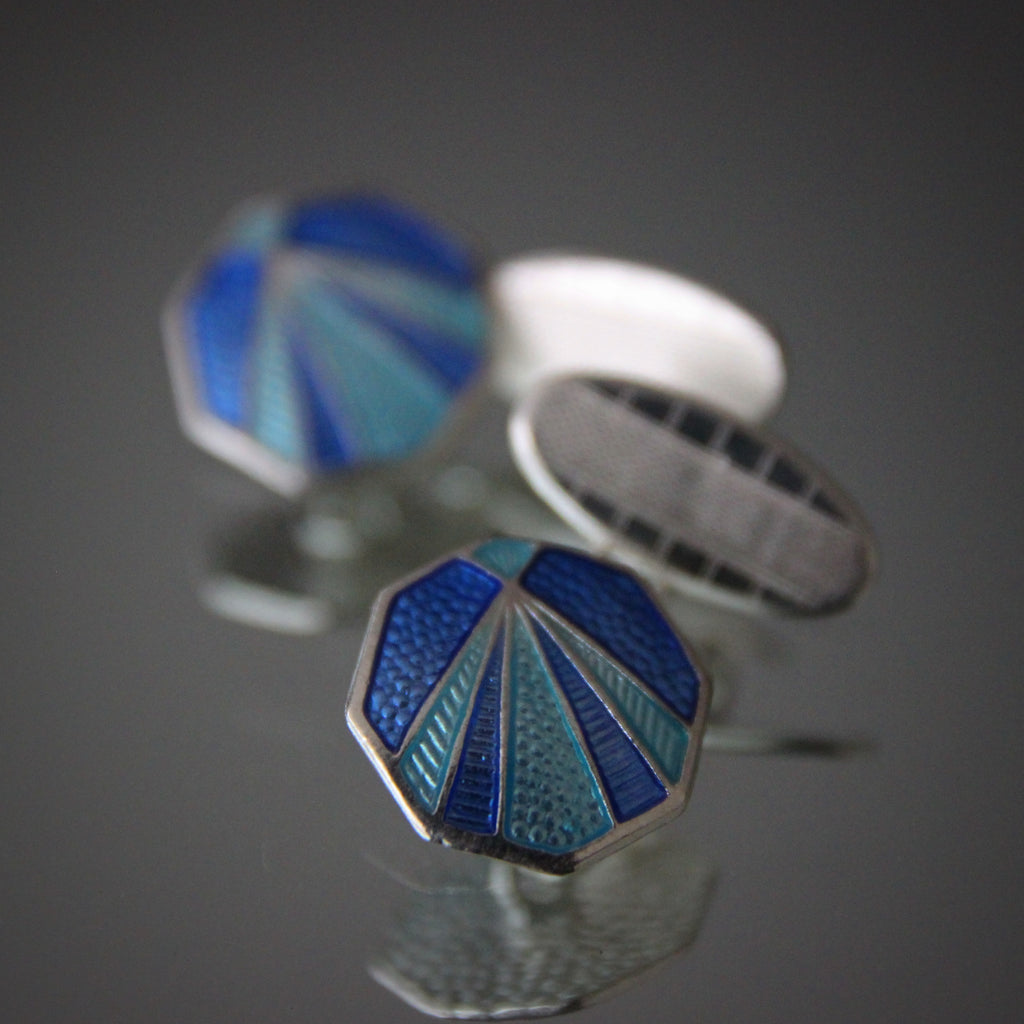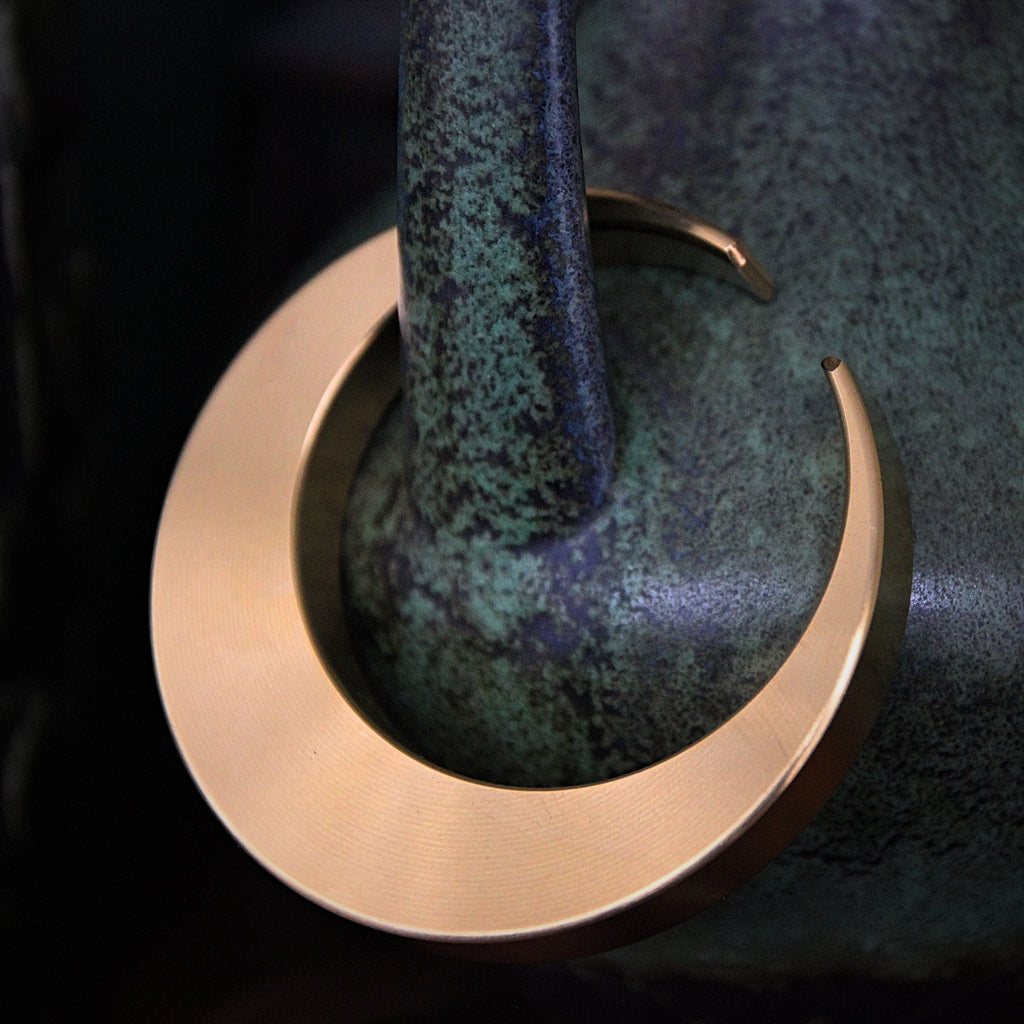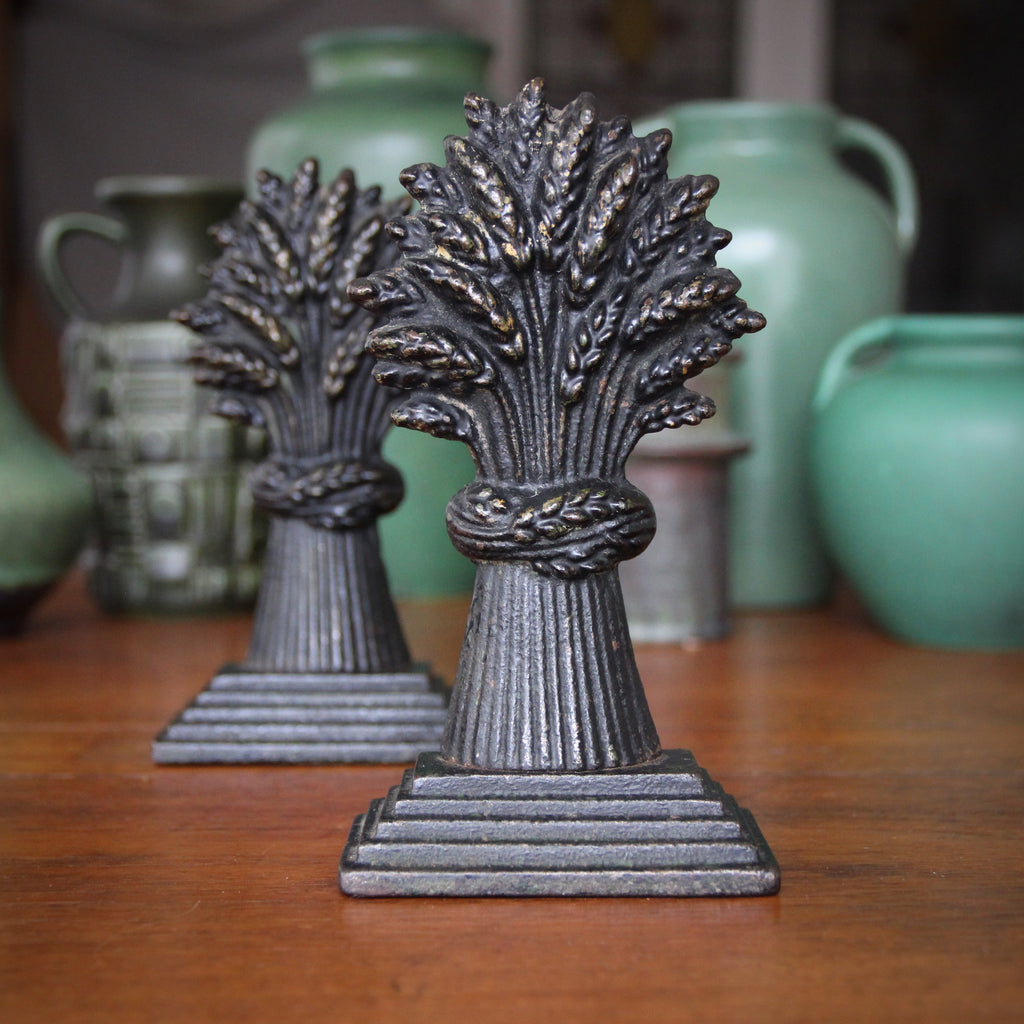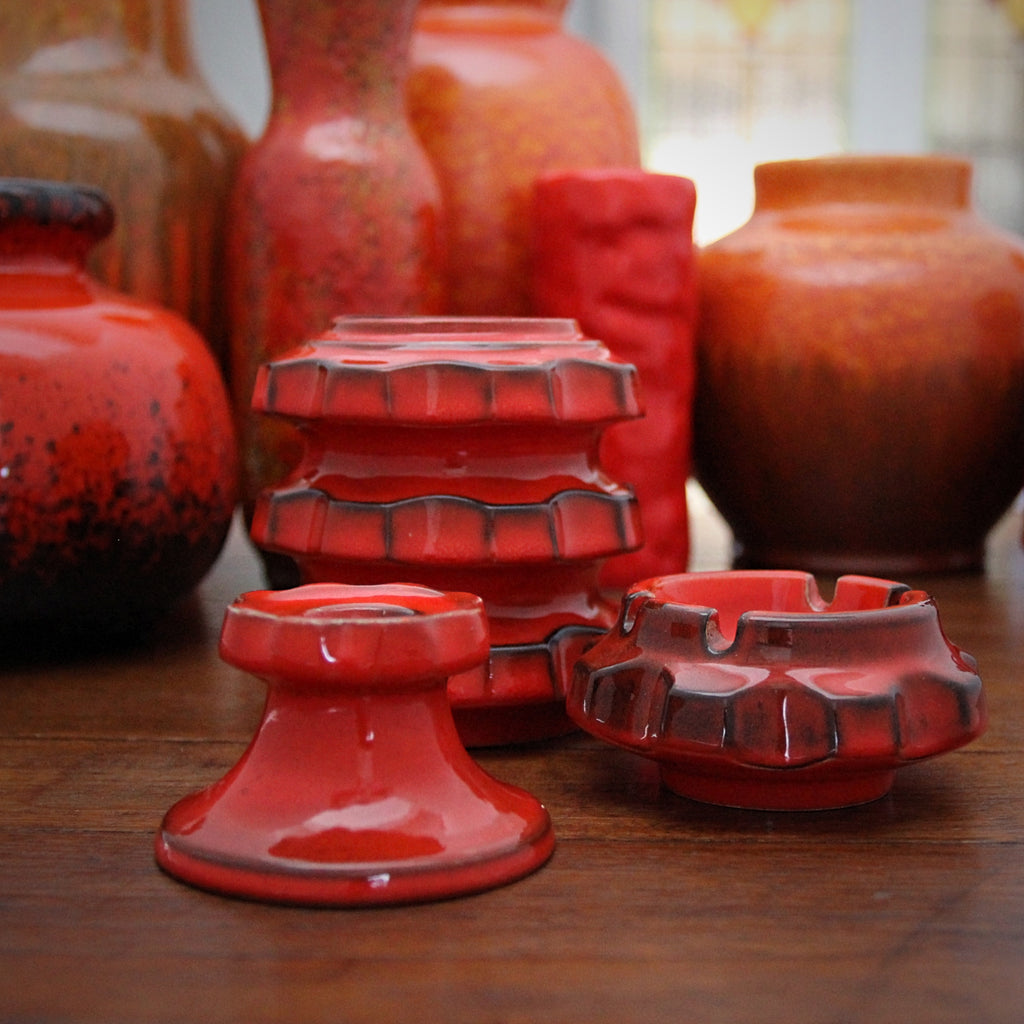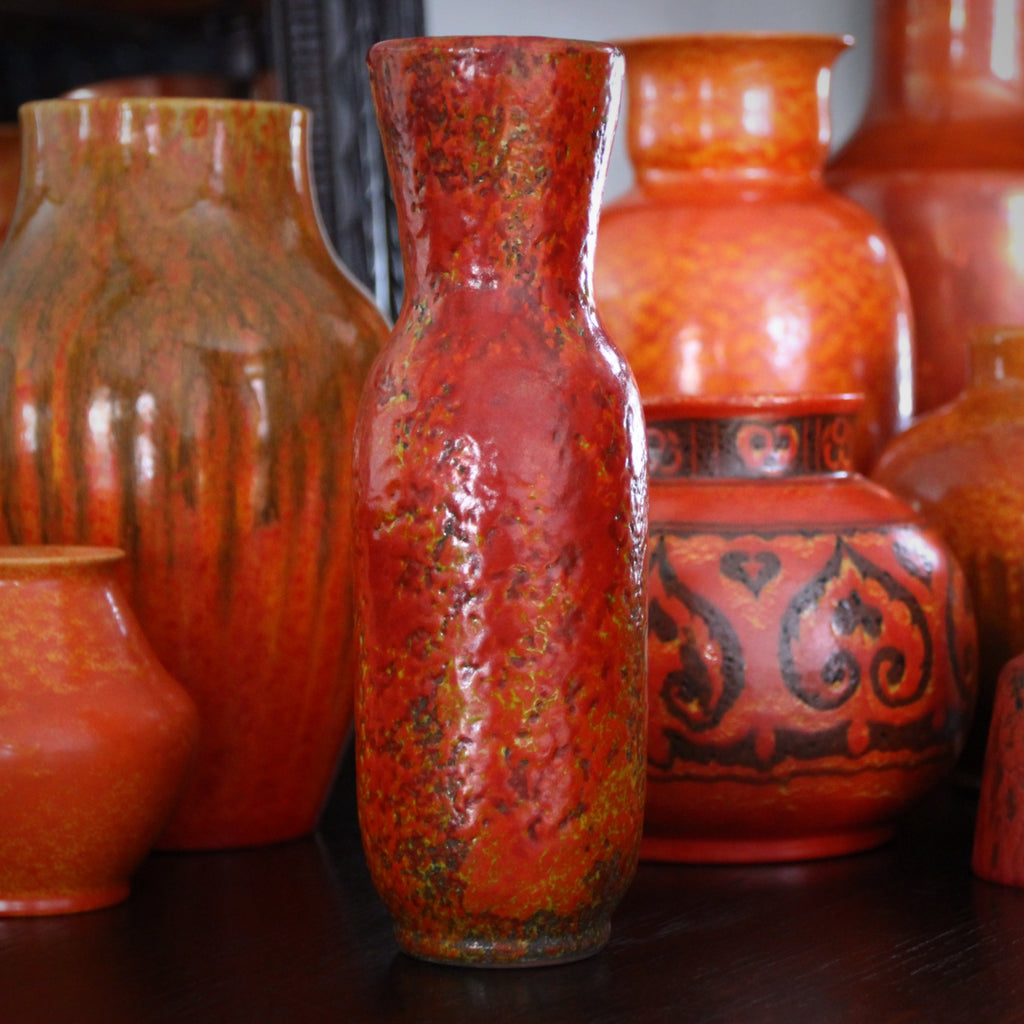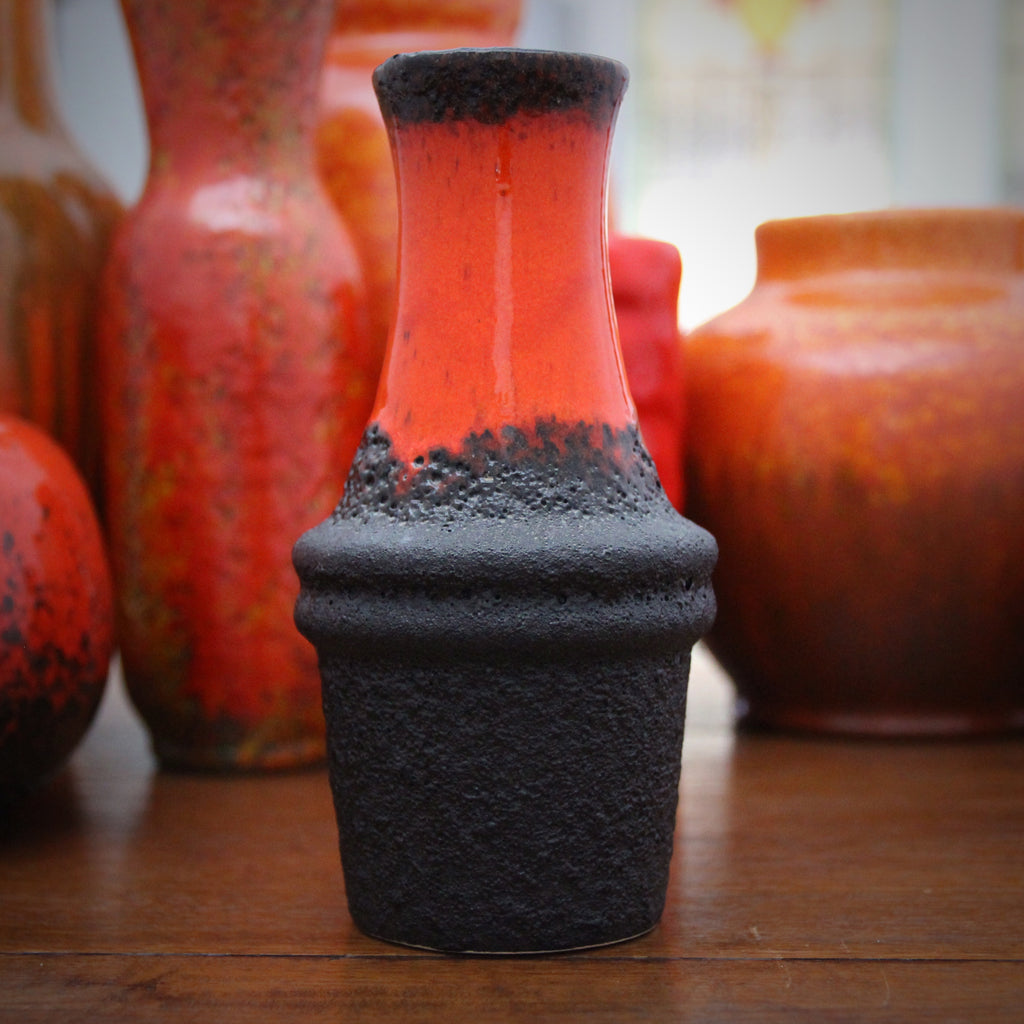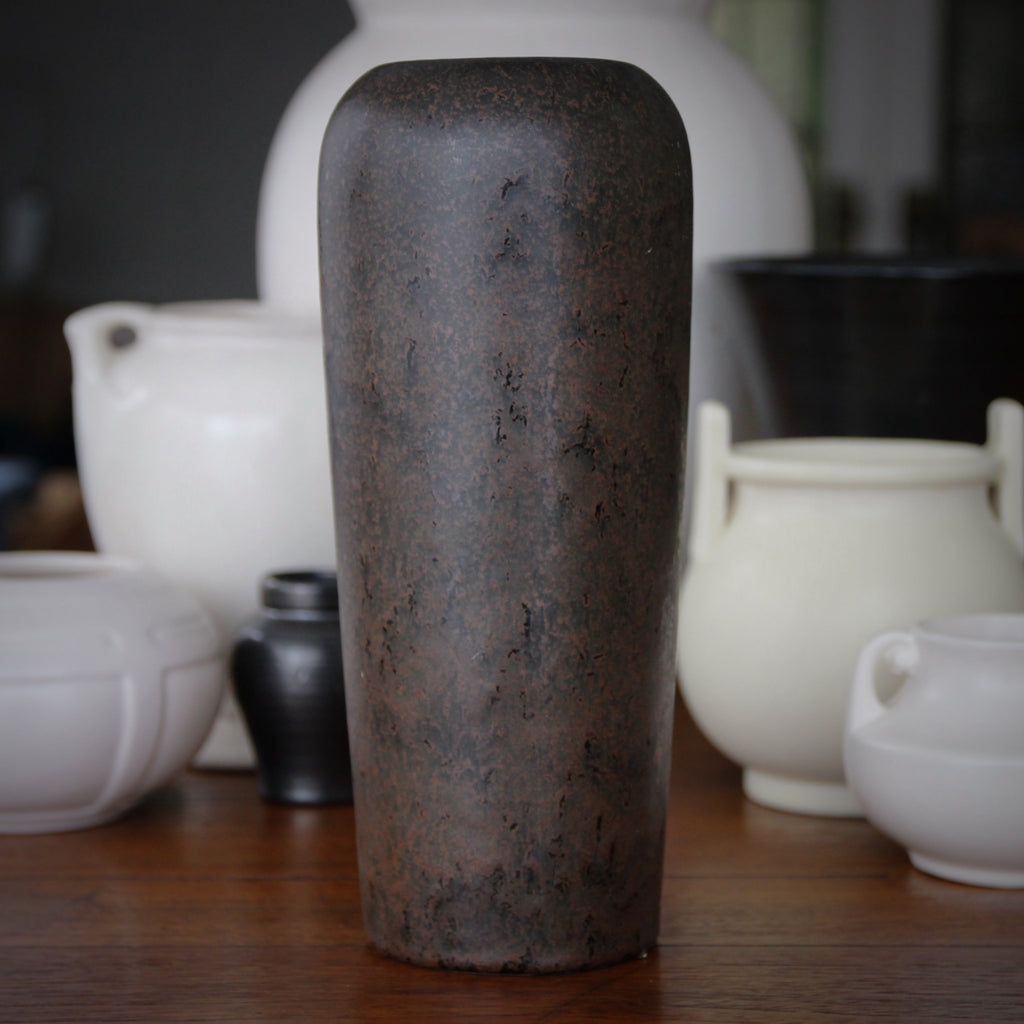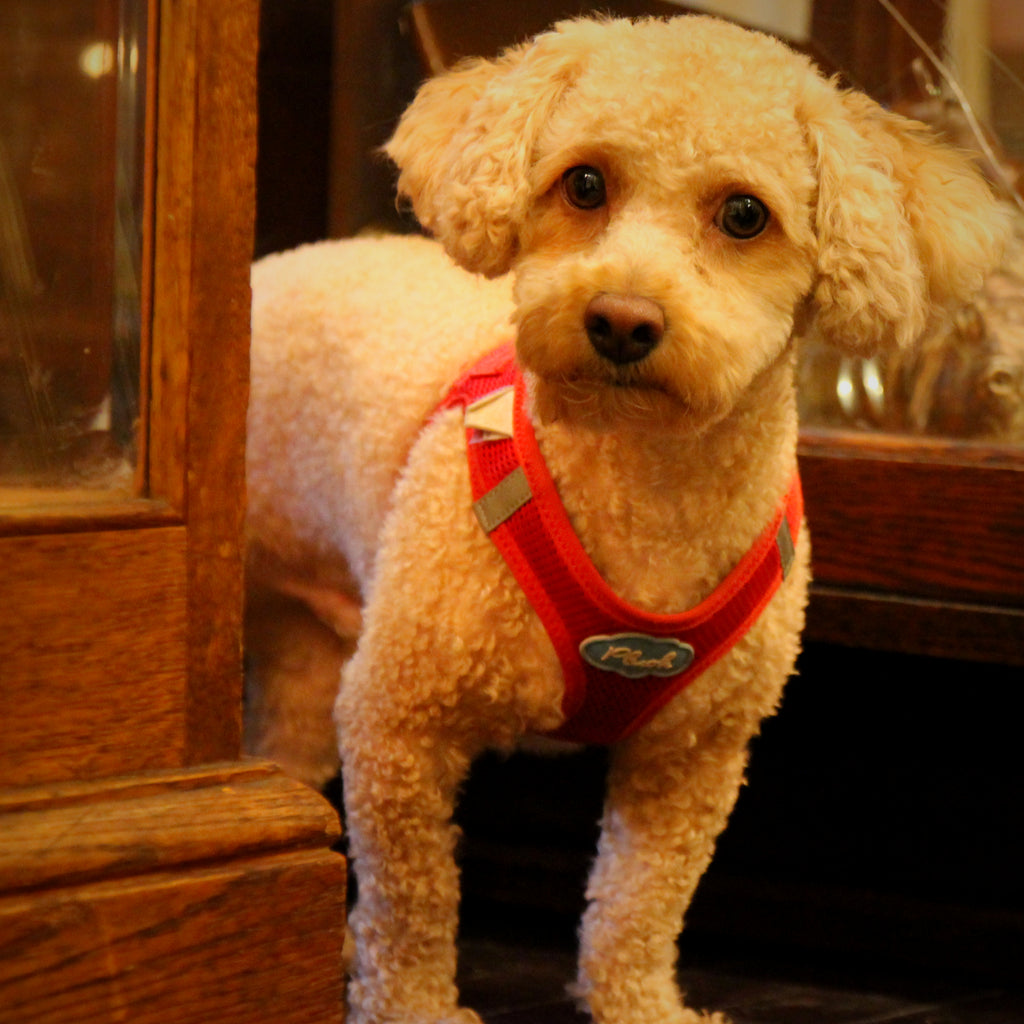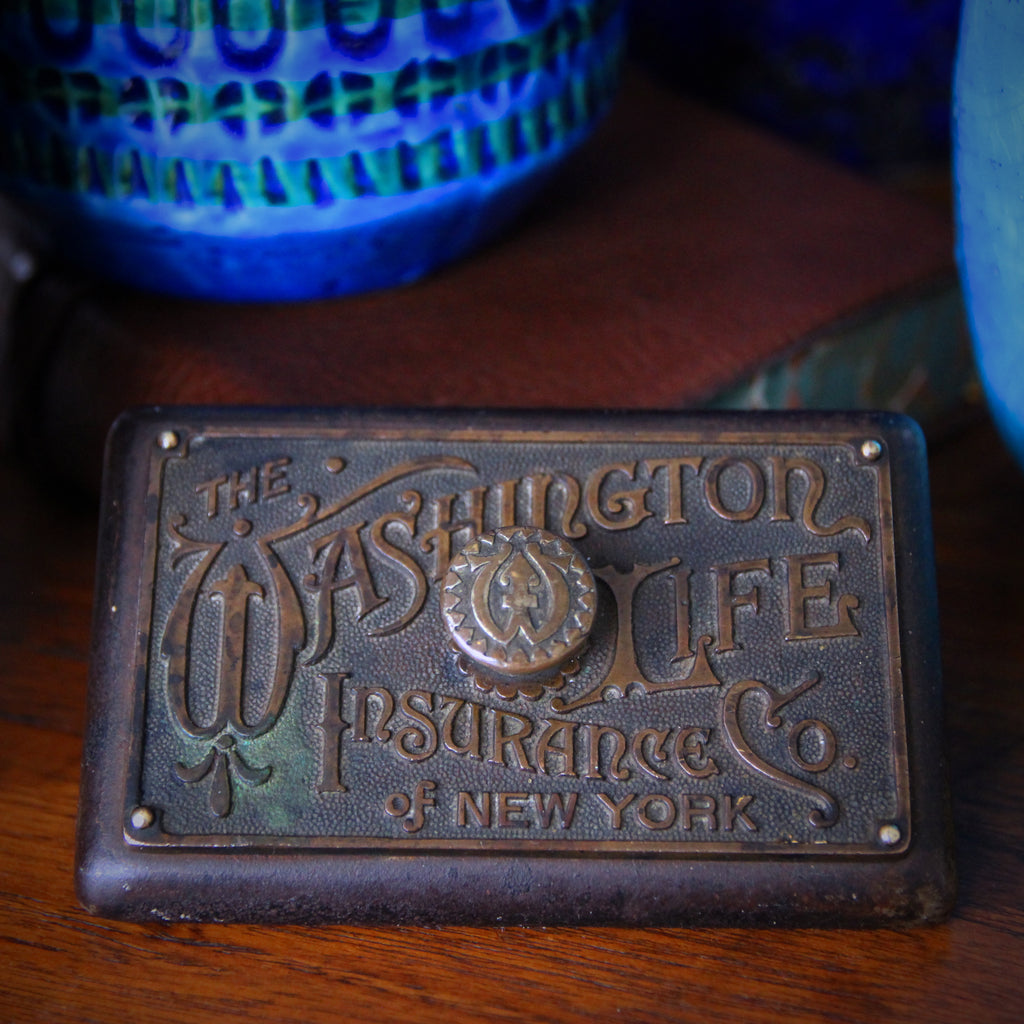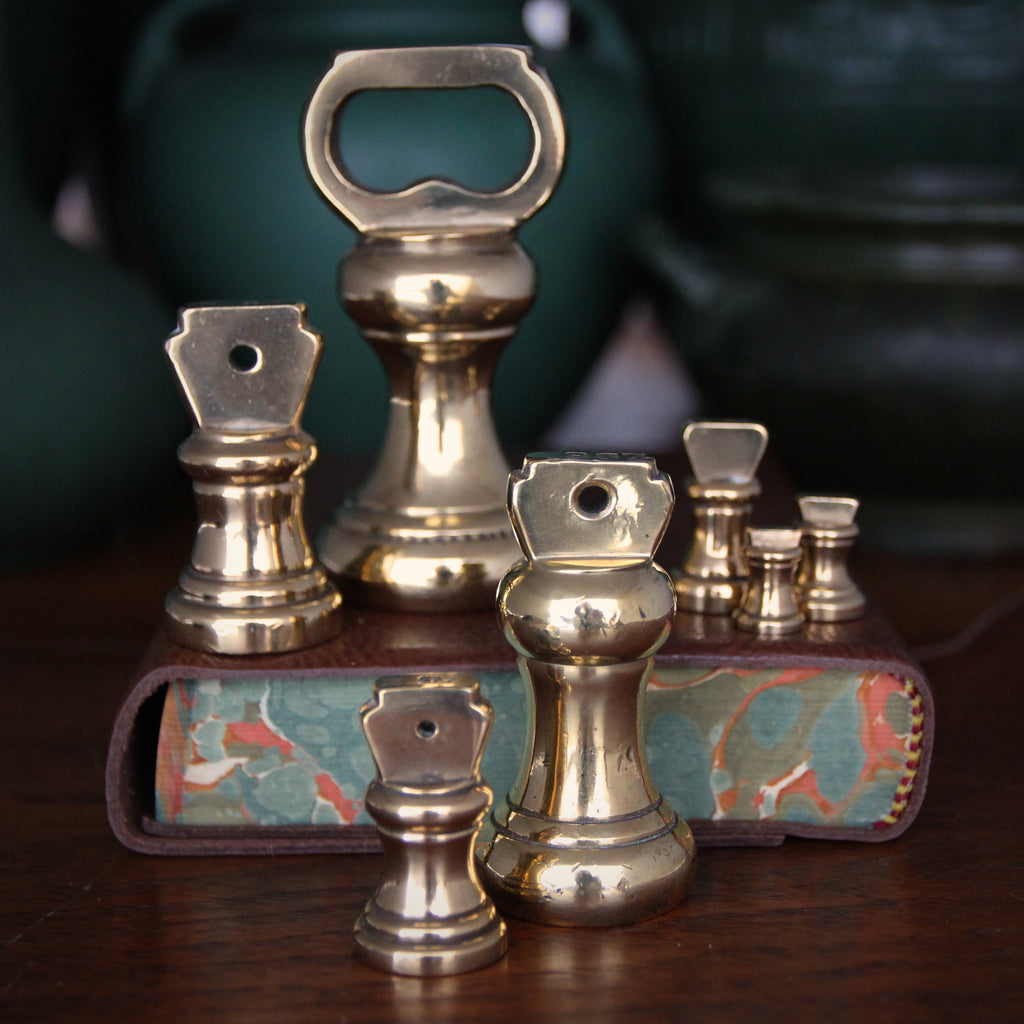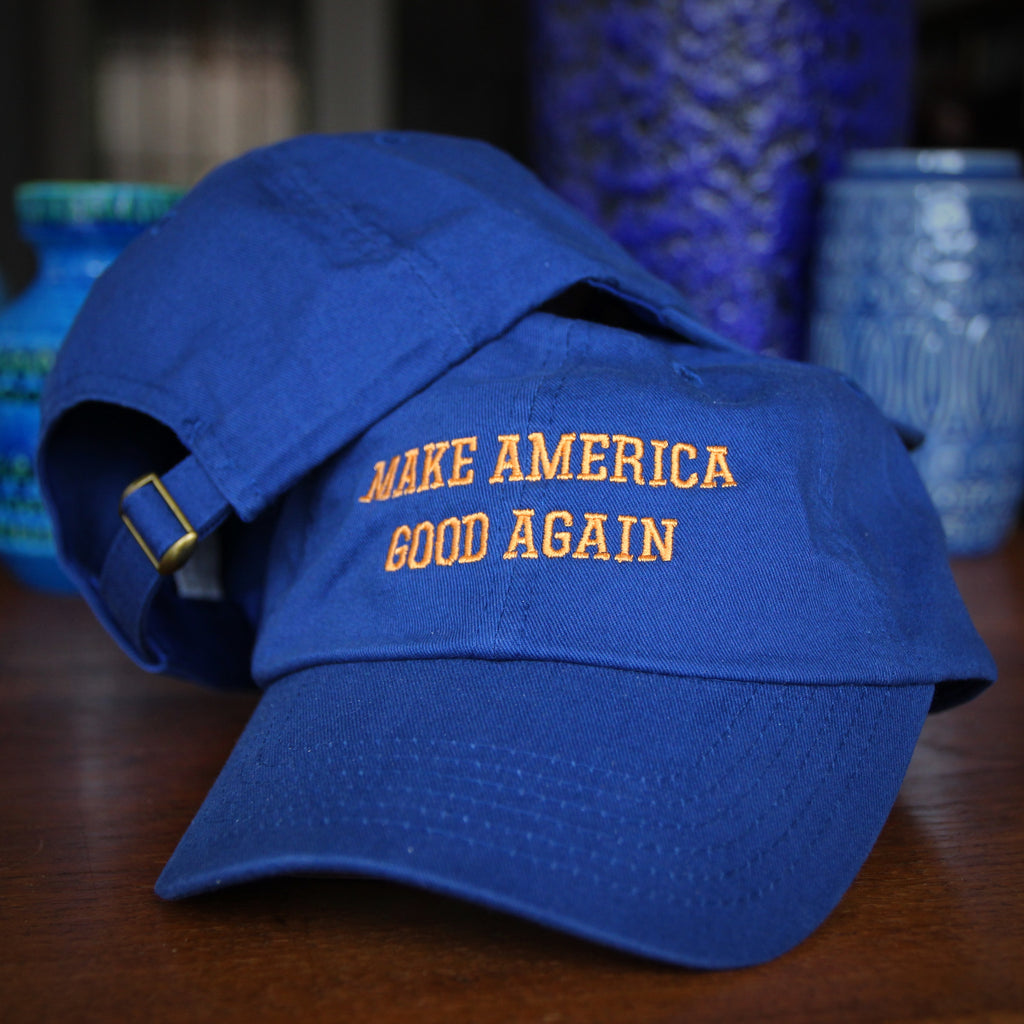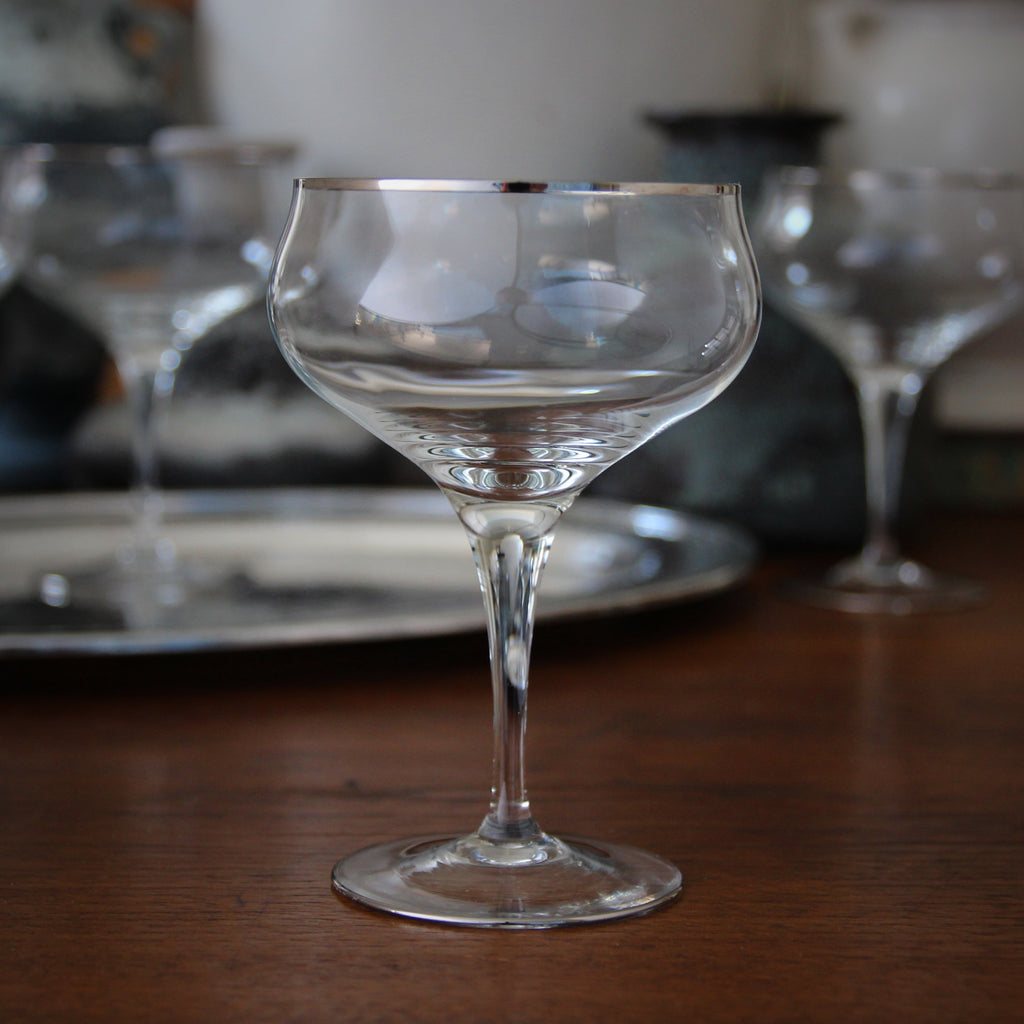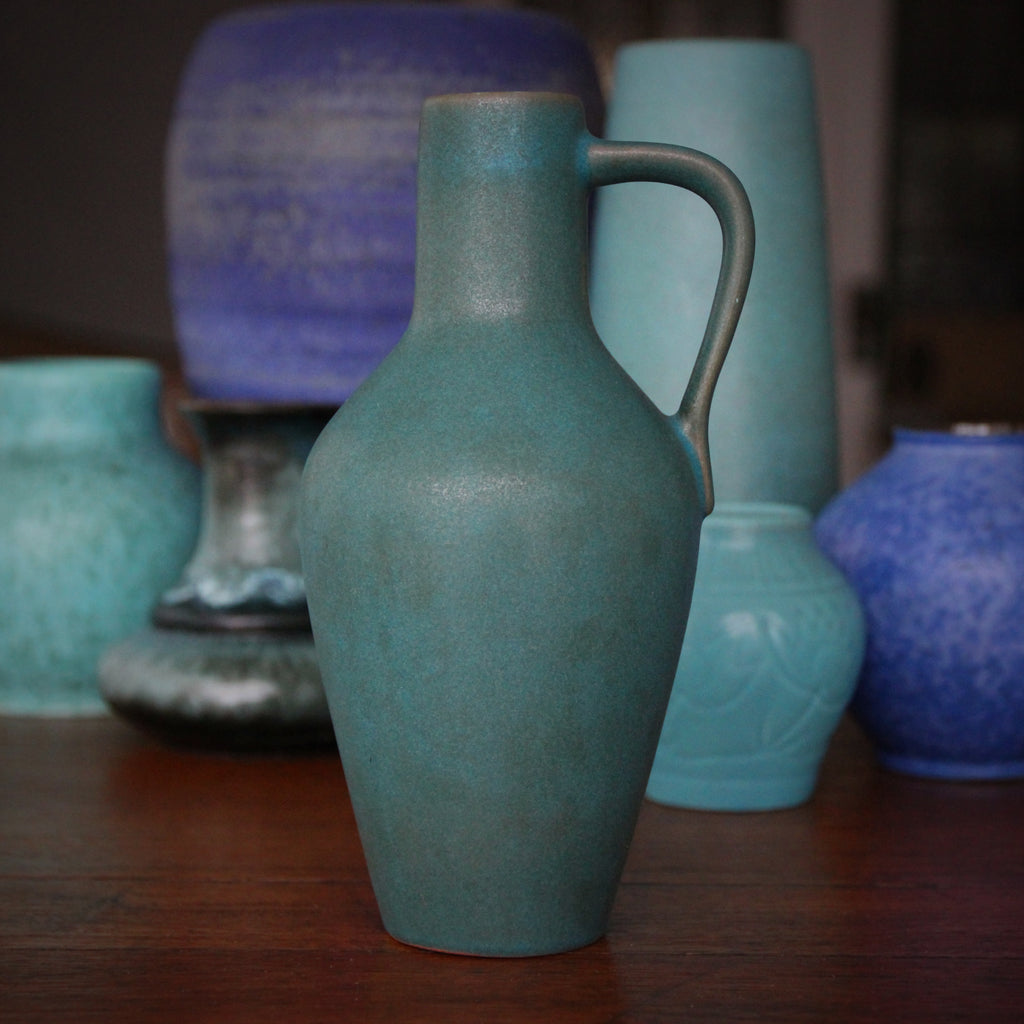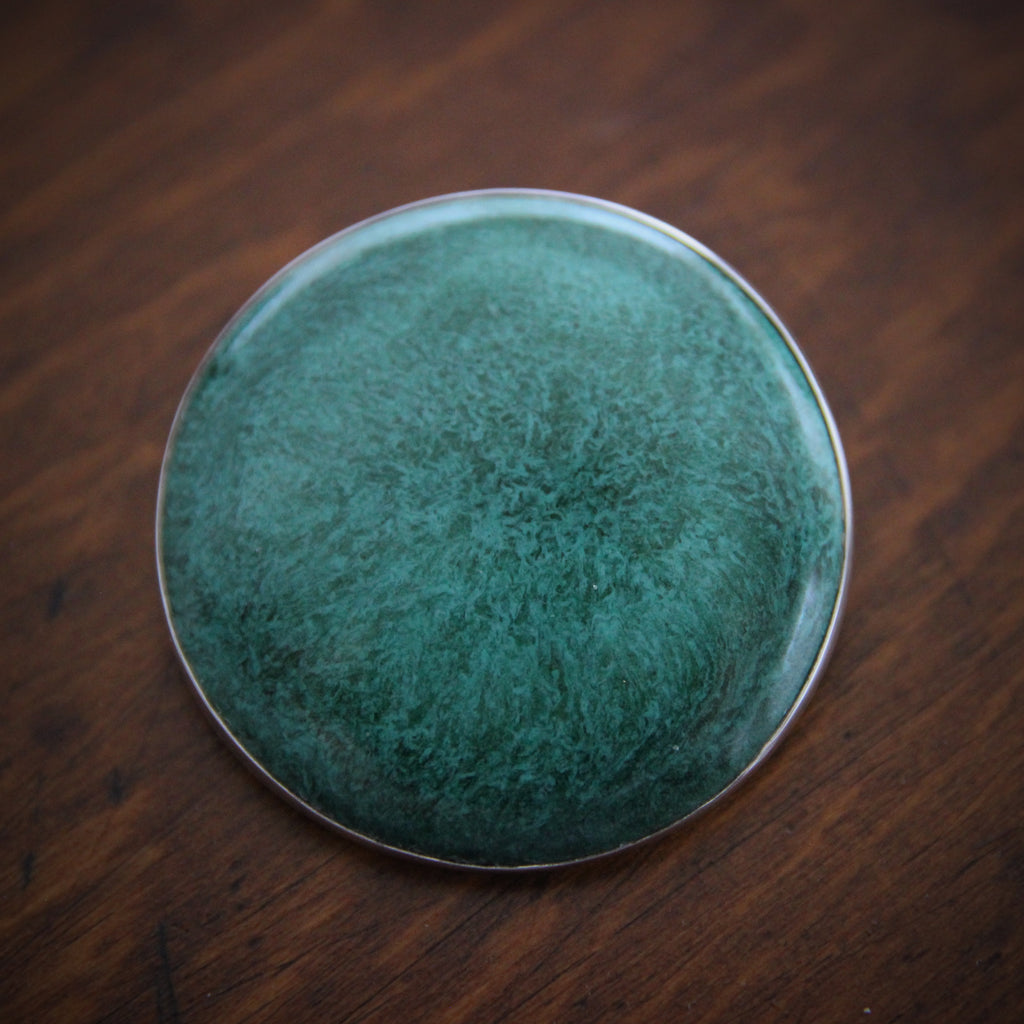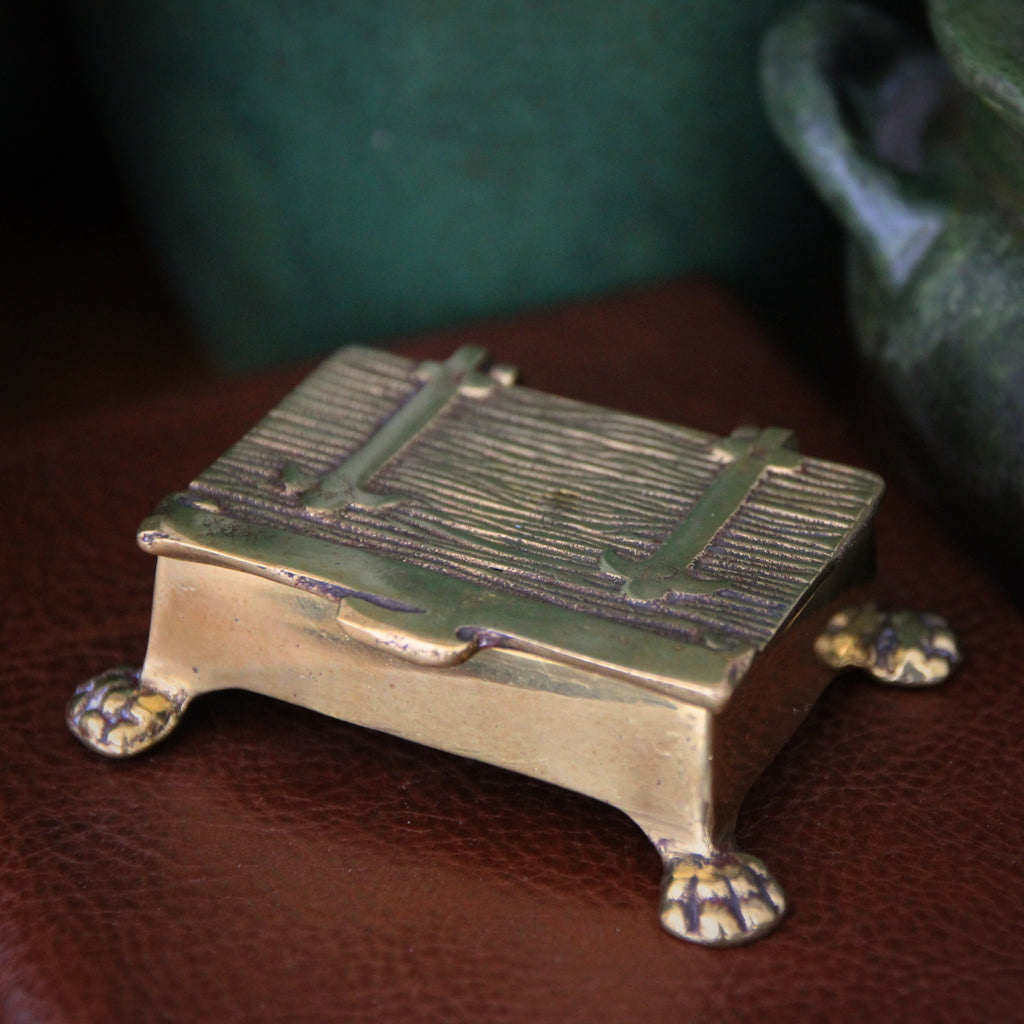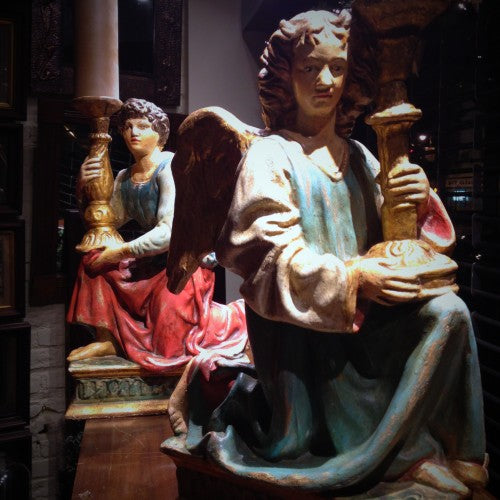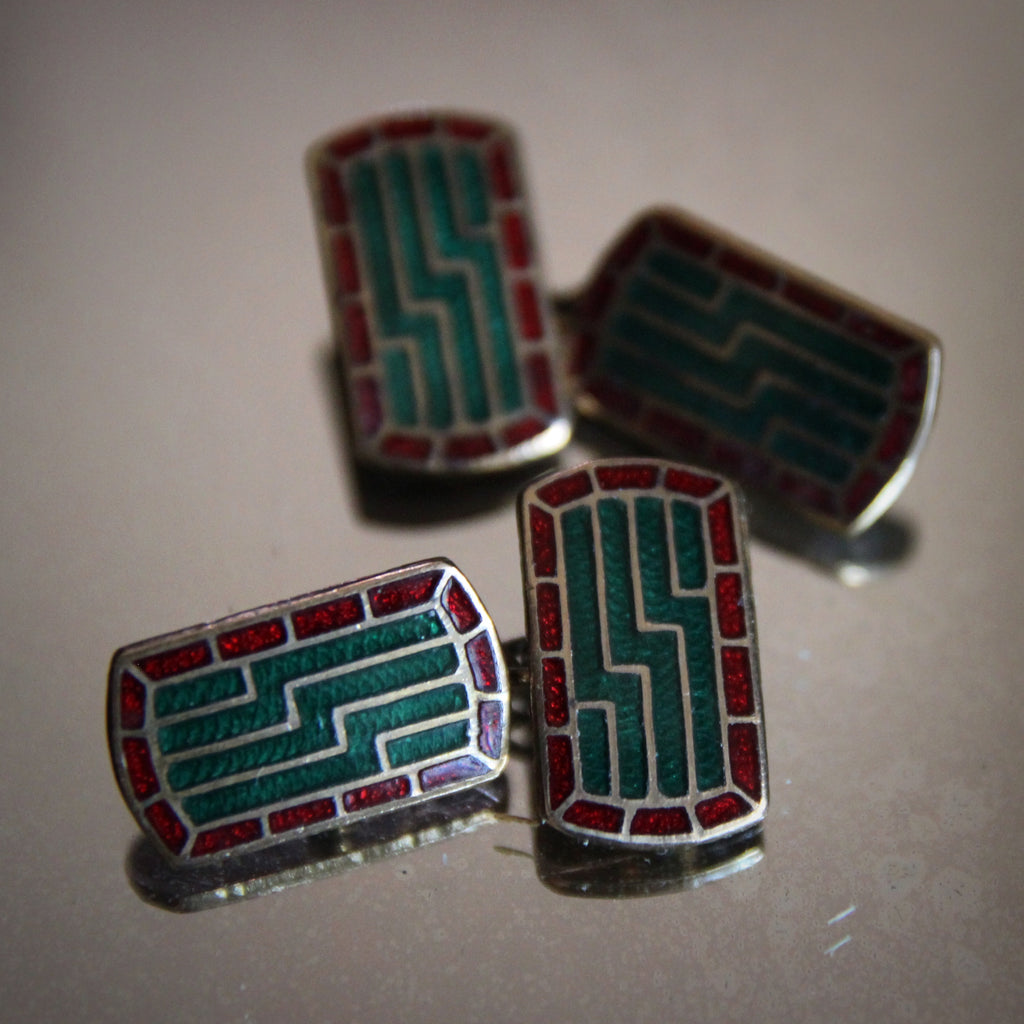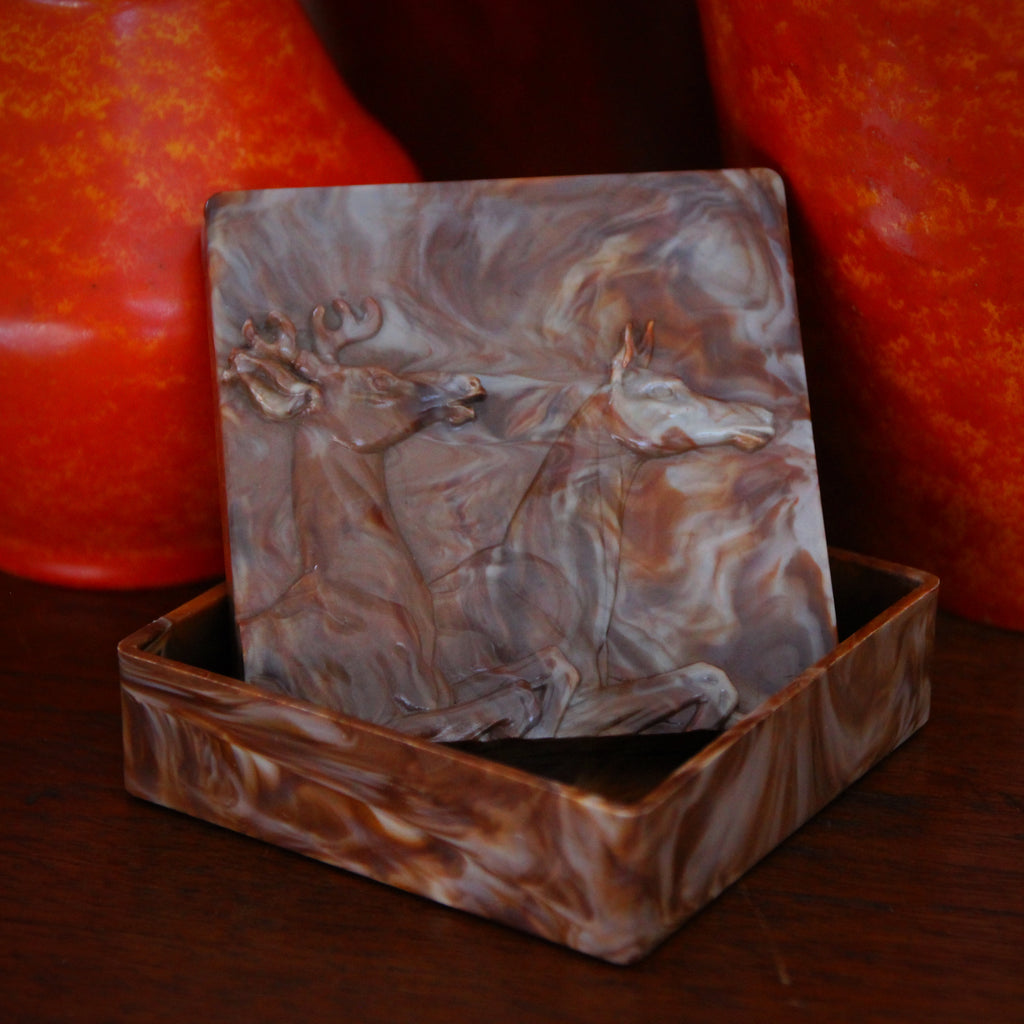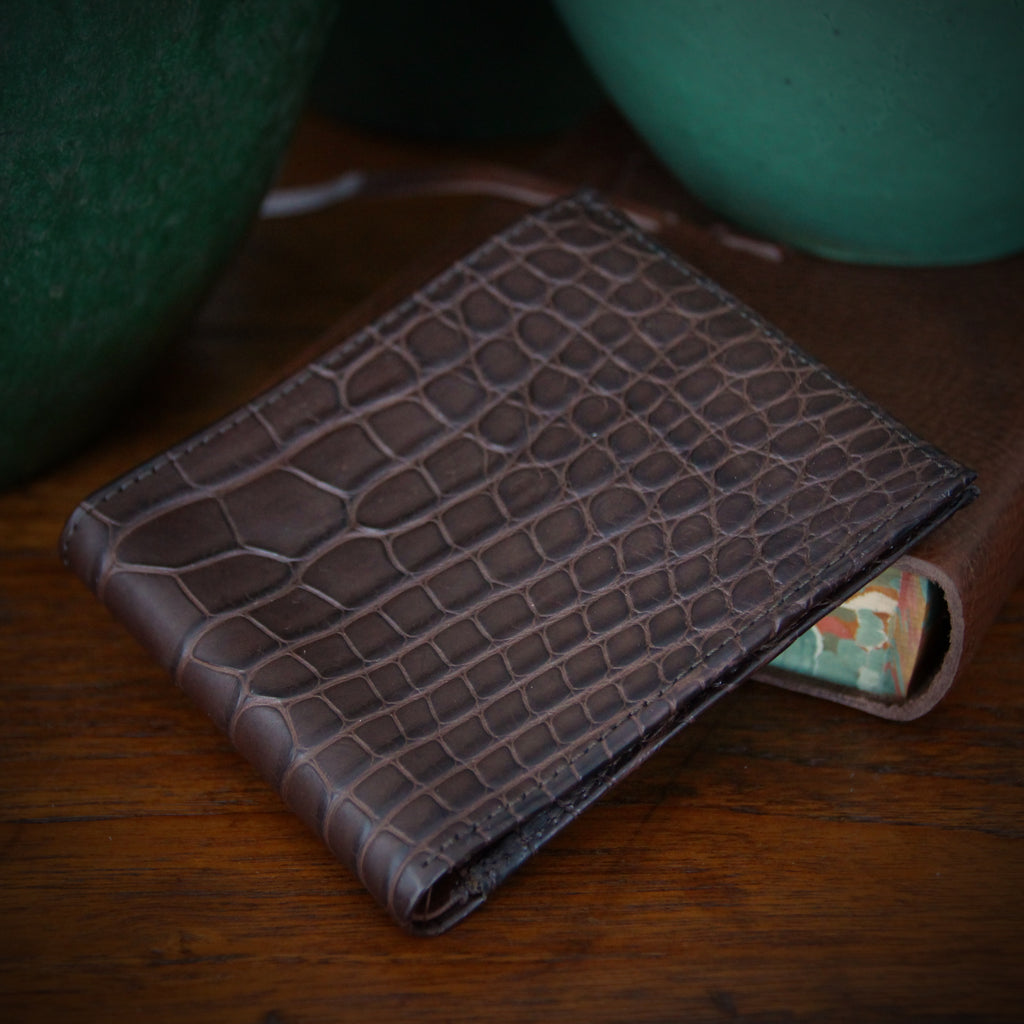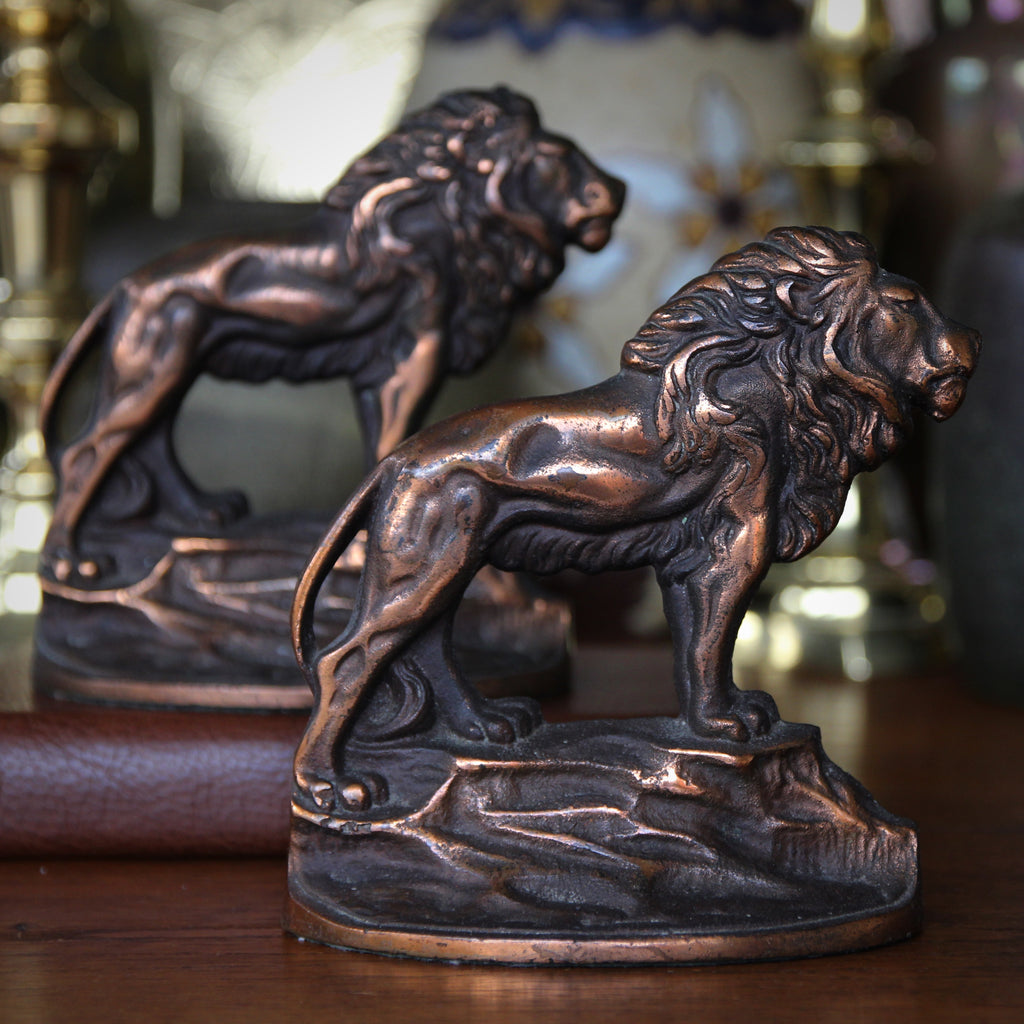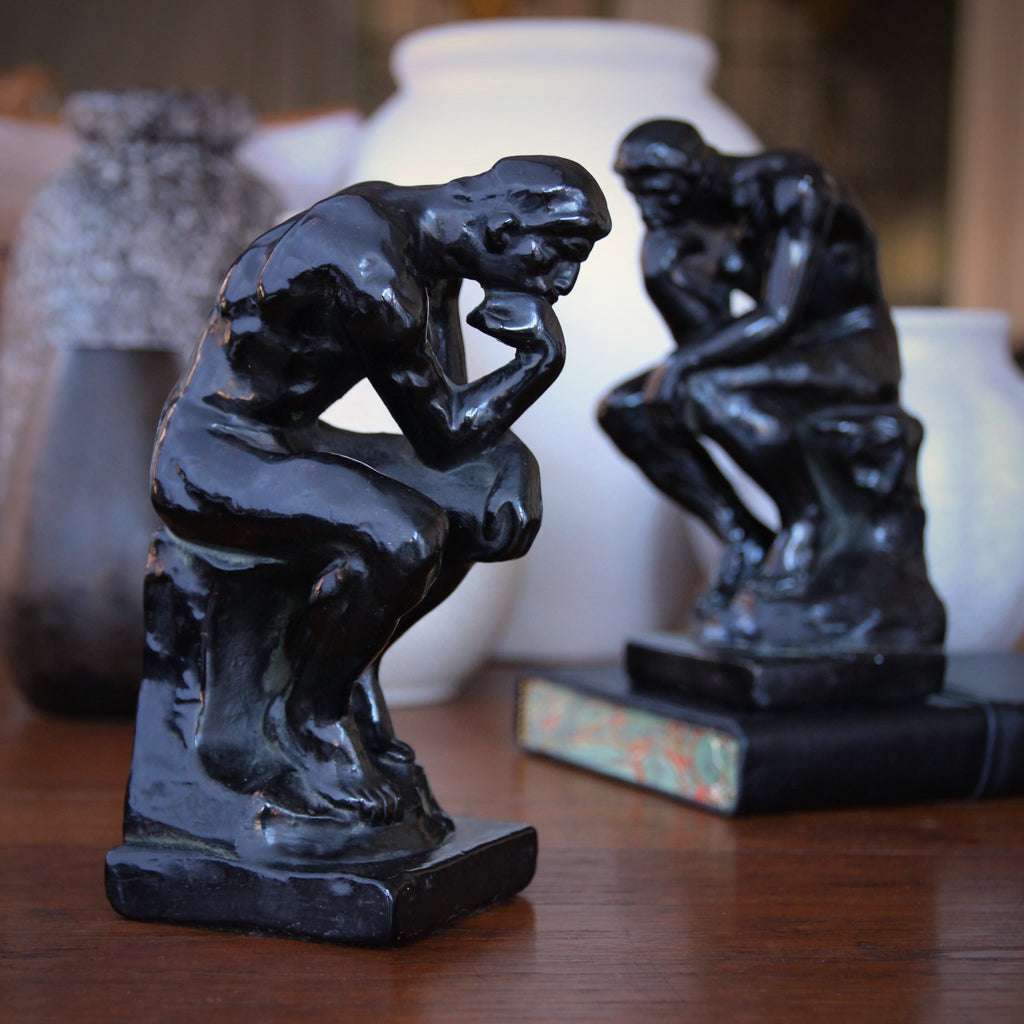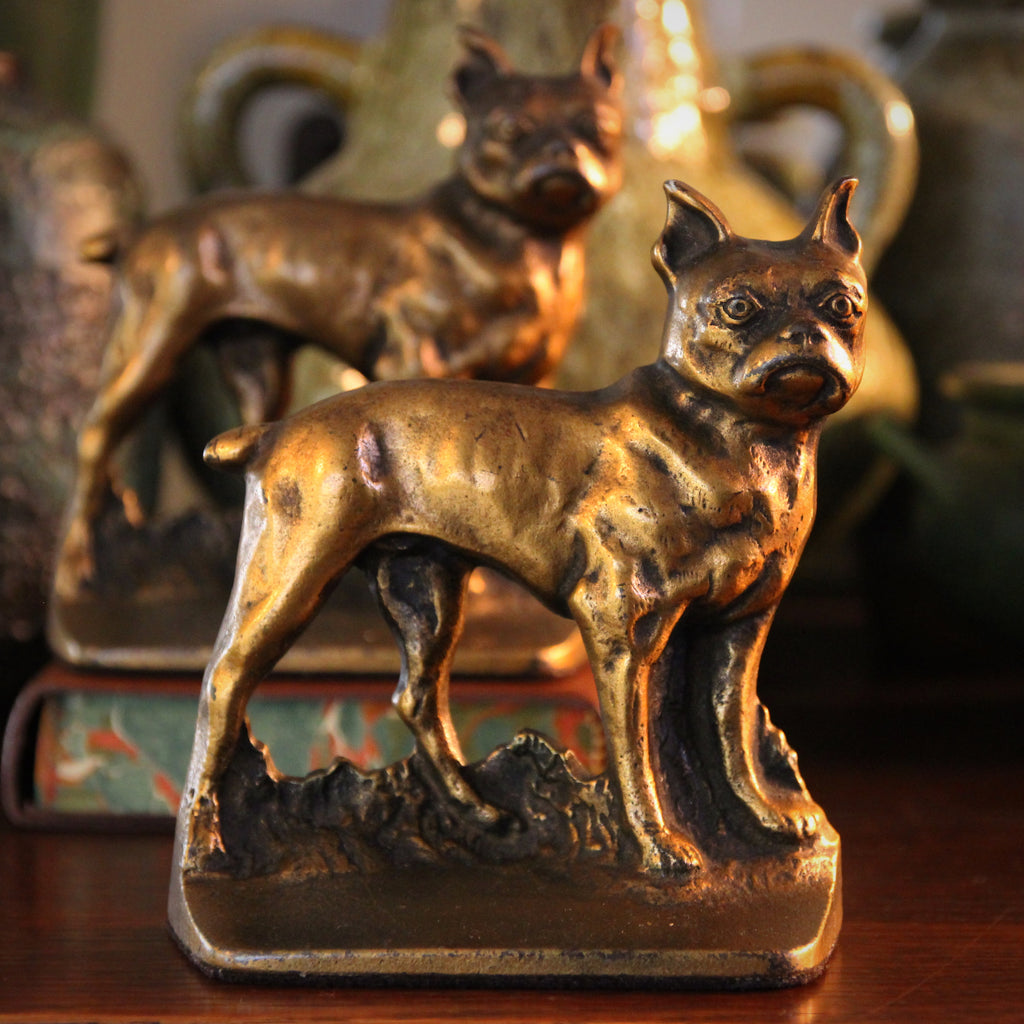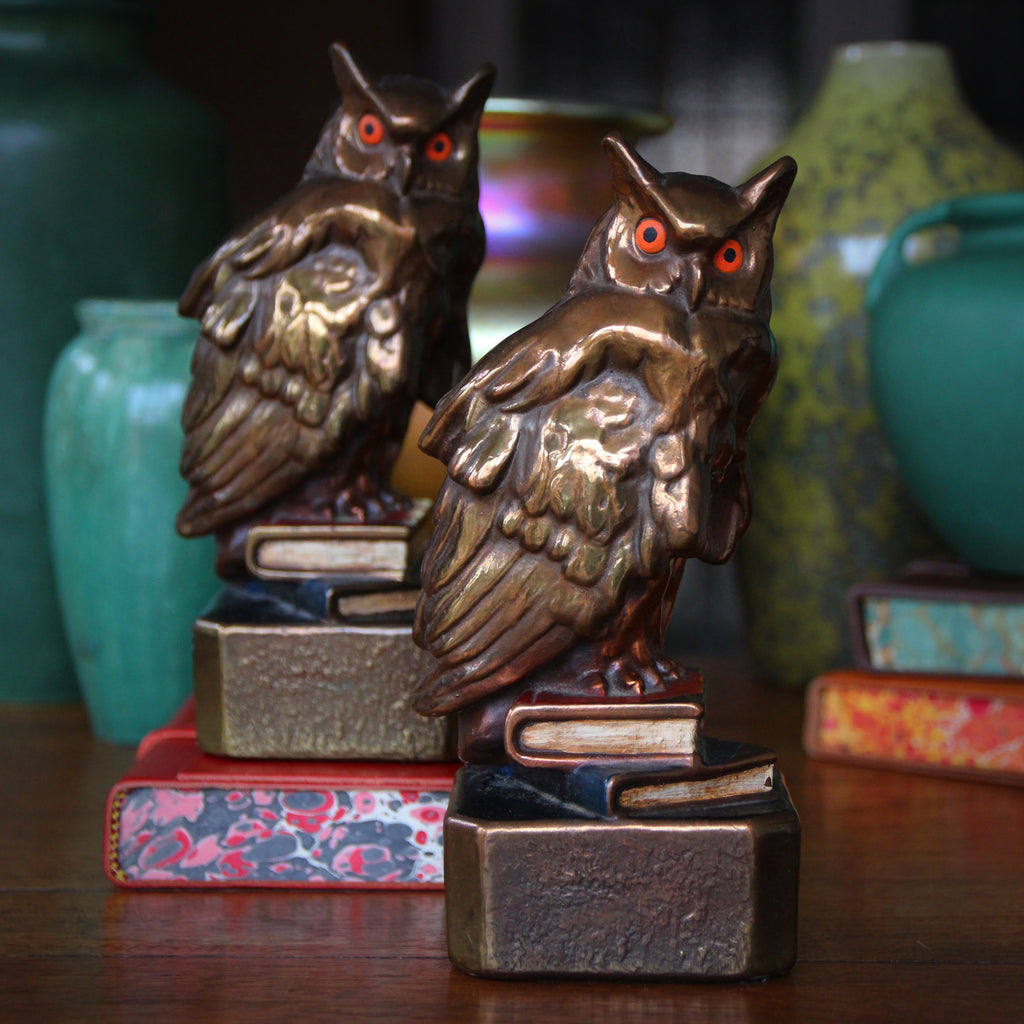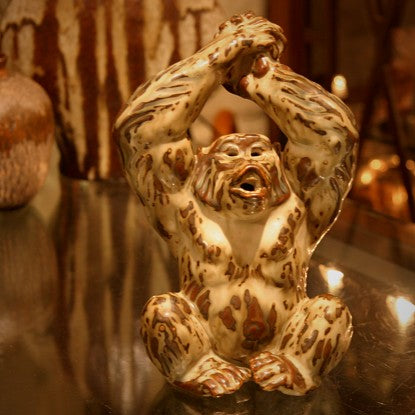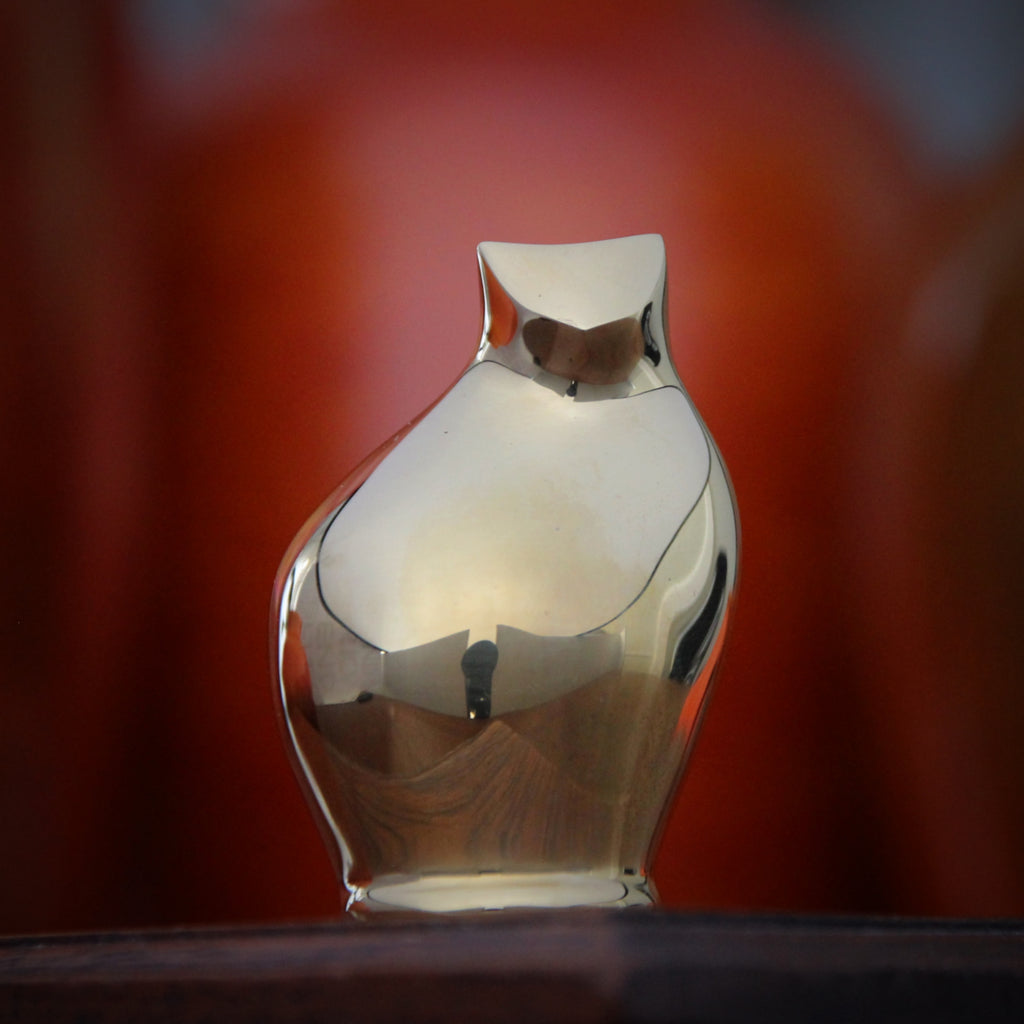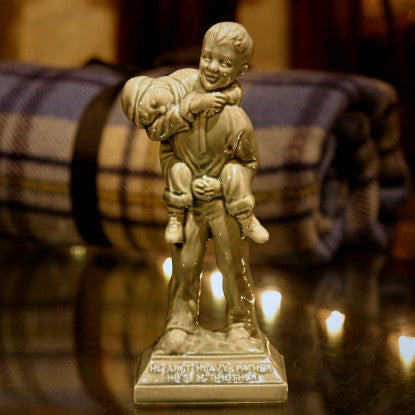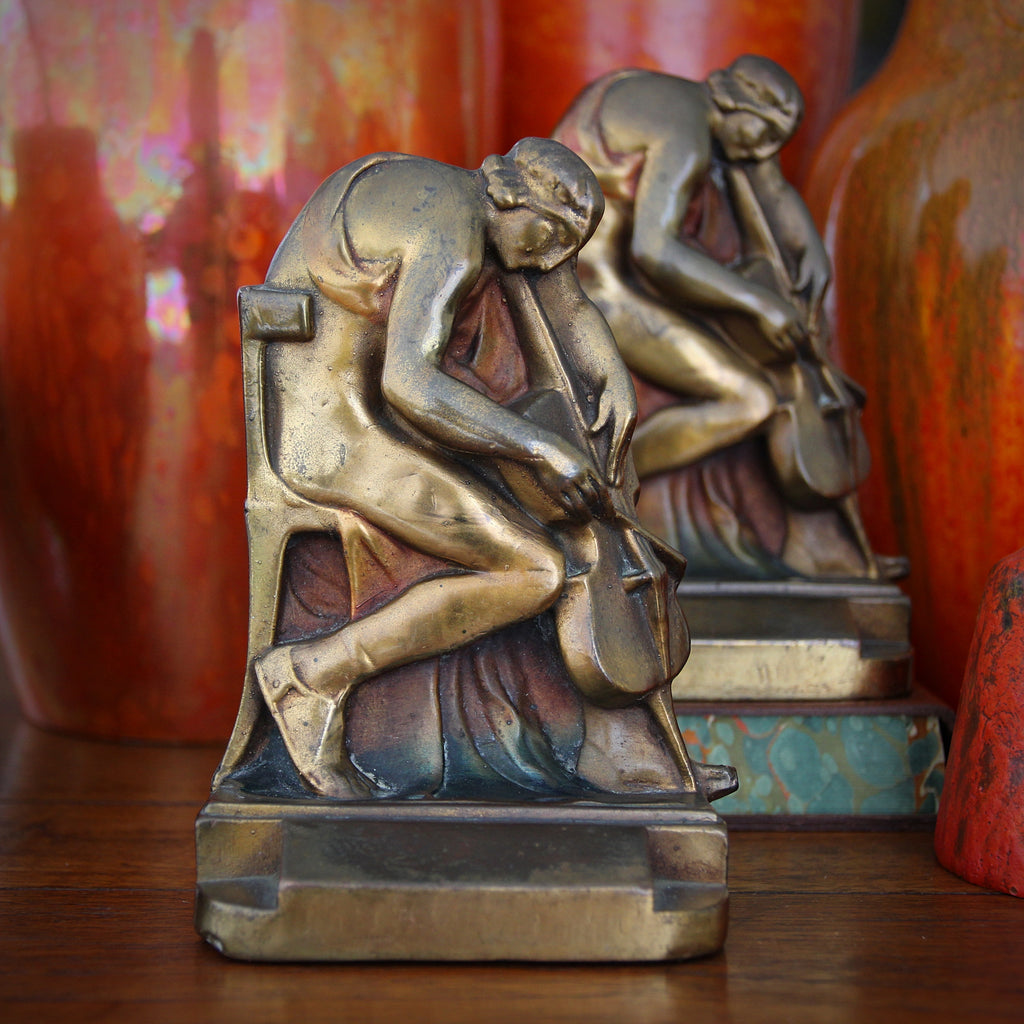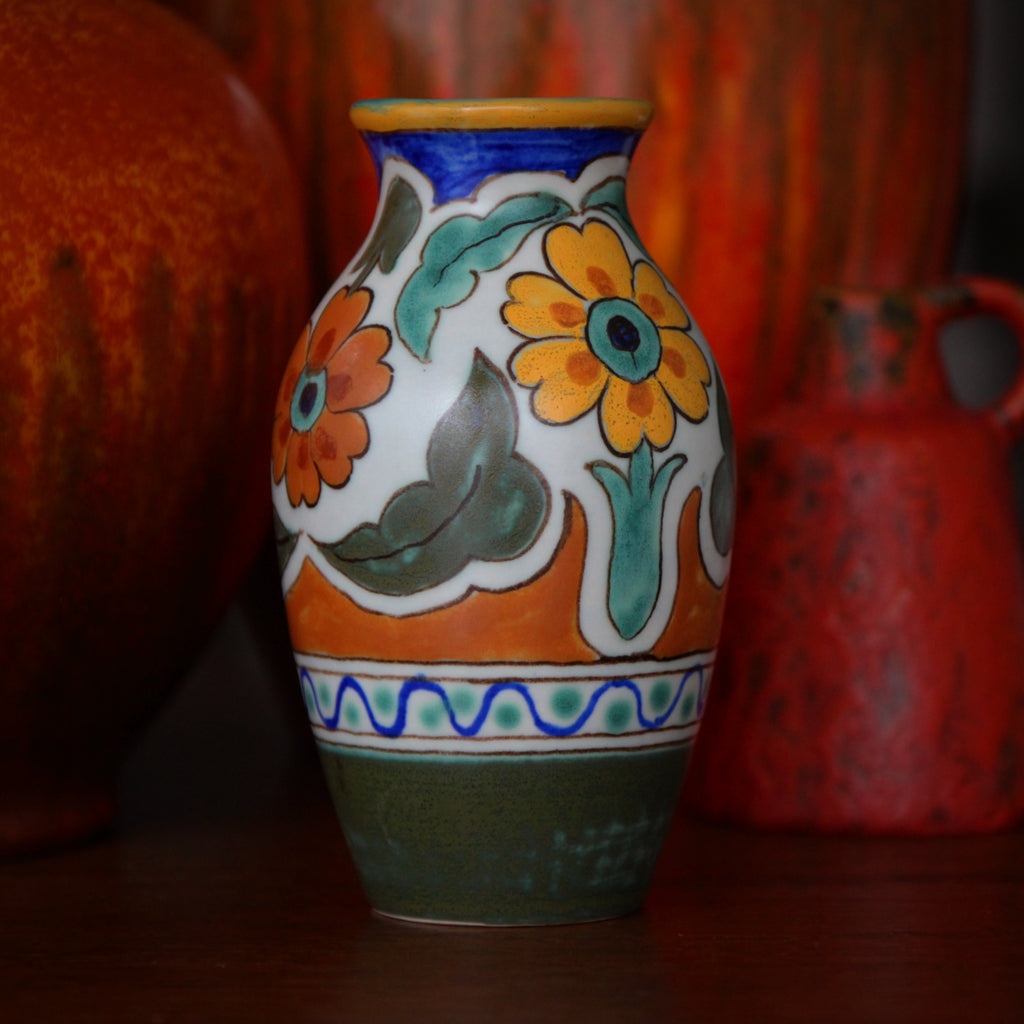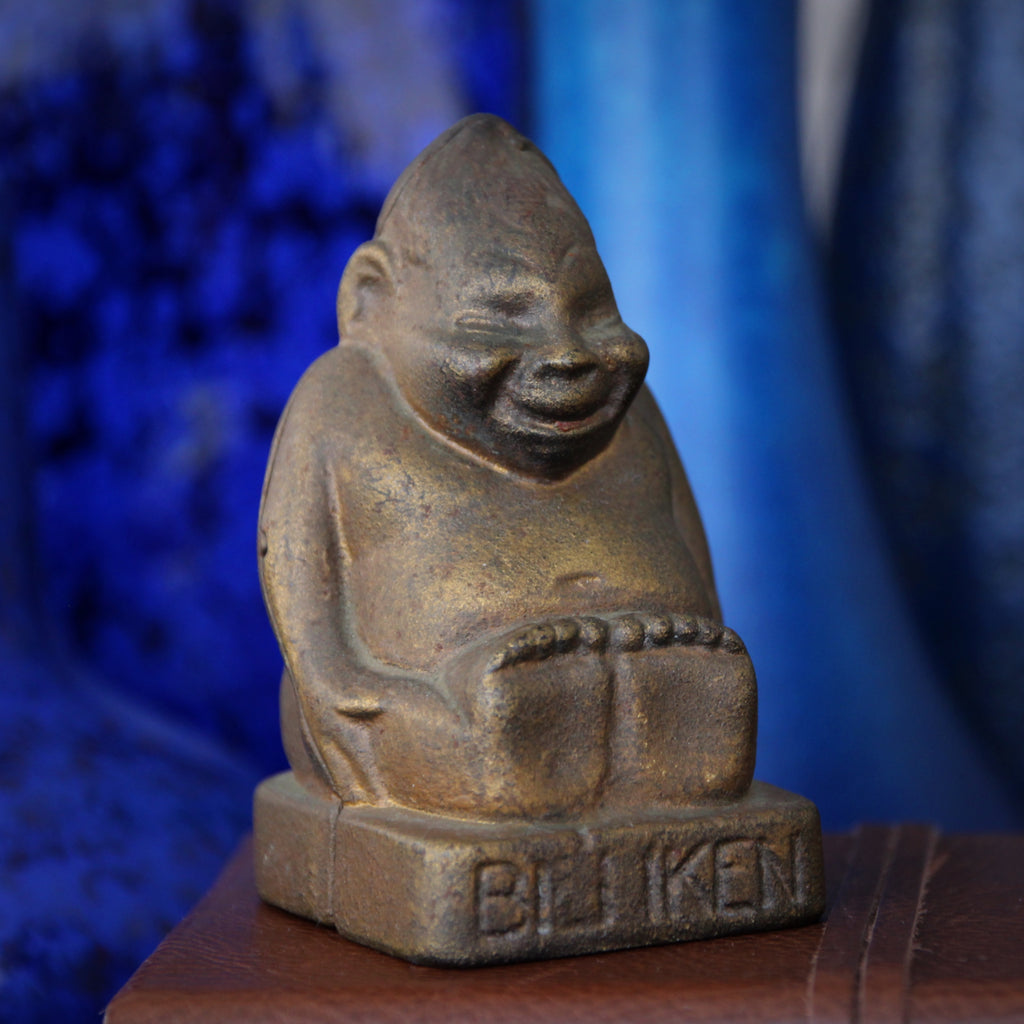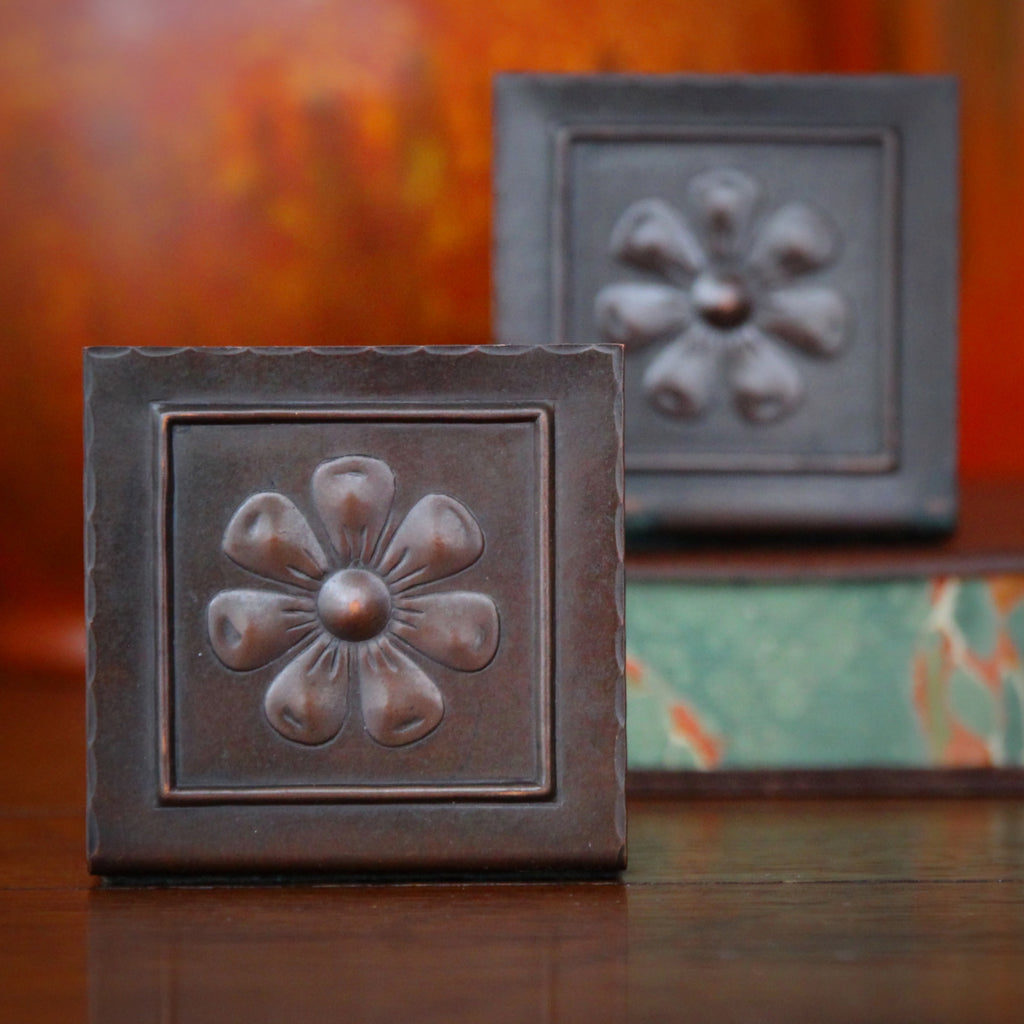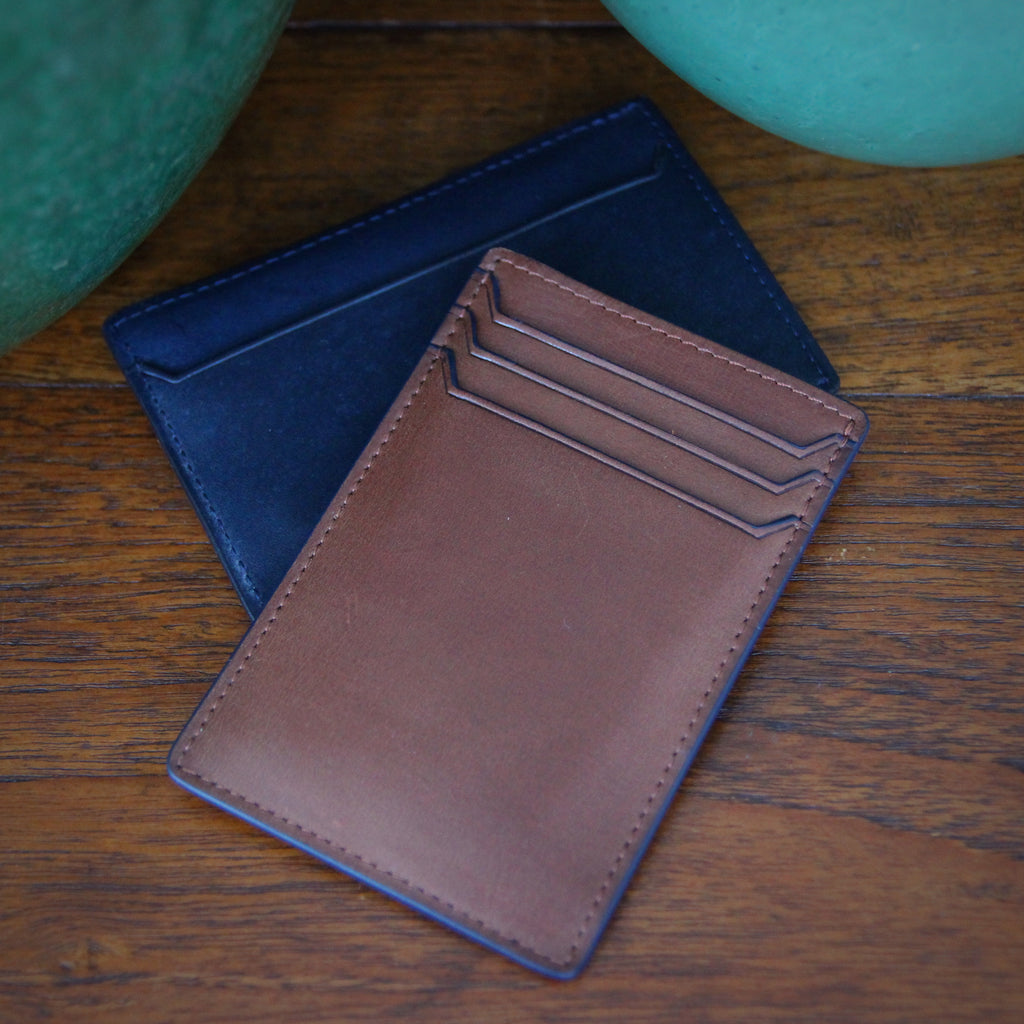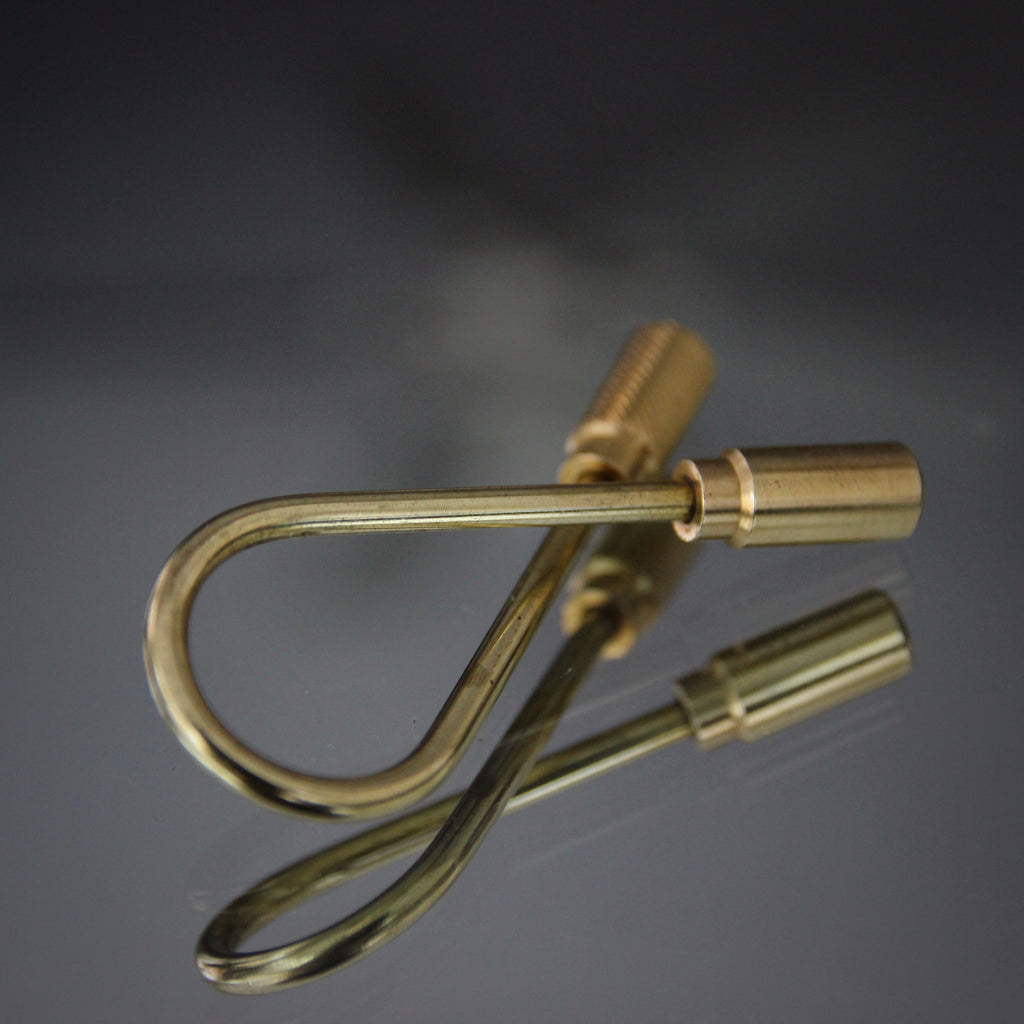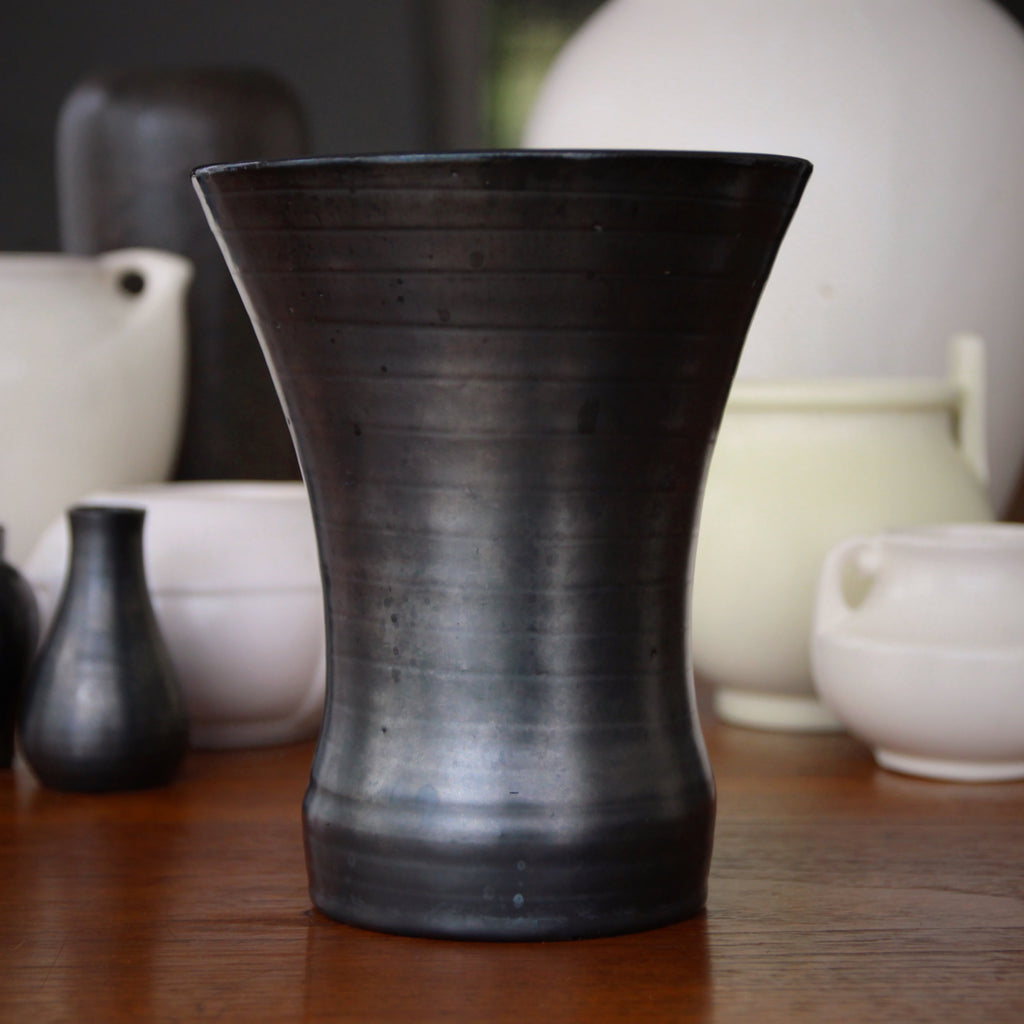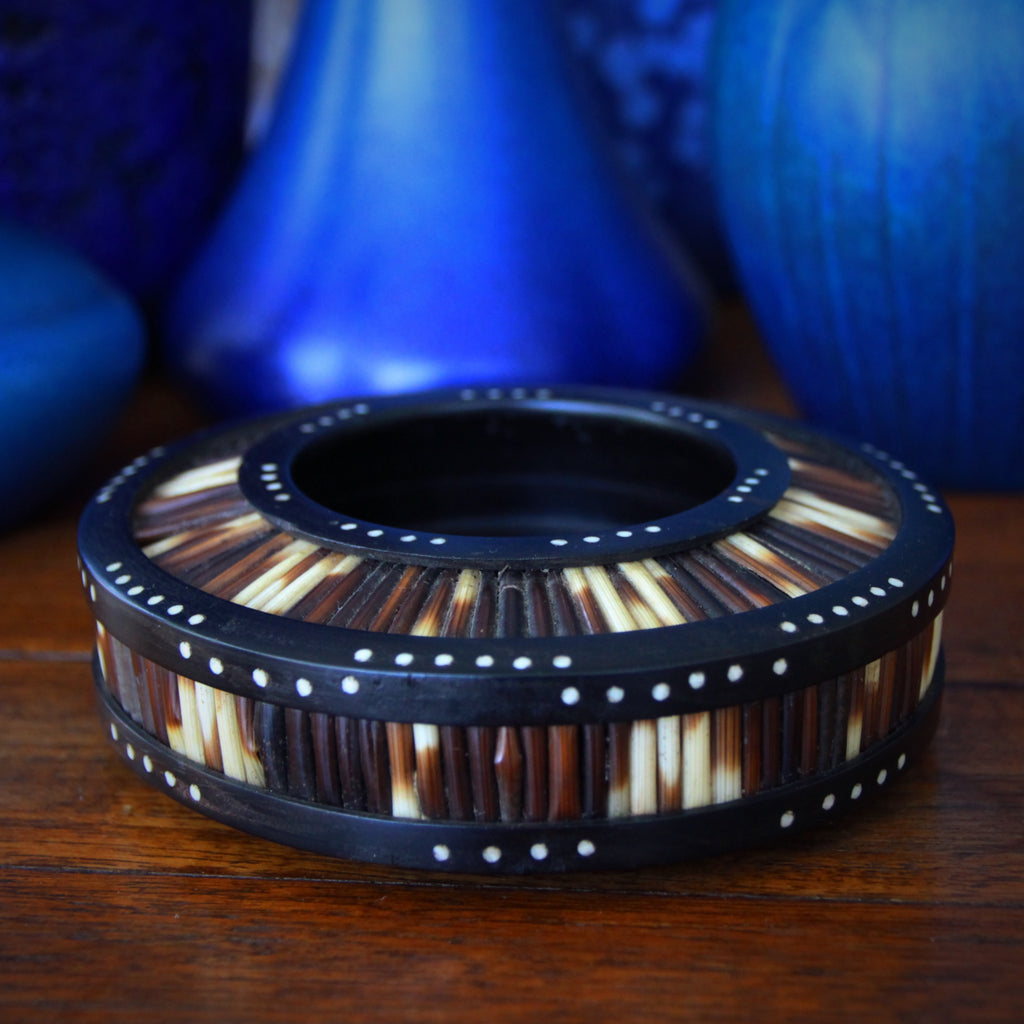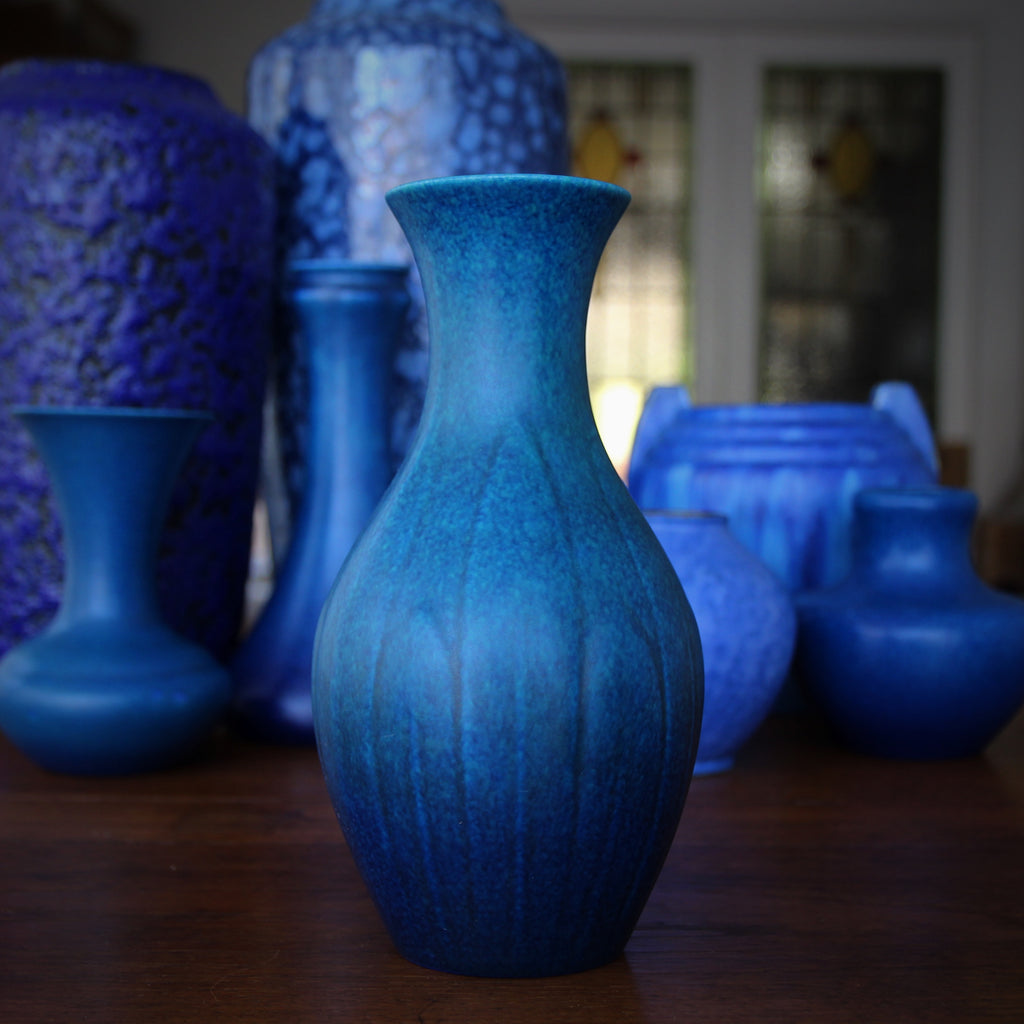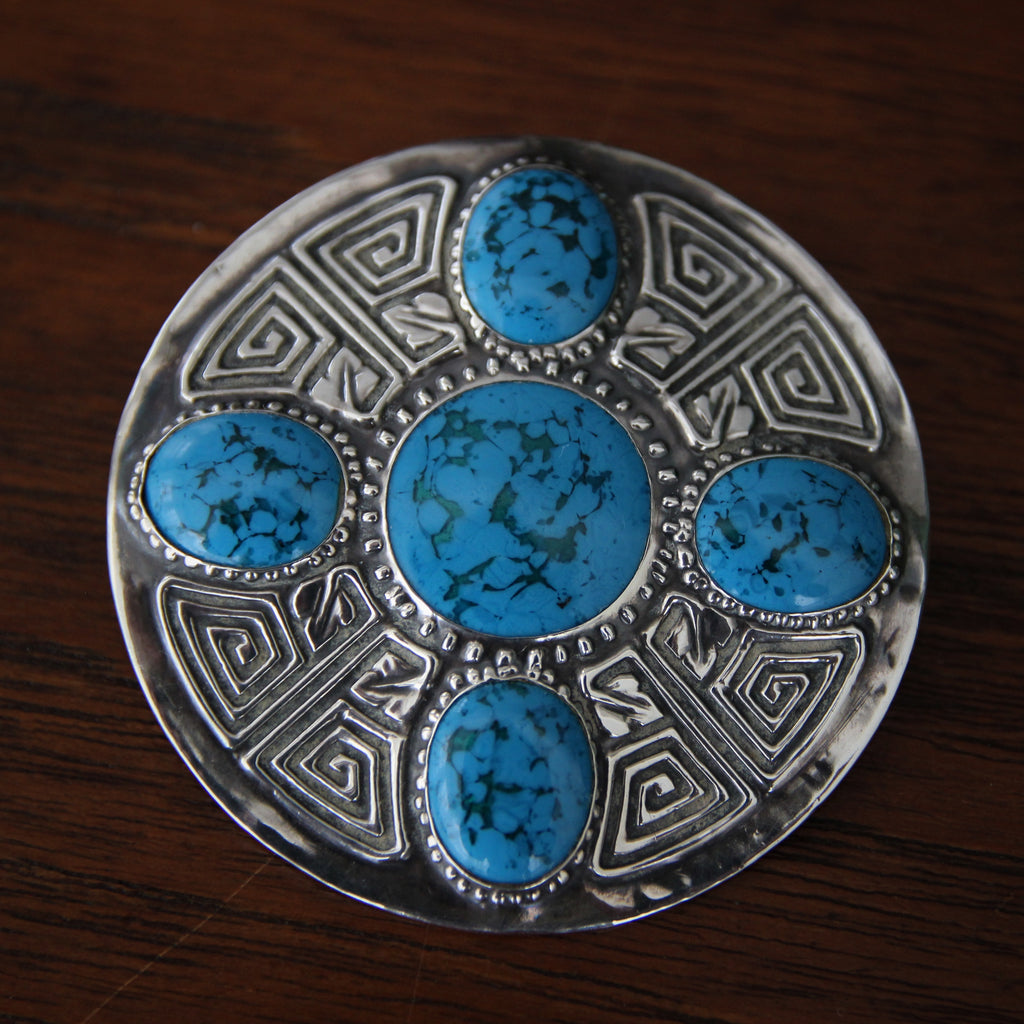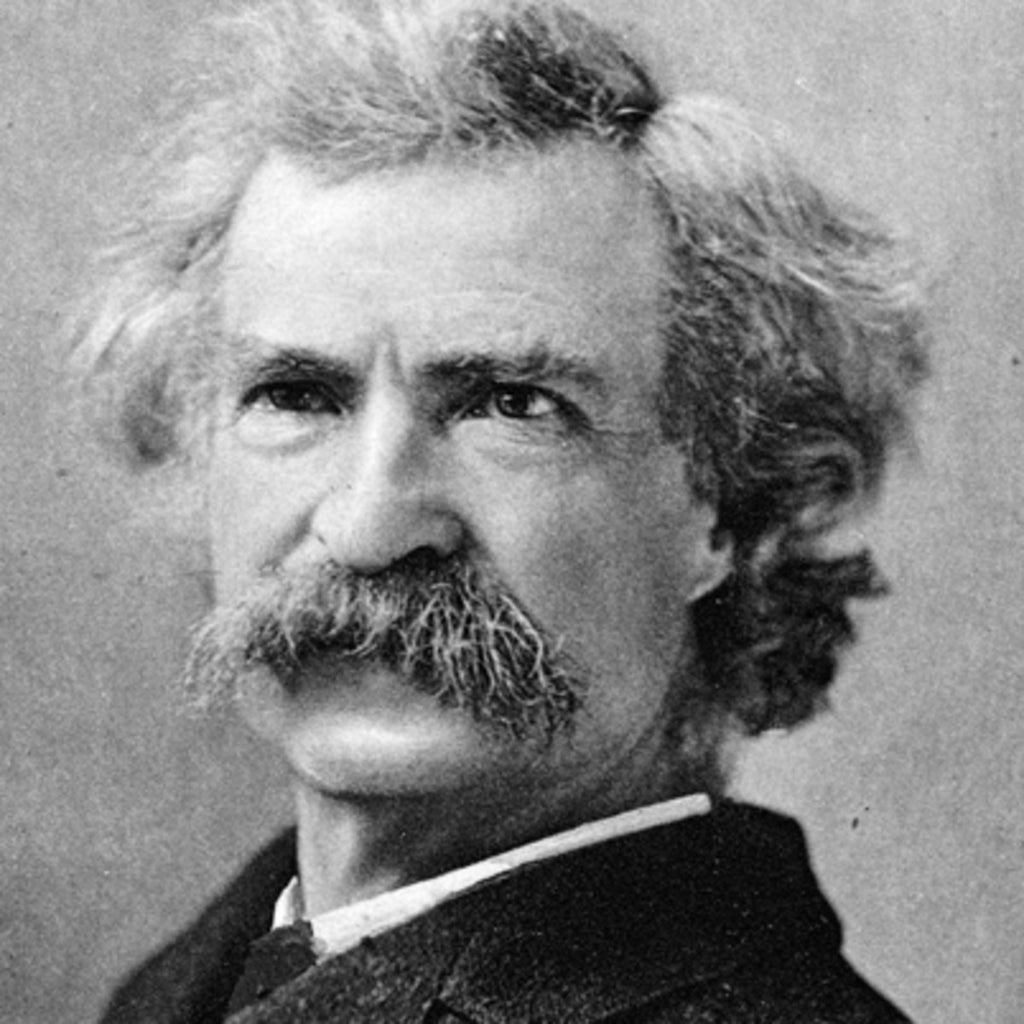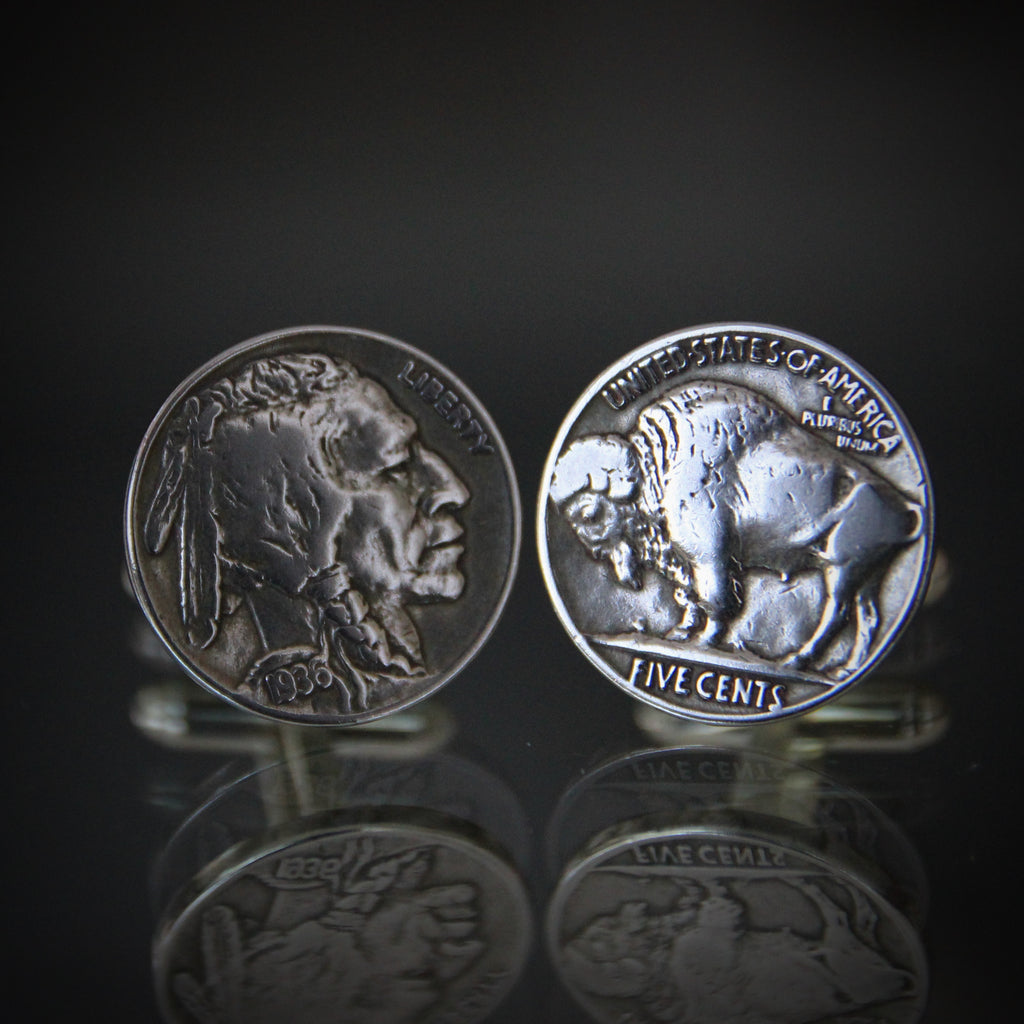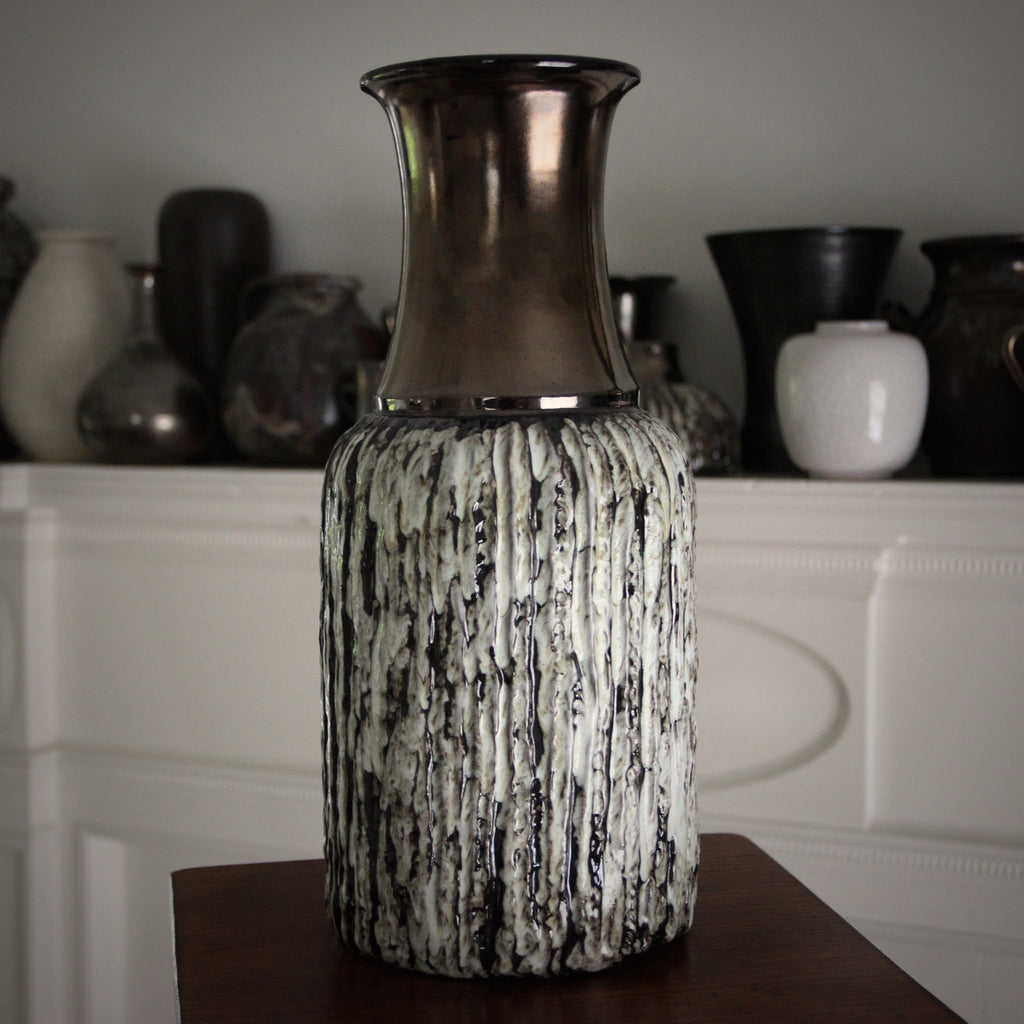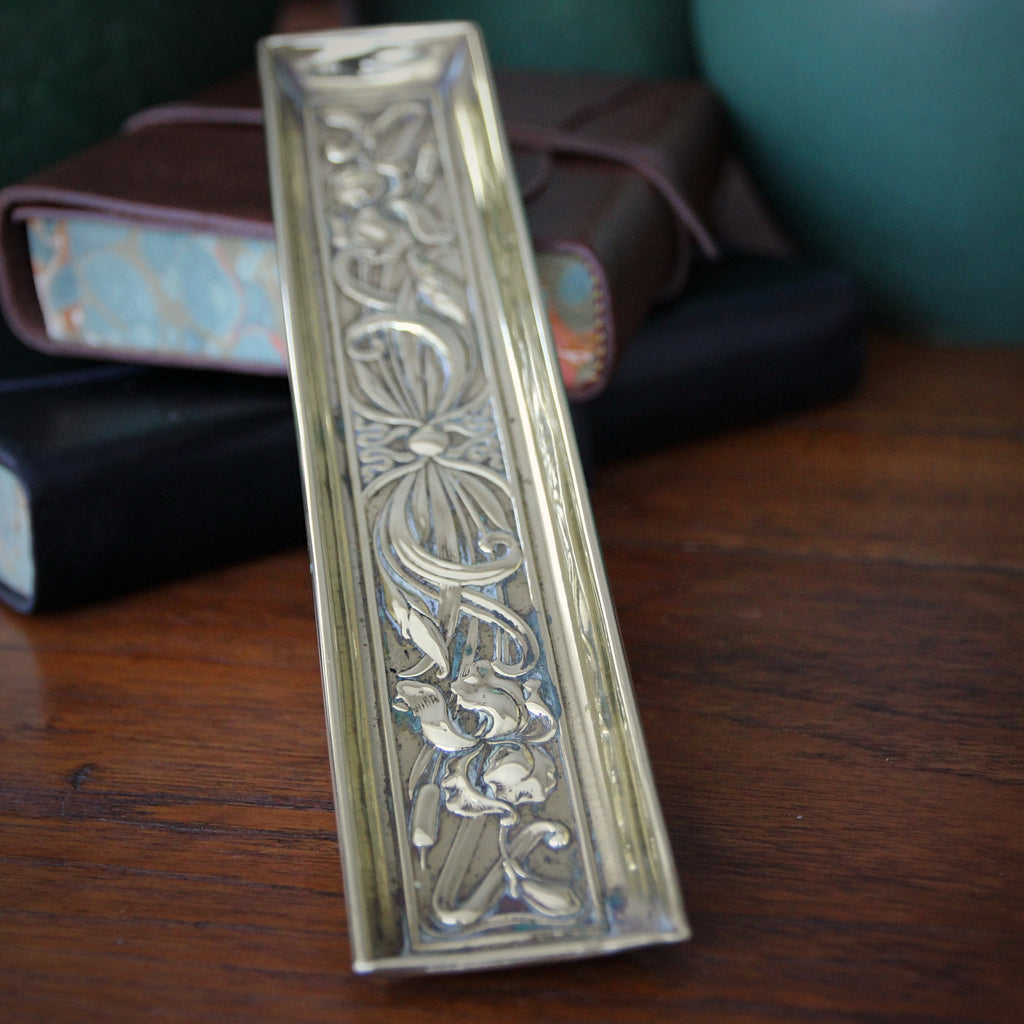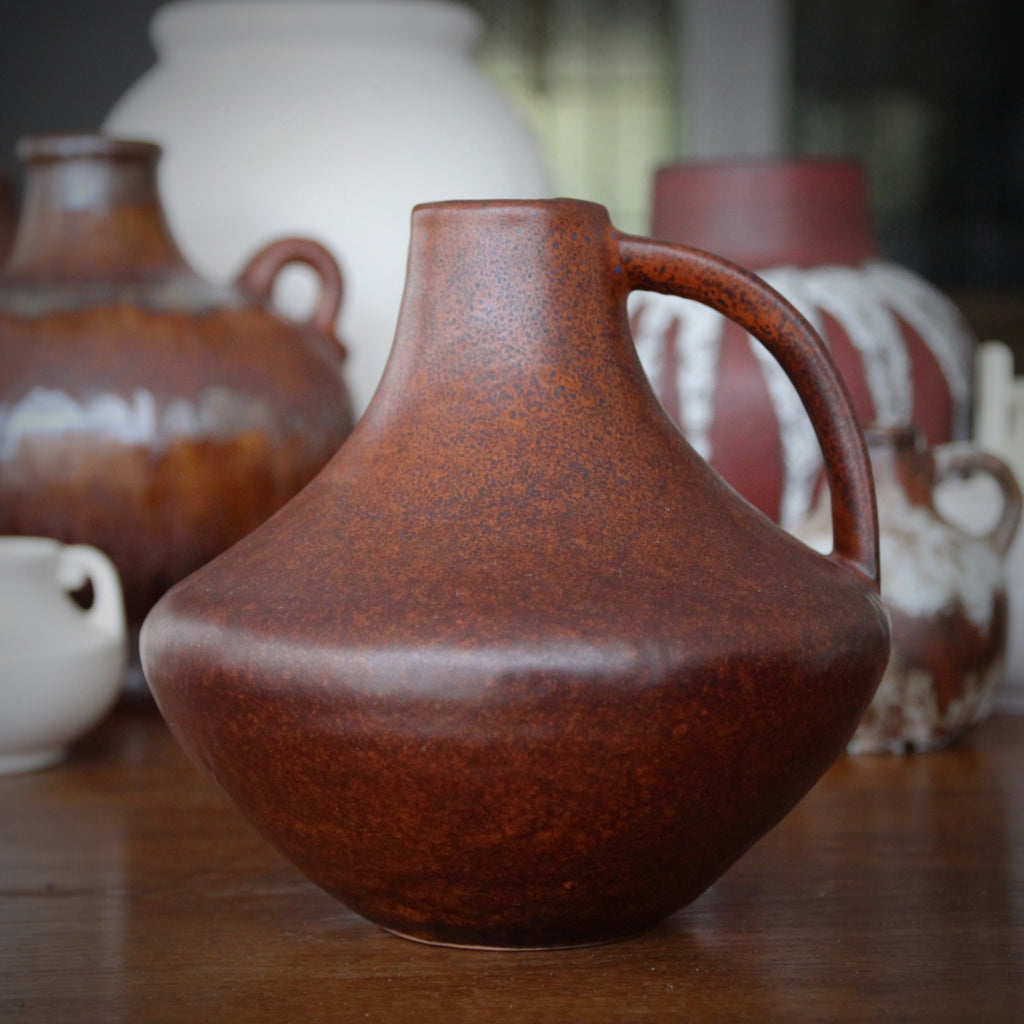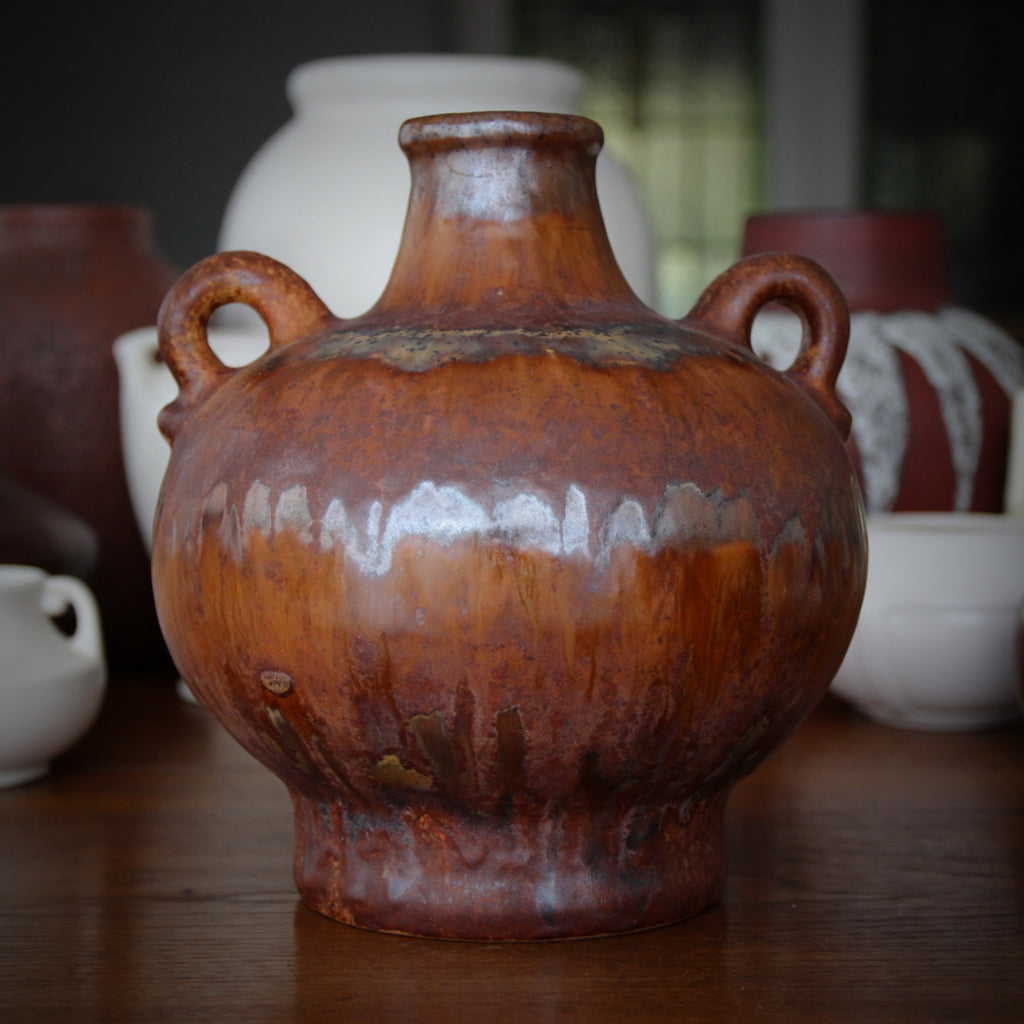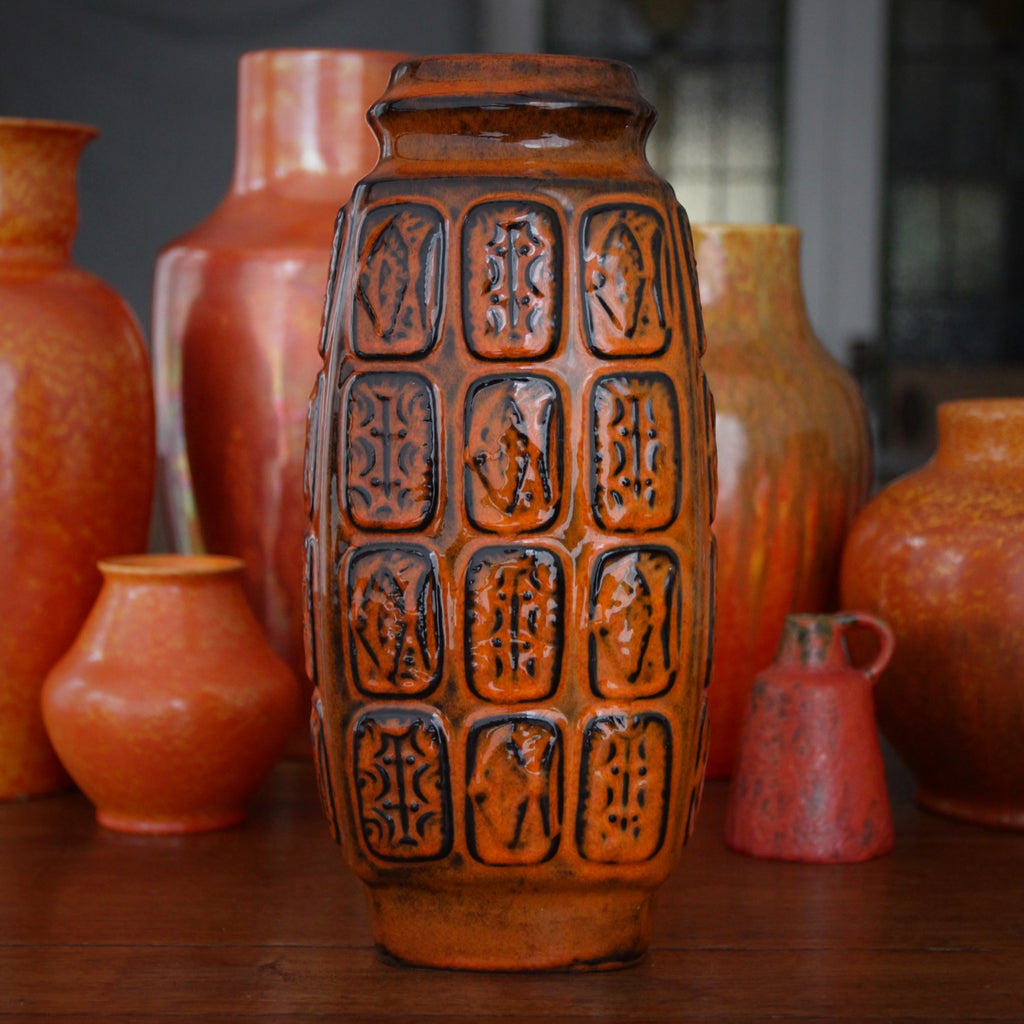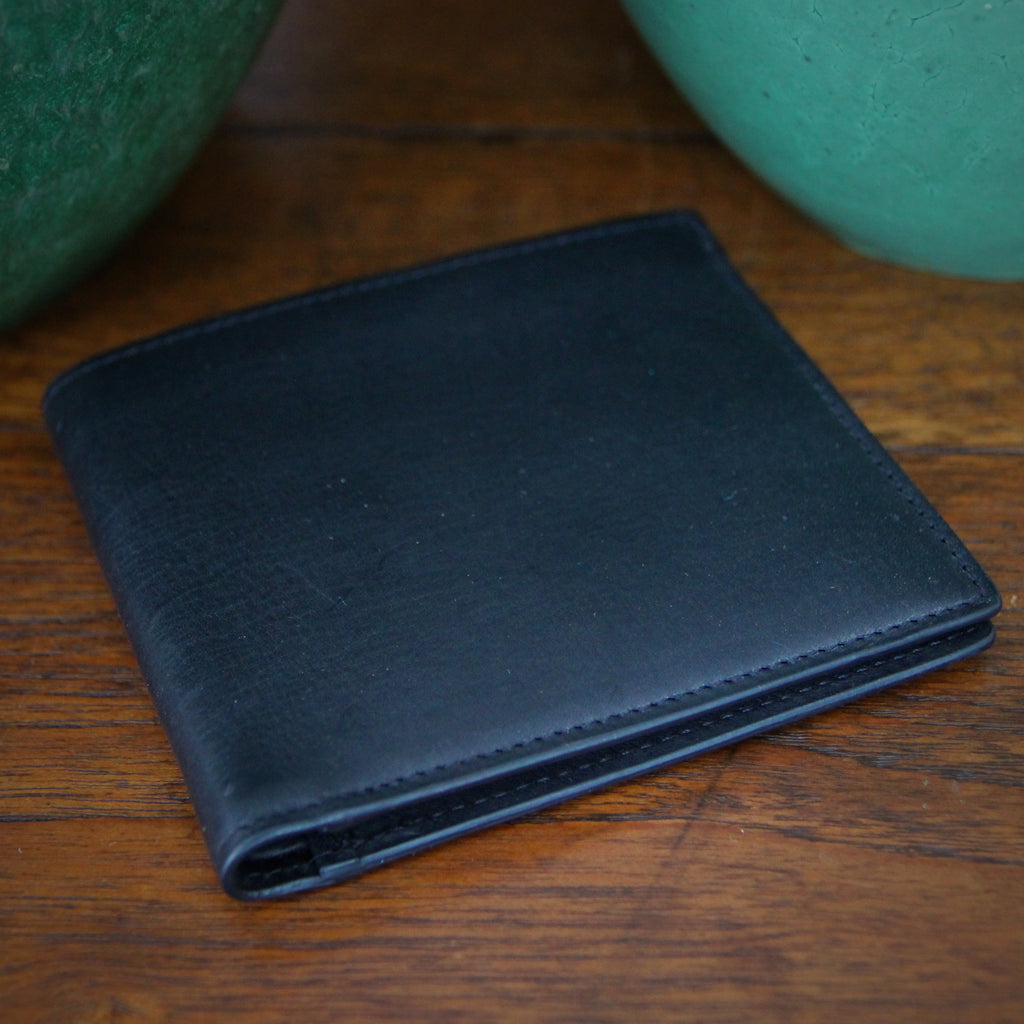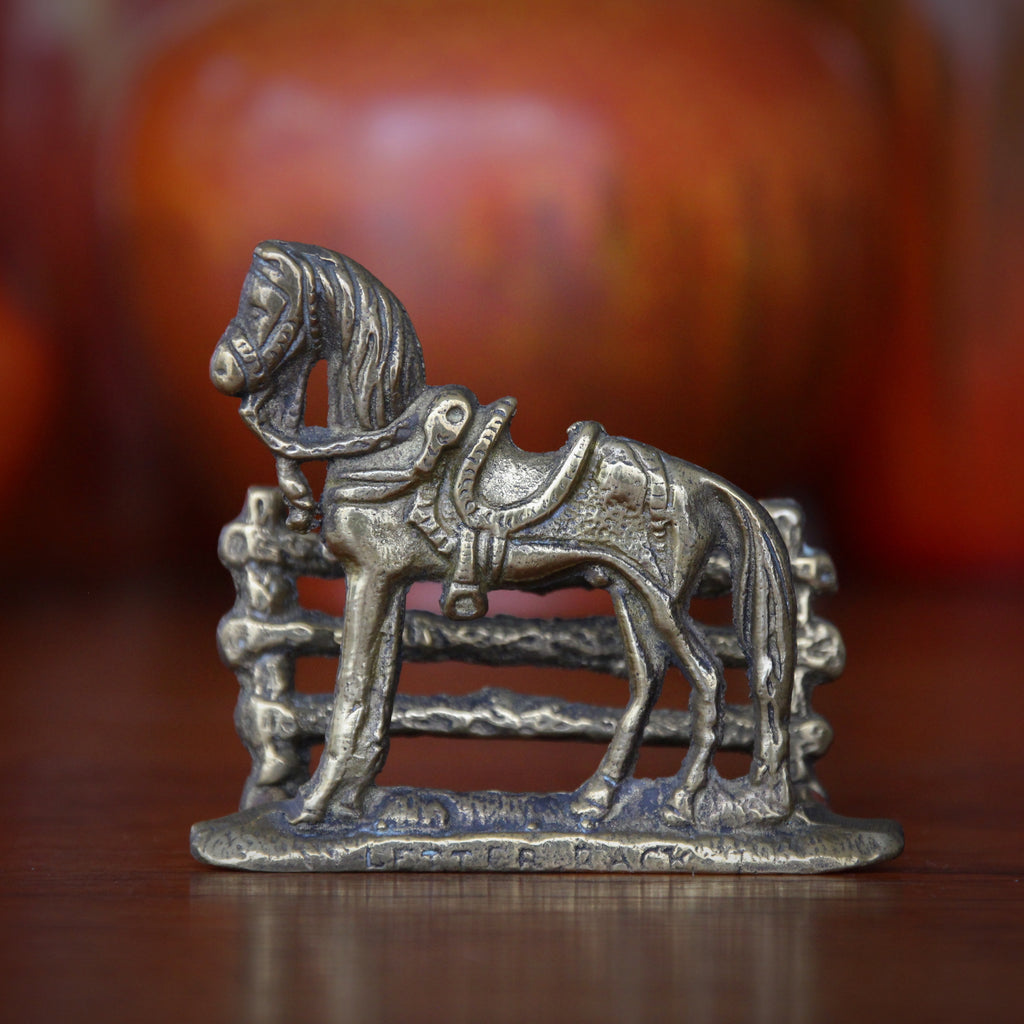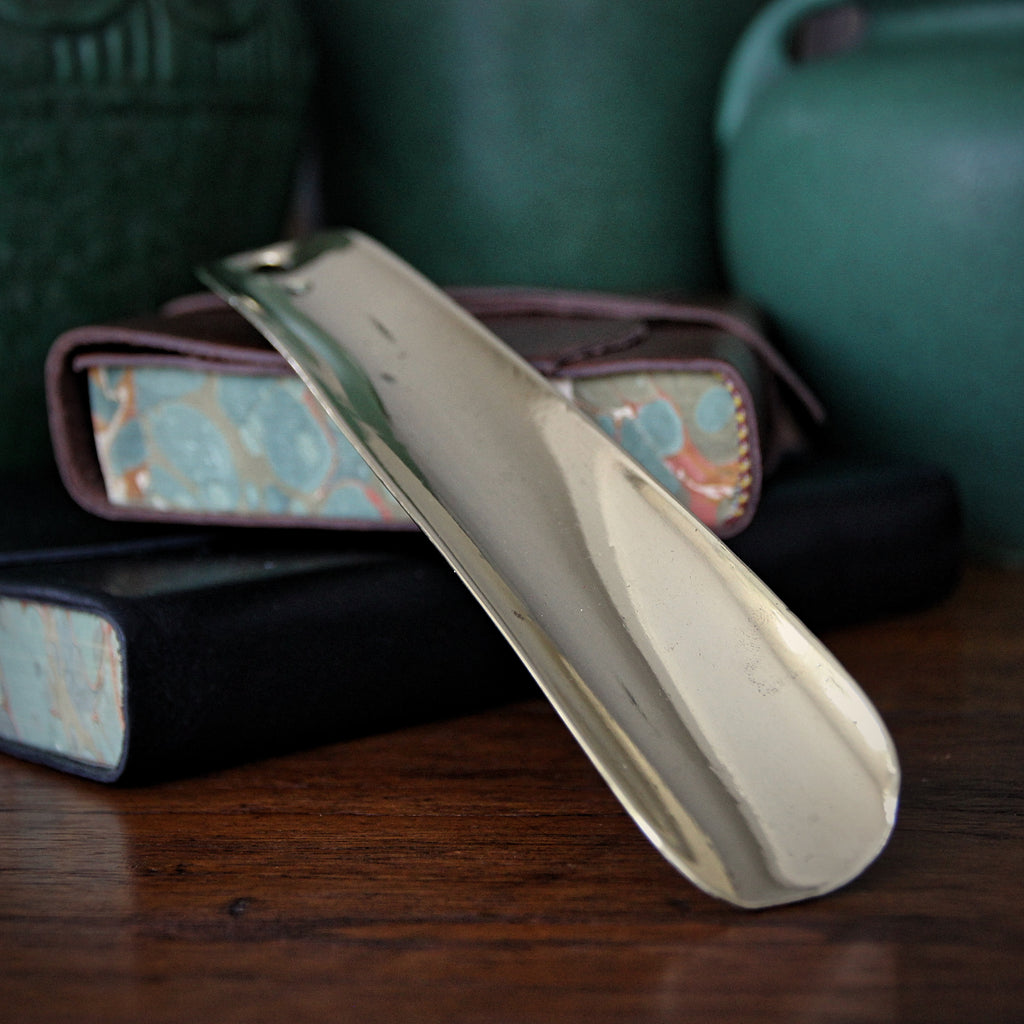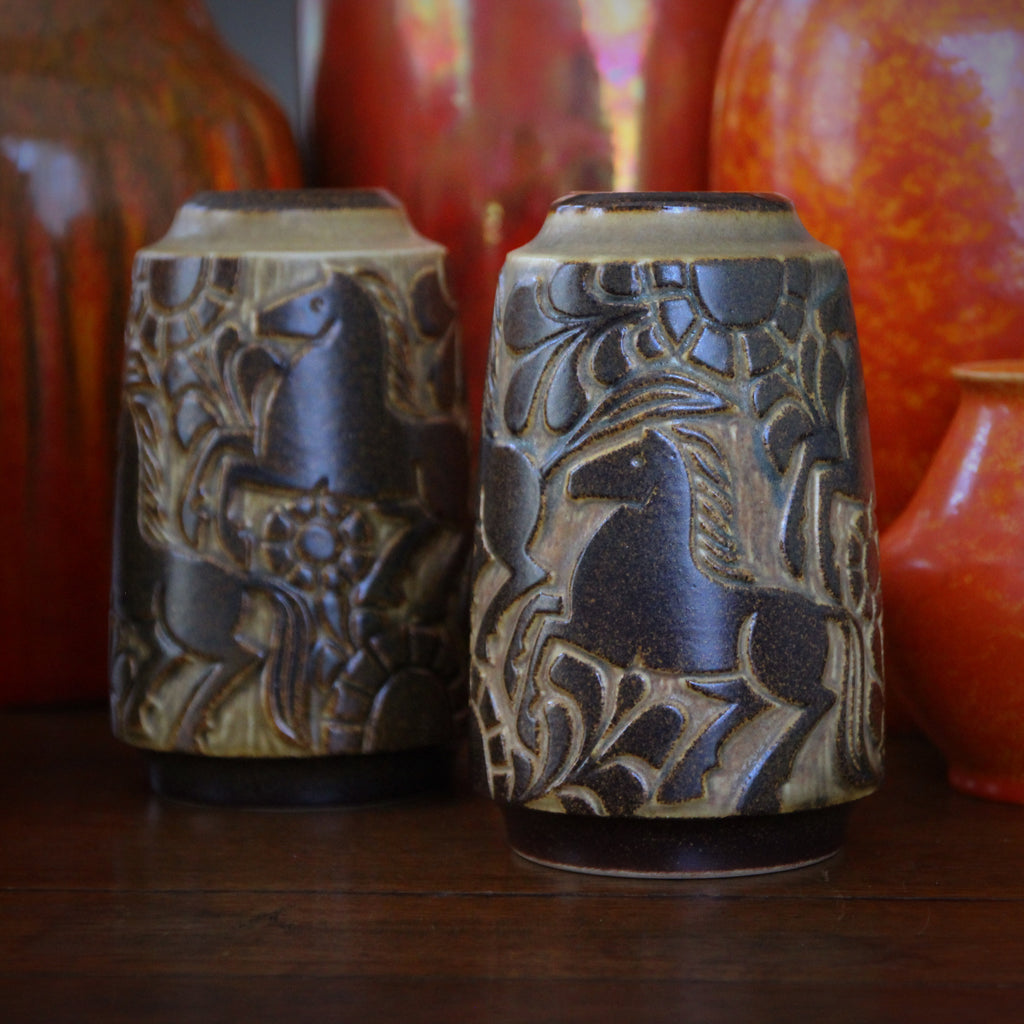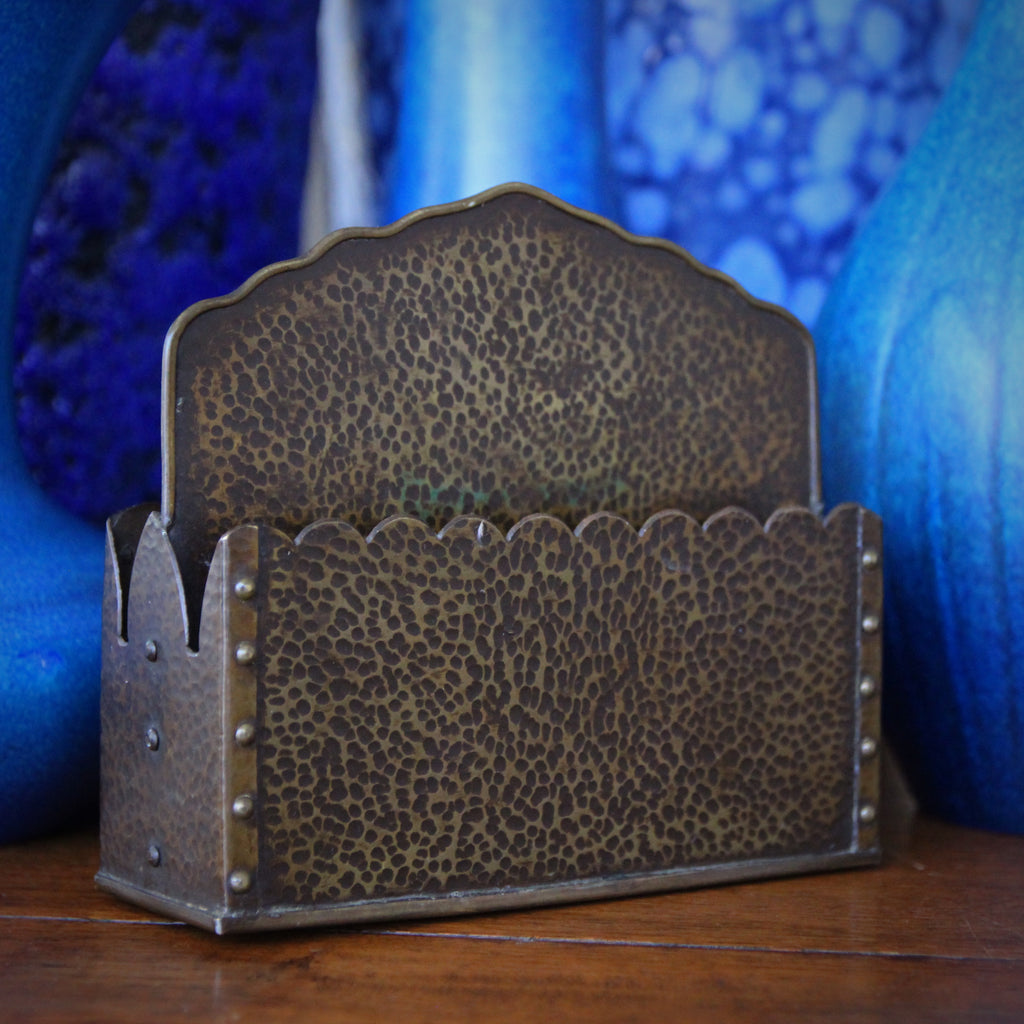JOURNAL RSS
Those who know me are aware that Ruscha is one of my favorite Mid-Century production-scale ceramics makers. Typically it is the glazes—often by Otto Gerharz—that excite my senses. But Ruscha was also known for its interesting shapes, too, especially the Modernist classic "313" pitcher by Kurt Tschörner. It was designed in 1954 and proved so popular that the artist was asked (in the 1960's) to "modify" his design, just a bit, as a concession to the realities of mass production. The original design had a more forward-leaning appearance and a sharper inner joint where the handle met the spout. Getting the original pitchers out of their moulds proved difficult and the rate of loss was unacceptably high. The example shown...
Sophisticated Handcraft
Folkcraft sometimes finds itself at the heart of beautiful design and aesthetics—and it provides meaningful inspiration for creative adaptation in the future. Designers have referenced, for instance, the decorative elements of textile works (like embroidery or lacemaking), carving (like that of Alpine Europe) or basketmaking (from Africa or the American Southwest) when creating new objects, often in a different medium. In the Swiss hand-painted plate, shown above, I am reminded of decorative "folk" embroidery—previously seen, perhaps, on the cuff of a blouse or along the hem of a skirt. It is in this "recycling" (and perpetuation) of local historical design aesthetics that different regions and cultures become associated with certain patterns and motifs. LEO Design's Greenwich Village store is...
A String of Pearls
Pearls are one of Mother Nature's perfect creations. Their shape, their sheen, their modest flawlessness—no other "gem" achieves such majesty so effortlessly. And, until the 20th Century, they were so costly that they remained solely in the possession of emperors and monarchs. With such characteristic merits, it is no surprise that pearls have been used as decorative motifs—in architecture, painting, sculpture and the decorative arts. One contemporary example is the cast pewter frame, shown above. On it, a string of pearls—lined-up like soldiers—provides a delicate yet stately framework for your precious photo or paper memento. Please click on the photo above to learn more about it. LEO Design's Greenwich Village store is now permanently closed. While we contemplate our...
"Studio-Ish"
Yesterday, we discussed the difference between "studio" pieces and "production" pieces. The example above, made by the large-scale producer Jasba, is clearly a production piece—though it has tried hard to emulate its studio siblings. Jasba started by getting the shape just right. Notice that the simple globular form is compressed-downward, as though a gentle force were pushing upon the top of the spherical body. This conveys (aesthetically) a sense of dynamic tension—imbuing the piece with an energy that a perfect sphere does not convey. The little foot, at bottom, elevates the piece, presenting it with an enhanced sense of importance. And the jug's handle is perfectly-sized: not too big, not too small. When a company engages in large-scale production, it...
Countdown to Lent
With Ash Wednesday just two weeks away, it's time to start clearing the larders and thinking about the "spiritual cleansing" that the Lenten period offers. In addition to prayer, fasting and abstinence, charity is one of the cornerstones of the Christian (and other religions') seasonal practice of religious "re-calibration"—a striving for holiness. Alms giving is an age-old practice and a Mite Box, like the one shown above, was used to collect donations for the poor. This example is English, made of mahogany, and probably was used in a church. Click on the photo above to learn more about it. LEO Design's Greenwich Village store is now permanently closed. While we contemplate our next shop location, please visit our on-line...
Studio Ceramics
The term "studio ceramics" can be a nebulous term and is sometimes used to imbue clarity of provenance to a piece of work which is otherwise a mystery. Admittedly, I have used the term many times myself. In its most basic sense, the term "studio ceramics" differentiates those pieces which are made in a small-scale workshop—usually by hand—as opposed to "production" pieces which were made in a "mass-produced" factory environment. The term "studio" implies a more artful, thoughtful, careful and rare piece—although aesthetics and quality are always in the eye of the beholder. Most often, the term "studio vase" is used when the merchant or collector does not know the name of the ceramicist. If he did, he would quickly drop...
Double Feature
This frame (and its on-line siblings) is a bit of a happy miracle. Beautifully designed, expertly crafted, it was made right here in the United States. And in New York City, no less! It's proof that quality manufacturing can survive in our otherwise service-oriented economy. It's a pleasure to support such local industry which does not attempt to plumb the lowest common denominator. As such, this frame is not trendy, it is not disposable, and it is not cheap. Instead, it is a one-time purchase which will last a century or more—physically and aesthetically. And it's reminiscent of a time when Americans were willing to pay more for something that would last a good, long time. Please click on the photo...
Italian Time
Italy is my favorite travel destination—and I easily could spend every remaining vacation of my life exploring (and absorbing) a new Italian village or city. So I am well aware that Italy shines brightly in certain respects (style, atmosphere, attitude, design) and is (ummm...) less highly-regarded in other areas (precision timing, prompt shipping). I keep this in mind while considering this handsome and stylish pewter sandglass. While the sand-cast metal is beautifully designed and crafted, it is less-effective as a precision timepiece: sometimes it hits the thirty minute mark, sometimes it will add or subtract a minute (or two, or less) to that timing objective. Che importa? Who cares? In keeping with Italy's age-old experience with time, you'll find a...
Aluxes
Aluxes are mythical Mayan "elves"—not unlike Irish Leprechauns or Hawaiian Menehune. Though usually invisible—or, at least, unseen—they can take the form of knee-high dwarves. And they are known to be mischievous. But their mischief-making does not carry an evil intent; instead, they will sometimes create chaos while attempting to protect their territory. In recent years, while a bridge was being built in Mexico, it kept collapsing, inexplicably. Local residents of Mayan ancestry explained that the builders had failed to ask permission of the little aluxes before commencing work. The engineers rectified the situation by creating a little house under the bridge—so that the aluxes could continue to live in the area, undisturbed. The small house can still be seen (under...
Age Old Sand-Casting
This handsome old-world beaker was made in contemporary Italy in the age-old sand-cast method. Used since mankind first started casting metals (in the Bronze Age), sand-casting remains a low-tech and wonderful technique for creating rustic and satisfyingly naive metal objects. First, an "original" (that is, the item to be duplicated) is pushed into a tray of sticky sand. Once lifted out, a depression is left in the sand—into which molten metal (in this case, pewter) is poured. Once the cast piece has cooled and solidified, the piece is taken out, chased (that is, cleaned of burrs and other major irregularities), and polished. Although an accurate duplicate is created, this "unsophisticated" method allows for plenty of idiosyncrasies and the hand-crafted sensibility of...
Anglo-Egyptian
This mid-century studio art vase was made in 1950's England. Its stoney, mottled blue glazing is as irresistible as is the strangely-"canopic" form silhouette of the vessel. For centuries, canopic jars were used as part of the Ancient Egyptian burial ritual. Different organs were kept in each of four jars and interred alongside the deceased's body. The earliest vessels had plain lids. In time, the lids became more elaborate, and eventually were carved bearing the heads of humans or Egyptian gods. Although canopic jars have a grisly association, one must admit that their voluptuous form is sheer perfection. The vase above seems to swell—as if by an inner force—and is capped with a satisfying rim. Please click on the photo above...
Love Notes
A love note for your Valentine? Sometime's the sweetest surprise is that unexpected token, tucked-away in a purse or wallet. And with this handsome note holder, you'll always be ready to write. The polished pewter piece was designed by Danish Modernist artist Erik Magnussen and made by Royal Selangor. Please click on the photo above to learn more about it.
Happy Valentine's Day!
LEO Design's Greenwich Village store is now permanently closed. While we contemplate our next shop location, please visit our on-line store which continues to operate (www.LEOdesignNYC.com).
Follow us on Instagram: "leodesignhandsomegifts"
Follow us on Facebook: "LEO Design - Handsome Gifts"
Aged to Perfection
Given time and the right environmental conditions, all metals will "patinate" (that is, "tarnish"). Some metals, like silver, tarnish very quickly. Others, like copper, take decades to develop a rich, dark patina. Pewter needs several years (and dry conditions) to develop a dark, rich grey finish like the French Art Nouveau vase, shown above. Brass falls on the middle of the "tarnish continuum." And some metals, like bronze, are often purposely patinated at the time of manufacture to give them a certain look—for example, antique gold, chocolate brown or verdigris green. In the world of decorative arts, the condition of a metal's finish can often make-or-break the value of an item. Although tastes vary, the general rule is: the longer...
Heavy and Light
Can something be heavy and light? If so, I guess this Roth vase proves the phenomenon. Heavy, stone-like taupe glazing is dressed with a dash of foamy blue—a kiss of sky and clouds on an otherwise earth-bound piece. Learn more about it by clicking on the photo above.
LEO Design's Greenwich Village store is now permanently closed. While we contemplate our next shop location, please visit our on-line store which continues to operate (www.LEOdesignNYC.com).
Follow us on Instagram: "leodesignhandsomegifts"
Follow us on Facebook: "LEO Design - Handsome Gifts"
Architects Attempt Sculpture
Though clearly Art Deco—in period and style—these 1930's bookends foreshadow the "Brutalist" aesthetic to come two decades later. Brutalism was a design ethic which swept worldwide architecture in the third-quarter of the Twentieth Century. Coming on the heels of the Second World War, it sought to overturn the (so-called) "frivolous" aesthetic of previous human generations, and, perhaps, to shock the world with its defiant rejection of grace. Brutalism is known for its brazen angularity and a lack of any concern for "fitting-in" to the existing community of buildings. Though it is often described as the expression of "function over form," it is more often perceived as an insolent disregard for traditional conventions of beauty. The new, post-War generation of designers...
In a Peddler's Wake
In days of yore, well before Amazon, a traveling salesman would stop by your office to sell you screws, springs or hosing—or whatever your industry required. And he would usually leave a little something behind; something handsome and useful and likely to remind you to place another order. This spring-form letter holder and pen rest was made of cast iron around 1910. The advertiser's name, "K Diamond" prominently (though tastefully) featured on each side. Over the past 24 years, I have found three of these—one in a far away Shanghai flea market! Please click on the photo above to learn more about it. LEO Design's Greenwich Village store is now permanently closed. While we contemplate our next shop location,...
Painted Desert
While this vase was made miles away from the American Southwest—many thousands of miles away—it still reminds me of our North American rustic desert landscape. The soft blue skies, marbled with clouds, layered atop sand and clay, a mountain ridge in the distance, even the hand-incised drum-like "fluting" near the bottom somehow transmit an "Out West" sensibility. In actuality, the vase was hand-crafted on the Baltic island of Bornholm, a possession of Denmark. The pottery workshop, Michael Andersen and Sons, was productive during the Danish Modernist movement. This piece was made in the 1950's. Learn more about it by clicking on the photo above. LEO Design's Greenwich Village store is now permanently closed. While we contemplate our next shop...
The Temple of Concordia
The Tempio della Concordia in Agrigento, Sicily, is the best preserved Doric Order temple in the world (alongside the Parthenon in Athens). It was built around 440-430 BC when the pre-Italian island was an important part of the Greek world. It was later named after the Roman goddess of harmony. It is surrounded by 20 foot tall fluted columns—six along each short side and 13 along each long side—topped, naturally, with Doric capitals. Each column tapers subtly near the top and swells gently in the middle which gives the column a dynamic tension—as though the column were straining to bear the weight of the roof. The temple was converted to a Christian Basilica (of Saints Peter & Paul) in the...
Pinched Pot
Bretby—the English ceramics factory—was active from 1882 until 1933. During this period, they produced Victorian designs, Aesthetic Movement wares, Arts & Crafts ceramics and Art Deco goods. With such a broad range of styles, the company was always interested in exploring new ideas and new trends. This piece, from their strangely-named "Nurtenware" line, was always curious to me. Though cast in a mould, it resembles a piece that was hand-formed and manipulated—squeezed, in fact. Perhaps the designers at Bretby were taking a cue from the highly-Modernist American ceramic works of George Ohr, the "Mad Potter of Biloxi." Ohr developed an interest in ceramics at the age of 22 (in 1879). His wildly designed and crumpled pieces (many with metallic glazes)...
Picture This
We've just added a number of handsome pewter frames to our on-line shop. And there are many more to be shot in the weeks to come. Shown above, just one example: an 8" x 10" cast pewter frame with a crisp "rope" design. Learn more about it (and its siblings) by clicking on the photo above.
LEO Design's Greenwich Village store is now permanently closed. While we contemplate our next shop location, please visit our on-line store which continues to operate (www.LEOdesignNYC.com).
Follow us on Instagram: "leodesignhandsomegifts"
Follow us on Facebook: "LEO Design - Handsome Gifts"
Kung Hei Fat Choi!
According to the Chinese zodiac, 2019 is The Year of the Pig. It's the final (twelfth) character of the cycle—since the Pig was the last guest to show-up when summoned by the Jade Emperor. People born in the year of the pig are down-to-Earth, focussed on their work and tenacious about sticking to their goals. Because of a disciplined work ethic, they are likely to become financially secure (in time), even if born to a poor family. They don't stand out in a crowd and will never be accused of being "all talk, no action." Pigs also tend to be gentle and quiet. Their patience and desire to be helpful makes them great teachers or coaches. Though pigs are careful...
Ten Days to Go...
A gentle reminder . . . Saint Valentine's Day is less than a week and a half away!.
And, since time is our most precious commodity, perhaps this Italian sand-cast pewter sandglass will be a reminder of time's fleeting nature. Spend your precious time with the one(s) you love. Click on the photo above to learn more about it
LEO Design's Greenwich Village store is now permanently closed. While we contemplate our next shop location, please visit our on-line store which continues to operate (www.LEOdesignNYC.com).
Follow us on Instagram: "leodesignhandsomegifts"
Follow us on Facebook: "LEO Design - Handsome Gifts"
The Horse Tamers
In the Art Deco period, "heroic" human figures—like this "Trojan Horseman"—would be used as decorative elements in the architecture of the day. Usually, the sculpture was designed to represent some intangible element of a robust society: commerce, labor, agriculture. A walk through central Washington, DC will present many such examples—on Thirties buildings which manage and guide the various important agencies for the nation. The theme of "Horse Tamers" in artwork is one that goes back to Rome with the monumental sculptures of Castor & Pollux (and their horses) standing near the Baths of Constantine on Quirinal Hill. A pair of sculpted Horse Tamers by Baron Peter Clodt von Jurgensburg (plus two more by a different artist) grace the Anichkov Bridge...
Parti, Without a Trace
Gilbert Méténier was born in the small town of Gannat, in central France, in 1876. His father, Louis, purchased a tile factory in 1916—a curious time, considering that this was during the middle of World War One—and he established a ceramics studio there. The early works were mostly unsigned and little documentation of that work exists. In 1920, Gilbert took-over management of the family business. Under the son, the workshop grew, eventually employing a dozen workers. The pieces were now signed and sold in smart Parisian department stores and in French "spa towns" along the French Riviera. In 1940, with the Germans approaching, Gilbert Méténier closed the workshop—destroying the moulds, lest the enemy get them—and escaped, possibly to the South...
Amethysts for February
Welcome to February and its birthstone, the amethyst. Although these sterling silver Art Deco cufflinks do not bear the actual gemstone, they are dressed in a handsome, amethyst colored enamel—and would make a lovely gift for any February birthday. Learn more about them by clicking on the photo above. Up until the Nineteenth Century, amethysts were very precious; they were considered one of the rare (and expensive) "Cardinal Gemstones"—alongside rubies, diamonds, sapphires and emeralds. At the time, they were only to be found in Austria and Russia (where the most beautiful, deep-purple amethysts were found). Medieval monarchs—especially in England—adorned themselves with the royal amethyst. Even today, Anglican bishops wear an amethyst in their episcopal rings. This is due to the...
Matsumoto Castle
Matsumoto Castle is one of Japan's most famous buildings and a designated National Treasure. Principally built between 1593 and 1594, it soon became the home of the "Matsumoto Domain" during the Tokugawa Shogunate of the Edo Period (1603-1868). It is within the Nagano Prefecture, some 40 miles south of Nagano. Built of wood, atop a stone base, Matsumoto Castle is unusual in that it was not sited upon a hilltop or on an island. Instead, it is a "flatland" castle, protected by a wide man-made moat (which, in turn, is surrounded by cherry trees). The six story building is sometimes called "Crow Castle" due to its black coloration and gracefully upswept eves. These cufflinks, probably Japanese, are silver decorated with striking...
Japanese Bamboo
Can you hear the wind passing through the bamboo—a satisfying rustle of leaves overhead? These sterling silver Art Deco cufflinks, made in the 1930's, are probably American, not Japanese. Nevertheless, they capture a popular theme during the 1930's, "the exotic Far East." Actually, it was a time when most Americans couldn't imagine making such a long trip—nor could they afford it. But a small, alluring indulgence, like these cufflinks, might afford its wearer a moment of romantic glamour, a modest experience of enjoying the larger world. Please click on the photo above to learn more about them. LEO Design's Greenwich Village store is now permanently closed. While we contemplate our next shop location, please visit our on-line store which...
My Deer
This gentle little deer—a fawn, perhaps—is both relaxed and a little alert. Did he hear a twig snap? He'd be happy to sit on your windowsill, bookshelf or desk. He'd even look good next to a little bonsai. He was made in 1969 by Danish ceramicist Knud Kyhn for Royal Copenhagen. Please click on the photo above to learn more about it.
LEO Design's Greenwich Village store is now permanently closed. While we contemplate our next shop location, please visit our on-line store which continues to operate (www.LEOdesignNYC.com).
Follow us on Instagram: "leodesignhandsomegifts"
Follow us on Facebook: "LEO Design - Handsome Gifts"
Saw it Through the Grapevine
Art Nouveau craftsmen—whether they be in England, Austria, Scotland, France or the United States (and whatever they called their local Arts & Crafts movement)—often "recycled" decorative elements from their cultural or national pasts. English artisans often tapped Medieval themes (from literature or heraldry), aesthetic motifs from their ancient past (including Norse or Celtic elements) or significant design styles from the past (though centuries old). And the hand-crafted nature of Arts & Crafts production leant itself to the rustic work methods of earlier times. The English Arts & Crafts frame, shown above, was made around the year 1900. Nevertheless, it has a style and design of something from the Tudor or Jacobean period, up to 400 years earlier. Even the manner...
Erik Magnussen - part II
Here's another offering, designed by Danish Modernist artist Erik Magnussen (1940-2014). A covered sugar bowl and beaker-form creamer are cast in pewter and polished to a high shine by Royal Selangor (founded 1885). Please click on the photo above to learn more about it.
LEO Design's Greenwich Village store is now permanently closed. While we contemplate our next shop location, please visit our on-line store which continues to operate (www.LEOdesignNYC.com).
Follow us on Instagram: "leodesignhandsomegifts"
Follow us on Facebook: "LEO Design - Handsome Gifts"
Erik Magnussen - part I
Danish artist, Erik Magnussen (1940-2014), is amongst Denmark's preeminent Modernist designers. Trained as a ceramicist, one of his earliest jobs was working for Bing & Grøndahl. Later, he was hired to design items—furniture, lighting, hardware, tabletop wares—for quality manufacturers and retailers around the world. His works are exhibited in museums worldwide. The salt and pepper shakers, shown above, were designed by Magnussen for Royal Selangor (founded 1885). They are cast in pewter and polished to a high shine. Please click up on the photo above to learn more about them. LEO Design's Greenwich Village store is now permanently closed. While we contemplate our next shop location, please visit our on-line store which continues to operate (www.LEOdesignNYC.com). Follow us...
This Bear was Made for Walking
You'll enjoy watching this stoneware bear—relaxed and happy—stroll across your desk, bookshelf or mantelpiece. He was designed by Danish sculptor Knud Kyhn and made by Royal Copenhagen. Click on the photo above to learn more about him. And see many other Knud Kyhn pieces in our on-line shop.
LEO Design's Greenwich Village store is now permanently closed. While we contemplate our next shop location, please visit our on-line store which continues to operate (www.LEOdesignNYC.com).
Follow us on Instagram: "leodesignhandsomegifts"
Follow us on Facebook: "LEO Design - Handsome Gifts"
Royal Mail
Store your mail in style. This English Arts & Crafts oak letter holder is clad with hand-tooled brass plates—which show stylized botanicals and a snarling, reticulated dragon. At top, a glass amethyst "turtleback" cabochon punctuates the entire design. Suitable sitting on a desk or hanging on the wall from its brass hook. Please click on the photo above to learn more about it.
LEO Design's Greenwich Village store is now permanently closed. While we contemplate our next shop location, please visit our on-line store which continues to operate (www.LEOdesignNYC.com).
Follow us on Instagram: "leodesignhandsomegifts"
Follow us on Facebook: "LEO Design - Handsome Gifts"
Twinkle, Twinkle!
This silver-plated amphibian, when wound, will play "Twinkle, Twinkle, Little Star." The English lullaby, based on an 1806 poem, is set to the popular French children's song "Ah! Vous dirai-je, maman" ("Shall I tell you, Mother" - 1761). The tune became even more popular when a 25 year old Mozart composed twelve variations on the theme. Although the music box, above, is meant as a child's gift, it has proved just as popular with adults—due to it's realistic, warty sculpting and the irresistible childhood tune. Please click on the photo above to learn more about it. LEO Design's Greenwich Village store is now permanently closed. While we contemplate our next shop location, please visit our on-line store which continues...
Easy Green
When I first opened my store in 1995—and before I even knew what the Arts & Crafts movement was—I knew I really liked these rich green ceramics. Most were vases, others were bowls or jardinieres—but it was a strong collection and I loved it. As the months passed, I would sell a few pieces, buy a few pieces and try to keep the collection going. In time, however, it became too difficult (and expensive) to add new pieces. In more time, my collection waned (except for the handful of pieces I had at home!). Well, I've renewed my efforts to build-back my collection of green ceramics—like the piece here, finished with a semi-matte green glaze. Because they are early (mostly from...
Nouveau German
Like most regional Art Nouveau movements, the German Jugendstil used naturalistic elements as decorative motifs. Here a copper tray is embossed with a pattern of leaves, berries and whiplash-form vines. Perhaps the berries were meant to echo the glasses of berry wine, possibly carried on the tray. It is finished with brass handles and ball feet. It was made by Württembergische Mettalwarenfabrik, also known as WMF, during the 1910's. Please click on the photo above to learn more about it. LEO Design's Greenwich Village store is now permanently closed. While we contemplate our next shop location, please visit our on-line store which continues to operate (www.LEOdesignNYC.com). Follow us on Instagram: "leodesignhandsomegifts" Follow us on Facebook: "LEO Design - Handsome...
Art & War
War has been described as hours of crushing tedium, punctuated with moments of fierce and life-altering intensity. For this reason, soldiers and sailors have long found ways to pass the time—perhaps handcrafting a simple gift for a sweetheart left back home. And necessity dictates using the supplies at hand, in this case a bronze artillery shell casing. The metal shell has been crafted into an ashtray, from which a stag leaps from the pediment at center. It was made at some time during World War Two—by an unknown artisan, for an unknown loved one. It's a bit of naive folk art, combined with the history and pathos of a person at war. Please click on the photo above to learn more about...
From Across the Sea
"In the old days," ultramarine blue was amongst the rarest—and costliest—of pigments. It was made of ground lapis lazuli, carefully mined in Afghanistan and hand-carried all the way to Europe. Even the name, "ultramarine," implies exoticism: "from across the sea." Today, ultramarine blue is not as difficult to procure—and, thus, a lot cheaper. But it is every bit as beautiful as it ever was. This vase, made by Ruscha, was glazed by master ceramicist Otto Gerharz. Click on the photo above to learn more about it. LEO Design's Greenwich Village store is now permanently closed. While we contemplate our next shop location, please visit our on-line store which continues to operate (www.LEOdesignNYC.com). Follow us on Instagram: "leodesignhandsomegifts" Follow us...
Peterborough Cathedral
Some 85 miles north of London stands Peterborough Cathedral, one of the great churches of Britain. Principally built between 1118 and 1237, this English Gothic masterpiece stands on the site of an earlier church, founded in 655. Saints Peter, Paul and Andrew look down from the three central gables, appropriate as the cathedral's official name is the Cathedral Church of Saint Peter, Saint Paul and Saint Andrew. The church was originally a Catholic house of worship. When Henry VIII "dissolved the monasteries"—thus stripping the churches of their precious objects and banning Catholic worship—it was converted to an Anglican cathedral. But Henry's first wife, Catherine of Aragon, had already been buried in the church—and remains there to this day. Later, the Scottish...
Style and Substance - part III
Another pair of English sterling silver cufflinks, finished with a handsome treatment of aqua and sapphire blue enameling. They're very stylish, exhibiting classic Art Deco style. Their lack of any wear and tear, however, bring their age into question. But they were nice—and priced right—so I bought them. Click on the photo above to learn more about them.
LEO Design's Greenwich Village store is now permanently closed. While we contemplate our next shop location, please visit our on-line store which continues to operate (www.LEOdesignNYC.com).
Follow us on Instagram: "leodesignhandsomegifts"
Follow us on Facebook: "LEO Design - Handsome Gifts"
Style and Substance - part II
Such a fresh color combination: pistachio and white! And the color makes this pair of Art Deco cufflinks pop! Concentric ovals of guilloché work radiate outwards, adding an additional level of finesse to this handsome pair of cufflinks, made in the 1930's. Please click on the photo above to learn more about them.
LEO Design's Greenwich Village store is now permanently closed. While we contemplate our next shop location, please visit our on-line store which continues to operate (www.LEOdesignNYC.com).
Follow us on Instagram: "leodesignhandsomegifts"
Follow us on Facebook: "LEO Design - Handsome Gifts"
Style and Substance - part I
If I could only buy one type of jewelry for the rest of my life, it would be Art Deco enameled silver cufflinks. The pair above, tick this specific box. I am not, however, certain of their age. They are beautifully designed, well-made, and have very little wear and tear. It is this final factor which throws their age into question. Obviously, I bought them anyway—a testimony to their handsome and stylish design and condition. Please click on the photo above to learn more about them. LEO Design's Greenwich Village store is now permanently closed. While we contemplate our next shop location, please visit our on-line store which continues to operate (www.LEOdesignNYC.com). Follow us on Instagram: "leodesignhandsomegifts" Follow us on...
Shine On
From The Land of the Rising Sun comes this exquisite Crescent Moon. A heavy piece of solid brass is cut and hand-finished into the elegant bottle opener shown here. While it is absolutely functional, it is also handsome enough to keep out on your coffee table or bar cart. Please click on the photo above to learn more about it.
LEO Design's Greenwich Village store is now permanently closed. While we contemplate our next shop location, please visit our on-line store which continues to operate (www.LEOdesignNYC.com).
Follow us on Instagram: "leodesignhandsomegifts"
Follow us on Facebook: "LEO Design - Handsome Gifts"
Dynamic Tension
Though I prefer to avoid your Freudian analysis, I'll still admit that I have always liked voluptuous, round (ceramic) shapes. And while a sphere is fine, a more-complex variation on the round form can be much more alluring. Take the piece above, made in the 1960's or 1970's. Its shape conveys dynamic tension, as though a perfectly round shape is being compressed downwards, causing it to bulge-out at the sides. It's an "upgrade" to the static (and perfect) shape—much like the slight distending in ancient columns which conveyed a visual suggestion of weight-bearing. Learn more about this vase by clicking on the photo above. LEO Design's Greenwich Village store is now permanently closed. While we contemplate our next shop location, please...
Barley Sheaves
For centuries, before modern harvesting equipment was developed, grain products were "reaped" by hand. A field of grain (like barley, rye or wheat) was harvested by a team of workers. With the harvesters moving in a clockwise circle (and starting on the edge of the field), one person used a sickle or scythe to cut the grain stalks. "Following" laborers would then gather a bunch of these stalks into "sheaves"—which they would tie-up with a few of those same stalks. The team would move around the perimeter of the field, getting closer to the center with every pass. Often, several sheaves would then be stacked together, leaning inwards, into a "stook." Why sheaves? By cutting the stalks and binding them...
Thank You for Not Smoking
While I've never smoked—and encourage you to do likewise—I have always liked the accoutrement of lighting-up: ashtrays, tobacco jars and smoking sets. And I like finding new uses of the old objects. Here's a three piece ceramics smoking set which stacks together for storage. At the bottom, a tobacco jar; in the middle, an ashtray; and at the top, a candle holder to relight your stogie. Click on the photo above to learn more about it.
LEO Design's Greenwich Village store is now permanently closed. While we contemplate our next shop location, please visit our on-line store which continues to operate (www.LEOdesignNYC.com).
Follow us on Instagram: "leodesignhandsomegifts"
Follow us on Facebook: "LEO Design - Handsome Gifts"
Art Meets History
I've only been to Hungary once—to the enchanting city of Budapest. It was here, at a Roma flea market, that I was first introduced to Tofej ceramics. Over the years I've collected (and ultimately sold) a handful of these pieces. Researching the pottery workshop has been a bit elusive and, during the process, one is confronted with Hungary's turbulent (and often cruel) political and ethnic history. The Tofej ceramics workshop was located in the village of Bodrogkerestzúr in the Northeast corner of the country (some 24 miles from the Slovakian border). In the late Eighteenth and Nineteenth Centuries, the region had a sizable Orthodox Jewish population, many of whom were vintners, merchants and tradesmen. Alas, during World War II, Hungarian Jews were subject to...
Feel the Sunshine
Looking at this Italian beauty, can't you just feel the sunshine? Citrusy stripes of tangerine and lime convince me that it's got to be summer somewhere—alas, not right here and now. But I can enjoy a moment along the Amalfi anytime I glance at this vessel. Learn more about it by clicking on the photo above.
LEO Design's Greenwich Village store is now permanently closed. While we contemplate our next shop location, please visit our on-line store which continues to operate (www.LEOdesignNYC.com).
Follow us on Instagram: "leodesignhandsomegifts"
Follow us on Facebook: "LEO Design - Handsome Gifts"
Coffee & Cream
The deep brown—almost black—underglaze on this large two-handled vase is reminiscent of hot, rich coffee, while the frothy ivory overglaze simulates the cream which goes with it. Made by Jasba in the 1960's or 1970's, it is a stately—though understated—statement piece. Please click on the photo above to learn more about it.
LEO Design's Greenwich Village store is now permanently closed. While we contemplate our next shop location, please visit our on-line store which continues to operate (www.LEOdesignNYC.com).
Follow us on Instagram: "leodesignhandsomegifts"
Follow us on Facebook: "LEO Design - Handsome Gifts"
Lava: Molten and Solidified
The glazing on this Modernist vase emulates lava rock—in both its molten and solidified states. At top, the orange glaze mimics the liquified stone in all its fiery anger. At bottom, the rock has cooled—pocked, rough and durable. Thus, the lifecycle of lava is presented in one handsome piece of pottery. Please click on the photo above to learn more about it.
LEO Design's Greenwich Village store is now permanently closed. While we contemplate our next shop location, please visit our on-line store which continues to operate (www.LEOdesignNYC.com).
Follow us on Instagram: "leodesignhandsomegifts"
Follow us on Facebook: "LEO Design - Handsome Gifts"
Weathered Bronze
I love metallic glazes—especially matte finishes that emulate dark bronzes, coppers and brass. This vase, by Steuler (West Germany), is glazed to emulate weathered bronze with more than a hint of rust creeping-in. Click on the photo above to learn more about it.
LEO Design's Greenwich Village store is now permanently closed. While we contemplate our next shop location, please visit our on-line store which continues to operate (www.LEOdesignNYC.com).
Follow us on Instagram: "leodesignhandsomegifts"
Follow us on Facebook: "LEO Design - Handsome Gifts"
Benedictine Beauty
From the Prinknash Abbey, some 100 miles Northwest of London, comes this little hand-thrown bud vase, finished with a handsome gunmetal glaze. It was made by Benedictine monks in the 1960's. Though small, it makes a handsome stand-alone in a small spot—or as punctuation for a larger collection. Click on the photo above to learn more about it.
LEO Design's Greenwich Village store is now permanently closed. While we contemplate our next shop location, please visit our on-line store which continues to operate (www.LEOdesignNYC.com).
Follow us on Instagram: "leodesignhandsomegifts"
Follow us on Facebook: "LEO Design - Handsome Gifts"
Most Treasured Acquisition
I've dragged many a treasure through my shop doors at LEO Design—but none more precious to me than Benji, my "Shop Pup." Today is his sixth birthday! Benji spent many an hour monitoring the store from behind the cash wrap. Today he continues his duties: sleeping at my feet while I tend to the website, sitting in his basket as I work in my new Pittsburgh showroom. His favorite activity is overseeing the packing of shipments—with their mess of cardboard, bubblewrap and numerous balls of crumpled paper. Happy Birthday, Benji! I'm counting on many more years of your assistance! LEO Design's Greenwich Village store is now permanently closed. While we contemplate our next shop location, please visit our on-line...
Premium Premiums
Those were the Good Ol' Days! When promotional giveaways were made of bronze and cast iron. Like the advertising paperweight, shown above. The nameplate and knob are bronze, mounted upon a decorative cast iron base. It will add a touch of Turn-of-the-Century style to your desk or office. Please click on the photo above to learn more about it.
LEO Design's Greenwich Village store is now permanently closed. While we contemplate our next shop location, please visit our on-line store which continues to operate (www.LEOdesignNYC.com).
Follow us on Instagram: "leodesignhandsomegifts"
Follow us on Facebook: "LEO Design - Handsome Gifts"
Concerning Weight
It's a new year and time for a (not so) new resolution—concerning weight. But enough about that!
This set of seven Edwardian English brass scale weights spans the range of 1/4 ounce to one pound. They would have been used in an English shop, on a balance, to weigh goods for sale. Today, they could be used as paperweights, "Modernist" sculpture or as "Executive Playthings." Please click on the photo above to learn more about them.
LEO Design's Greenwich Village store is now permanently closed. While we contemplate our next shop location, please visit our on-line store which continues to operate (www.LEOdesignNYC.com).
Follow us on Instagram: "leodesignhandsomegifts"
Follow us on Facebook: "LEO Design - Handsome Gifts"
A New Year's Resolution: MAGoodA
A new year. A fresh start. And a resolution to be a patriot—to help my country more in 2019. Let's start with something that's been on my mind: it's time to Make America Good Again. You see, for me, it's more important to be Good than Great. And maybe this vintage-style baseball cap will be a little reminder. A hopeful, royal blue cap is embroidered with antique orange—an optimistic combination in anticipation of better days ahead. Please click on the photo above to learn more about it. LEO Design's Greenwich Village store is now permanently closed. While we contemplate our next shop location, please visit our on-line store which continues to operate (www.LEOdesignNYC.com). Follow us on Instagram: "leodesignhandsomegifts" Follow us on...
What Are You Doing New Year's Eve?
Maybe it's much too early in the gameAh, but I thought I'd ask you just the sameWhat are you doing New Year's,New Year's Eve? While I have several Christmas song favorites, when it comes to New Year's Eve, only one song will do: Frank Loesser's "What Are You Doing New Year's Eve?" (1947). Frank Loesser (1910-1969) was born in New York City and lived on 107th Street. Though his father was a piano teacher, the boy did not like his father's taste in music—and the father never instructed the son. The boy did play instinctively, however, and, by the age of four, could imitate (by ear) most any music he heard. Loesser's works include several important musicals:...
Impasto
"Impasto" is a painting technique whereby the pigment is laid-on thickly upon the canvas, often with a knife blade, creating a roughly-textured surface once dried. The term comes from the Italian verb impastare which means "to knead." Although the technique was in-use well before Van Gogh's time, it was this Impressionist Genius who embraced the method enthusiastically. Many of his masterpieces are a symphony of impasto "knife stokes"—with paint literally leaping away from the canvas below. The European studio vase above seems to enjoy an impasto glazing of red and brown pigments. Whether the effect is achieved during application or is a chemical reaction (in the kiln), I am not sure. But the effect is bold, spontaneous and effective. Please click on the...
A Crystalline Frost
Like frost upon a windowpane (or morning windshield!) this teal microcrystalline glaze sparkles softly upon close inspection. The pitcher-form vase was made by Van Daalen. Click on the photo above to learn more about it.
LEO Design's Greenwich Village store is now permanently closed. While we contemplate our next shop location, please visit our on-line store which continues to operate (www.LEOdesignNYC.com).
Follow us on Instagram: "leodesignhandsomegifts"
Follow us on Facebook: "LEO Design - Handsome Gifts"
Vienna's Ceramics Workshop
The Secessionist Movement is the Viennese contribution to the larger Art Nouveau Movement—with its focus on handcraft, simple materials and stylized naturalistic motif. And Vienna's reach was wide; throughout the enormous Austro-Hungarian Empire, Vienna was the Empire's premier tastemaker, the elegant and glittering city of culture and sophistication. However, while Vienna called the aesthetic tunes, not everything in the Empire was made within that city. This vase was made in the mid-to-late Twenties in (then) Czechoslovakia by a company called Ditmar-Urbach. We might consider Czechoslovakia the glass and ceramics workshop of the larger Empire—due to Bohemia's long history of excellence and craftsmanship in these areas. This type of ceramics (sometimes called "Alienware" in recent years) was made mostly for export to the rest of...
Simple Beauty
While Arts & Crafts artisans did appreciate beautiful materials, fine and expensive supplies were never a prerequisite. Part of the Arts & Crafts philosophy was to let handsomely unadorned materials shine in their own simple ways. Wood grains, hammered metals and functional joinery often became the most important embellishments of otherwise simple pieces. The glazed ceramic cabochon, shown here, is just such an example. Though set into a sterling silver mount, most of this brooch's appeal lies in the lovely and mysterious glazing upon the cabochon—which is, of course, the handwork of a talented craftsman. It was made around 1910 and would look wonderful on the heavy winter lapel of a man or woman's winter coat. Please click on the photo...
Boxing Day
In Edwardian England (where and when this box was made), wealthy and middle class families would employ servants—who were expected to serve their masters on Christmas Day. Their day off was on the 26th, known as Boxing Day, the day on which servants would receive gifts from their employers. Traditionally, even the tradesmen who served the family would be given "boxes" with a gratuity or other gift within. Today, the occasion is still observed as a "bank holiday" in England and other Commonwealth countries—though very few families still employ live-in servants. The brass stamp box, shown here, was made around 1905. Besides stamps, it is a cozy spot to hold a few rings, clips or flat cufflinks. Please click on the photo...
Best Christmas Wishes
Merry Christmas to my friends and loyal LEO Design customers. May your day be relaxing, restful and happy. Thank you for your support.
LEO Design's Greenwich Village store is now permanently closed. While we contemplate our next shop location, please visit our on-line store which continues to operate (www.LEOdesignNYC.com).
Follow us on Instagram: "leodesignhandsomegifts"
Follow us on Facebook: "LEO Design - Handsome Gifts"
Christmastime is Here!
Christmas Eve inspires a variety of feelings in a shopkeeper's heart. It always has for me. On the one hand—as I'd lock-up my shop after a long and exhausting season—I'd feel as though I'd just (gratefully) stepped-out of a wind tunnel. Because I'd usually close later than most of my neighboring merchants, the streets were always dark and unusually quiet as I ambled home for my Christmas Eve dinner. The walk was an annual ritual of decompression and it was always clear that a chapter had just ended. On the other hand, the Christmas rush brings with it a flurry of excitement: familiar customer faces, happy music and a definite sense of purpose (not to mention lots of sales). There have been times when...
For My Deer
Men like boxes. When my Greenwich Village shop was still open, men—of every description—would slowly proceed through the shop, opening each box in-turn and checking out their interiors. Boxes are useful, organizing, and (very often) quite handsome—like the marbled Bakelite dresser box shown here. Made in the Art Deco Thirties, this box is perfect for holding cufflinks on a dresser, keys near the door, or paperclips on the desk. Two bas relief deer embellish the cover. Please click on the photo above to learn more about it. LEO Design's Greenwich Village store is now permanently closed. While we contemplate our next shop location, please visit our on-line store which continues to operate (www.LEOdesignNYC.com). Follow us on Instagram: "leodesignhandsomegifts" Follow...
Sophisticated and Tough
Perhaps your guy is handsome and tough. Classic and functional. Stylish and durable. Here's the perfect gift for him: an American Alligator wallet, made in New England. The alligators are farmed in Louisiana and tanned with a casual, matte finish. With time and use, however, the skins will develop a soft shine—from frequent handling and being slipped repeatedly into a pants pocket. It is equally appropriate with a suit or a pair of well-worn jeans. Other variations available. Please click on the photo above to learn more about it. LEO Design's Greenwich Village store is now permanently closed. While we contemplate our next shop location, please visit our on-line store which continues to operate (www.LEOdesignNYC.com). Follow us on Instagram: "leodesignhandsomegifts"...
Gifts for Smart People - part VII
Let's end our little parade of bookends in feline style: with this pair of antique cast iron bookends from the Twenties. A pair of proud lions survey their domain from atop this craggy mountaintop. Beautifully modeled, nicely cast and finished with an (aged) copper wash, they would make a handsome addition to any office, den or bookshelf—and make any good LEO happy. Please click on the photo above to learn more about them.
LEO Design's Greenwich Village store is now permanently closed. While we contemplate our next shop location, please visit our on-line store which continues to operate (www.LEOdesignNYC.com).
Follow us on Instagram: "leodesignhandsomegifts"
Follow us on Facebook: "LEO Design - Handsome Gifts"
Gifts for Smart People - part VI
Which pair of bookends could be more-appropriate for a smart person than those called "The Thinker"? Rodin first created "Le Penseur" in 1880 as part of a larger sculpted grouping called "The Gates of Hell," based on Dante's The Divine Comedy. The first large stand-alone "Thinker" was cast in 1904 and the public was intrigued by a work which perfectly suited the times. Psychology increasingly was viewed as a legitimate science and the public was fascinated with the human mind and the theories of Sigmund Freud. "The Thinker" became an icon of the Turn-of-the-Century zeitgeist. The bookends shown above were made in the 1920's—when "The Thinker" was still a relatively recent novelty. First, the bookend maker needed to sculpt an artful and accurate model...
Gifts for Smart People - part V
The Boston Terrier was actually first "created" in Liverpool, England. It was a terrible time for dogs and other animals—the mid Nineteenth Century—as "bloodsports" were a popular pastime, pitting dogs against other animals (including dogs) in fights-to-the-death. Attempting to create a novel "pit dog," a Bulldog was crossed with an English White Terrier (now extinct). This dog, named "Judge," was purchased by a Bostonian who brought him back to the States and bred him to develop and establish the breed. Today the breed is known for its curious and sprightly nature, its sharp "tuxedo" coat and its gentlemanly behavior. These bookends, from the 1920's, were made when Boston Terriers were even more popular than they are today. In the Teens,...
Gifts for Smart People - part IV
I like to visit beautiful cemeteries—especially those with strong Nineteenth and early Twentieth Century monuments. Highgate in London, Père Lachaise in Paris. A quiet afternoon here is an afternoon well-spent. Cemeteries are quiet, verdant, and usually well-appointed with beautiful sculpture and architecture. So, when I found myself with a little extra time in Budapest, I made my way to the Kerepesi Cemetery—at the end of the Metro line, in what was once "just outside" of the old city. Here I spent a wonderful couple of hours, meandering amongst the graves and admiring the handsome sculpture-rich monuments erected by loving survivors. The bronze-clad bookends above were modeled by sculptor Julio Kilenyi in the 1910's or 1920's. Kilenyi was born in Arad...
Gifts for Smart People - part III
I like people who love dogs. And people who love books. That said, these bookends really hit the mark! They were made of cast iron and finished with a copper wash in the 1920's or 1930's—a time when bulldogs were amongst the most popular of pet dog breeds. Though the breed diminished in popularity over the ensuing decades, bulldogs did have one high-profile moment during World War Two when they became forever linked with the resolve, tenacity and (well) doggedness of British Prime Minister Winston Churchill. Please click on the photo above to learn more about them. More handsome bookends tomorrow. LEO Design's Greenwich Village store is now permanently closed. While we contemplate our next shop location, please visit our on-line...
Gifts for Smart People - part II
Does anyone dislike Gothic architecture? To me, the Gothic (and Gothic Revival) marks the high-water mark of human architectural achievement. And though you may not live in a Gothic Castle (or Cathedral), you could have a handsome (and heavy) pair of Gothic Arch bookends. Made by Bradley & Hubbard (Meriden, CT) in the 1920's or 1930's, these bookends will bring a handsome touch of Gothic architectural interest to your (non-Gothic) home or office. They would also make a great gift for a smart person in your life. Please click on the photo above to learn more about them. More handsome bookends tomorrow. LEO Design's Greenwich Village store is now permanently closed. While we contemplate our next shop location, please...
Gifts for Smart People - part I
Owls have long represented Wisdom—since the days of Athena, Goddess of Wisdom and Athens's namesake. More recently, bookends have become the perfect gift for smart people. Why? Well, first of all, one only needs bookends if one has books. And one only has books if one loves wisdom, learning and knowledge. Add to this the fact that a handsome pair of bookends are practical and aesthetically pleasing—like the pair of bronze-clad bookends, shown above. Made in the 1920's, these nicely-modeled bookends were electroplated in bronze, then patinated and punctuated with hand-painting. They'll bring style—and a certain sense of erudition—to your desk, bookshelf or office. Learn more about them by clicking on the photo above. More handsome bookends tomorrow. LEO...
International Monkey Day
On this day in the year 2000, a Michigan State University art student, Casey Sorrow, jokingly scribbled the words “Monkey Day” on a friend’s calendar. Later that day, they celebrated the first International Monkey Day—and the “holiday” took off. Monkey Day celebrants dress in simian costumes and watch movies like “Planet of the Apes.” In […]
Quietly Reflecting
This small but heavy sculpture is a remarkable bit of metalwork handcraft. Made in Japan, a heavy block of solid brass is shaped into this sensuous feline form and polished to a bright finish. He'd be happy to hold your paperwork or just sit with you at the desk—quietly reflecting while quietly reflecting. Please click on the photo above to learn more about him.
LEO Design's Greenwich Village store is now permanently closed. While we contemplate our next shop location, please visit our on-line store which continues to operate (www.LEOdesignNYC.com).
Follow us on Instagram: "leodesignhandsomegifts"
Follow us on Facebook: "LEO Design - Handsome Gifts"
He Ain’t Heavy . . .
On this day in 1917, Father Edward J. Flanagan—a Roman Catholic priest working in Omaha, Nebraska—founded “Boys Town,” a home for wayward boys. The priest created an orphanage using then-innovative methods of juvenile care, creating a model of institutional child-raising—a far cry from notorious 19th century practices. Boys Town became most famous after the 1938 […]
O Solo Mio...
This handsome pair of Art Deco bookends, made in the 1920's, portray a pensive cellist—tortured, talented, tenacious. Artfully sculpted and clad in electroplated bronze, they still retain much of their original polychrome painting. A wonderful gift for a cellist, musician or music-lover. Learn more about them by clicking on the photo above.
LEO Design's Greenwich Village store is now permanently closed. While we contemplate our next shop location, please visit our on-line store which continues to operate (www.LEOdesignNYC.com).
Follow us on Instagram: "leodesignhandsomegifts"
Follow us on Facebook: "LEO Design - Handsome Gifts"
Summer, Come!
Longing for Summer? Yeah. Me, too. Though it's frigid outside, you can enjoy a moment in the summer sun with this festive Dutch hand-painted vase. Its gold and burnt orange coloration will take you back to that terrace overlooking the sea. Please click on the photo above to learn more about it.
LEO Design's Greenwich Village store is now permanently closed. While we contemplate our next shop location, please visit our on-line store which continues to operate (www.LEOdesignNYC.com).
Follow us on Instagram: "leodesignhandsomegifts"
Follow us on Facebook: "LEO Design - Handsome Gifts"
Hail, Billiken!
Florence Pretz of Kansas City, Missouri, was an art teacher and illustrator. She claims that the gnome-like character "Billiken" came to her in a dream—and by 1908, Pretz had secured a design patent on her creation, "the god of things as they ought to be." She marketed the little guy as a good luck token—informing the public that to give one was lucky, but to receive one was even more lucky. Today, Billiken stands as the mascot of the Jesuit college Saint Louis University (and its affiliated high school). This little bank was made in the 1910's or 1920's. Please click on the photo above to learn more about it. LEO Design's Greenwich Village store is now permanently closed....
Little Journeys
Elbert Hubbard, founder of the Roycroft community in East Aurora, New York, modeled his campus on the progressive—and reformist—arts colonies in turn-of-the-century England. Besides metal working, furniture making and lamp crafting, the printing of books, cards and posters was needed to bring education and culture to the eager minds of the day. Hubbard created his "Little Journeys" series: a monthly subscription of books which detailed the lives of the artistic, important and influential. Each year, a new topic would be introduced, whether musicians, orators, scientists or men of letters. The bookends above, made by Roycroft, were intended to hold up one's collection of Little Journeys booklets. You will learn more about them by clicking on the photo above. LEO Design's Greenwich Village...
Charge in Style
Your man on-the-go will appreciate the streamlined style of this handsomely-crafted credit card sleeve. Made of Italian leather, and available in brown or black, they are discretely lined in a fashionable yellow lambskin. Each has four exterior pockets (for credit cards or business cards) and a central pocket, too. Please click on the photo above to learn more about it.
LEO Design's Greenwich Village store is now permanently closed. While we contemplate our next shop location, please visit our on-line store which continues to operate (www.LEOdesignNYC.com).
Follow us on Instagram: "leodesignhandsomegifts"
Follow us on Facebook: "LEO Design - Handsome Gifts"
A Key Twist
A handy stocking-stuffer, this clever little keying was crafted of machined brass in Brooklyn, NY. The twisting form is capped with a screw-in ending—which makes adding (or subtracting) keys a snap. Please click on the photo above to learn more about it.
LEO Design's Greenwich Village store is now permanently closed. While we contemplate our next shop location, please visit our on-line store which continues to operate (www.LEOdesignNYC.com).
Follow us on Instagram: "leodesignhandsomegifts"
Follow us on Facebook: "LEO Design - Handsome Gifts"
A Sophisticated Base
Tired of too much Christmas bling? Perhaps it's all in the presentation. Imagine this English hand-thrown vase profuse with sprigs of holly—or holding a little potted pine tree. It was hand made by Dickerware, in the south of England in the 1920's. I think that the sophisticated gunmetal glazing makes a striking impact any season of the year—and with any interior aesthetic, Traditional or Modern. It could provide just the "base" you need to take your Holiday decor from kitsch to rich. Please click on the photo above to learn more about it. LEO Design's Greenwich Village store is now permanently closed. While we contemplate our next shop location, please visit our on-line store which continues to operate (www.LEOdesignNYC.com). Follow...
Bright as a Berry
Like a festive, reddish-orange Christmas Berry, this Van Daalen Modernist jug is jolly without being saccharine. Its perfectly sloping sides are glazed with a microcrystalline glaze—not quite a matte finish, yet certainly not a glossy finish either. And it's wonderful to hold. Just the right size, shape and hand-feel. Please click on the photo above to learn more about it.
LEO Design's Greenwich Village store is now permanently closed. While we contemplate our next shop location, please visit our on-line store which continues to operate (www.LEOdesignNYC.com).
Follow us on Instagram: "leodesignhandsomegifts"
Follow us on Facebook: "LEO Design - Handsome Gifts"
Sinhalese Souvenir
Victorian Brits of means loved to travel—especially to visit other parts of "The Empire." One such place was Ceylon (now called Sri Lanka), an island nation to the south of India. One of the traditional souvenirs from Southern Ceylon was crafts made of ebonywood and porcupine quills—boxes, frames, desk caddies and bowls, like the example shown above. They were mostly made between 1850 and 1900, and mostly for the tourist or export trade. Because porcupine quills fall-out of the animal naturally, no foul play was involved in the procurement of the material. And pieces of polished bone would be inset into the wood, giving additional punctuation to the handicraft. Sri Lanka gained its independence from England in 1948. It became...
Happy Hanukkah!
Wishing my friends and LEO Design customers a Happy Hanukkah and a Holiday Season of peace and contentment.
Shown above, an English Art Deco vase with lotus bas relief and a wonderful, dappled cobalt blue glaze. Please click on the photo above to learn more about it.
LEO Design's Greenwich Village store is now permanently closed. While we contemplate our next shop location, please visit our on-line store which continues to operate (www.LEOdesignNYC.com).
Follow us on Instagram: "leodesignhandsomegifts"
Follow us on Facebook: "LEO Design - Handsome Gifts"
Welcome December!
Welcome, December, and your birthstone, the Turquoise. The sublime blue-green stone has been mined and used decoratively for thousands of years although the modern(ish) name “Turquoise” dates back only to the 1600’s—from the French word “Turques” (after the “Turks” who first brought the stone to Europe from Persia). Some of the oldest turquoise mining occurred in Persia […]
America’s Great Storyteller
On this day in 1835, in Florida, Missouri, one of America’s great story tellers was born. Growing-up in Hannibal, MO, Samuel Langhorne Clemens—better known as Mark Twain—was immersed in the small town American life which would so richly inform his novels and stories. His books are American Classics; The Adventures of Tom Sawyer and Adventures of Huckleberry Finn are considered amongst America’s finest, some 13 decades after being published. His characters, their relationships, and the moral lessons they learn have kept Twain’s writings popular with each emerging generation of readers. But Twain had far from an easy-going life. He bounced amongst professions (like mining and piloting Mississippi river boats) before settling on writing and lecturing. He made good money in his lifetime...
When Art & Commerce Collide
American sculptor James Earle Frasier (1876-1953) was known for his handsome sculpture—including Native American themes and wild animals of the West. He studied at the Art Institute of Chicago as well as the École des Beaux-Arts in Paris. He was hired to re-design the Nickel, part of an on-going effort to "beautify" American currency. Despite objections from coin-operated vending machine owners (who thought the coin was too easy to imitate with "slugs"), Frasier's "Indian Head" or "Buffalo Nickel" was minted starting in 1913. Alas, the design proved difficult to "strike" crisply—and the bas relief design was prone to excessive wear from circulation. In 1938, after the 25 year circulation requirement was met, the coin was replaced by the Jefferson nickel. The cufflinks...
Reviving Syracusæ
Artists, designers and craftsmen are always seeking inspiration—new ideas for their next great project—and sometimes they will look-backwards, to civilizations of the past and the artifacts they left behind. During the Post War Modernist period (1950's - 1970's), there was a boom in archaeological exploration of ancient sites—places (and their newly-unearthed objets) which proved fertile sources for creative artists "looking for something new." Syracuse (called Siracusa in Italian or Syracusæ in Latin) is an ancient city-state on the Southeast edge of Sicily, looking-out over the Ionian Sea. Its advantageous position (and its strong alliances with Corinth and Sparta), made it the most important city in all of "Magna Graecia." It was as large and powerful as Athens, and, according to...
Old Technology, New Uses
Bring a touch of elegant handcraft to your busy desk—with this English Arts & Crafts pen tray, made around 1900. Hand-tooled wild irises scroll amidst stylized botanical effects on this brass repoussé piece. Pen trays, once necessary to keep a desk clean and tidy, are now perfect places to keep clips, business cards or even pens. At home antique pen trays are a handsome solution for one's jewelry at bedside or keys near the door. Click on the photo above to learn more about this stylish piece. LEO Design's Greenwich Village store is now permanently closed. While we contemplate our next shop location, please visit our on-line store which continues to operate (www.LEOdesignNYC.com). Follow us on Instagram: "leodesignhandsomegifts" Follow us on Facebook:...
Richly Rusty
Here's another "rusty" piece—less "planetary" and more like leather. It, too, was made by Gerda Heuckeroth for Carstens in the 1960's or 1970's. The Modernist "flying saucer" shape is softened by the warm, dappled, naturalistic glazing. Please click on the photo above to learn more about it.
LEO Design's Greenwich Village store is now permanently closed. While we contemplate our next shop location, please visit our on-line store which continues to operate (www.LEOdesignNYC.com).
Follow us on Instagram: "leodesignhandsomegifts"
Follow us on Facebook: "LEO Design - Handsome Gifts"
Martian Antecedents
One day I looked-up and realized that I had amassed a rather large collection of "otherworldly" ceramic vases, urns and bowls—pieces with dripping, organic glazes which reminded me of distant planets, moons and other heavenly bodies. Sometimes the representation is authentic: some pieces look like Neptune, Mercury or Jupiter. Other times, the planet cannot be named—the vessel just looks like an artistic creation hanging low in the horizon of a Star Wars epic sequel. Perhaps I'm drawn to the natural, the spontaneous, "the more Arts & Crafts" glazing. Or, perhaps, I have a deeply-buried love for traveling the Cosmos. (After all, I did take-up space in school.) This urn, made by Carstens, was designed by and crafted under the supervision of...
Going Underground
This tallish vase by Scheurich brings to mind a dip into the U-Bahn (subway) in many a German city. The Modernist bas relief decoration which surrounds the piece is reminiscent of the tilework to be found on the walls of typical post-War underground train stations. And it makes perfect sense: both the vase and the train station tilework were crafted in the 1960's or 1970's—a time when Germany was struggling to rebuild its economy after two devastating wars. The labor-intensive production of ceramics and tile were well-suited to a country seeking to put many people back to work. Luckily, many of the vases were exported to eager buyers in Europe and America. The subway tiles tended to stay put. Please click on the photo above...
Black Friday!
Depending on which side of the sales counter you occupy, the well-worn term "Black Friday" may excite you or fill you with dread. In recent decades, the term has referred to the day after Thanksgiving—the "official start" of the Holiday shopping season. It's the day when a merchant's profit ledger will (hopefully) switch from red ink to black ink. Optimistically, ten-and-a-half months of losses would be reversed by a surge of motivated Holiday shoppers. With this in mind, I present a classic black leather billfold. With pockets for two different currencies and plenty of room for credit cards, one should be able to conquer Black Friday in style. Please click on the photo above to learn more about it. LEO Design's...
55 Years On
Fifty-five years ago today, our country was changed forever. Today, let's recall and give thanks for America's true leaders—the presidents who brought out the best in our Nation and its people.
Wishing you a Happy Thanksgiving.
Brass Beauty
Your trusty steed is saddled-up and at-the-ready! Ready to serve you loyally, holding your letters, cards or bills. He's made of cast brass and was made in England in the 1920's or 1920's. A great gift for a horse lover or perfect at home to corral your loose bits of paper. Click on the photo above to learn more about him.
LEO Design's Greenwich Village store is now permanently closed. While we contemplate our next shop location, please visit our on-line store which continues to operate (www.LEOdesignNYC.com).
Follow us on Instagram: "leodesignhandsomegifts"
Follow us on Facebook: "LEO Design - Handsome Gifts"
Simple Quality
Want to make your morning just a little easier? Consider this simply elegant Victorian English brass shoehorn. While one may continue to jam his fingers between shoe and heel, why not slide-in in style? You'll make it out the door with a little extra time, a little less struggle, and the satisfaction of using just the right tool for a job well done. Click on the photo above to learn more about this quality piece.
LEO Design's Greenwich Village store is now permanently closed. While we contemplate our next shop location, please visit our on-line store which continues to operate (www.LEOdesignNYC.com).
Follow us on Instagram: "leodesignhandsomegifts"
Follow us on Facebook: "LEO Design - Handsome Gifts"
Danish Modern Deco
One usually thinks of Art Deco existing between the Wars—starting in the mid-Twenties and peaking in the Thirties. But the movement had a very long tail. Think of all those movie houses and home appliances and automobiles that were built well into the 1950's. Art Deco was popular and durable and its influence extended well after the Second World War. The vases above were made in the 1950's by Michael Andersen and Sons on the Danish Baltic island of Bornholm. While Modernist, they bear a strong Art Deco flavor. Crisply-cast horses frolic in a field of stylized flowers and foliage. Please click on the photo above to learn more about them. LEO Design's Greenwich Village store is now permanently...
Aged to Perfection
Some things don't get better with modernity. Try to find a contemporary letter rack for your new office's desk and you're likely to end-up with a cheap (looking) plastic contraption. Functional, yes. But oh-so-lacking in human handcraft or style. This piece, made in Jugendstil Germany, is assembled (with rivets!) of hand-hammered coper—each piece hand-scalloped with a touch of the Gothic. It's not very big, but it will easily hold small notepads, a few handy tools, or (naturally) envelopes or letters. Click on the photo above to learn more about it. LEO Design's Greenwich Village store is now permanently closed. While we contemplate our next shop location, please visit our on-line store which continues to operate (www.LEOdesignNYC.com). Follow us on...


